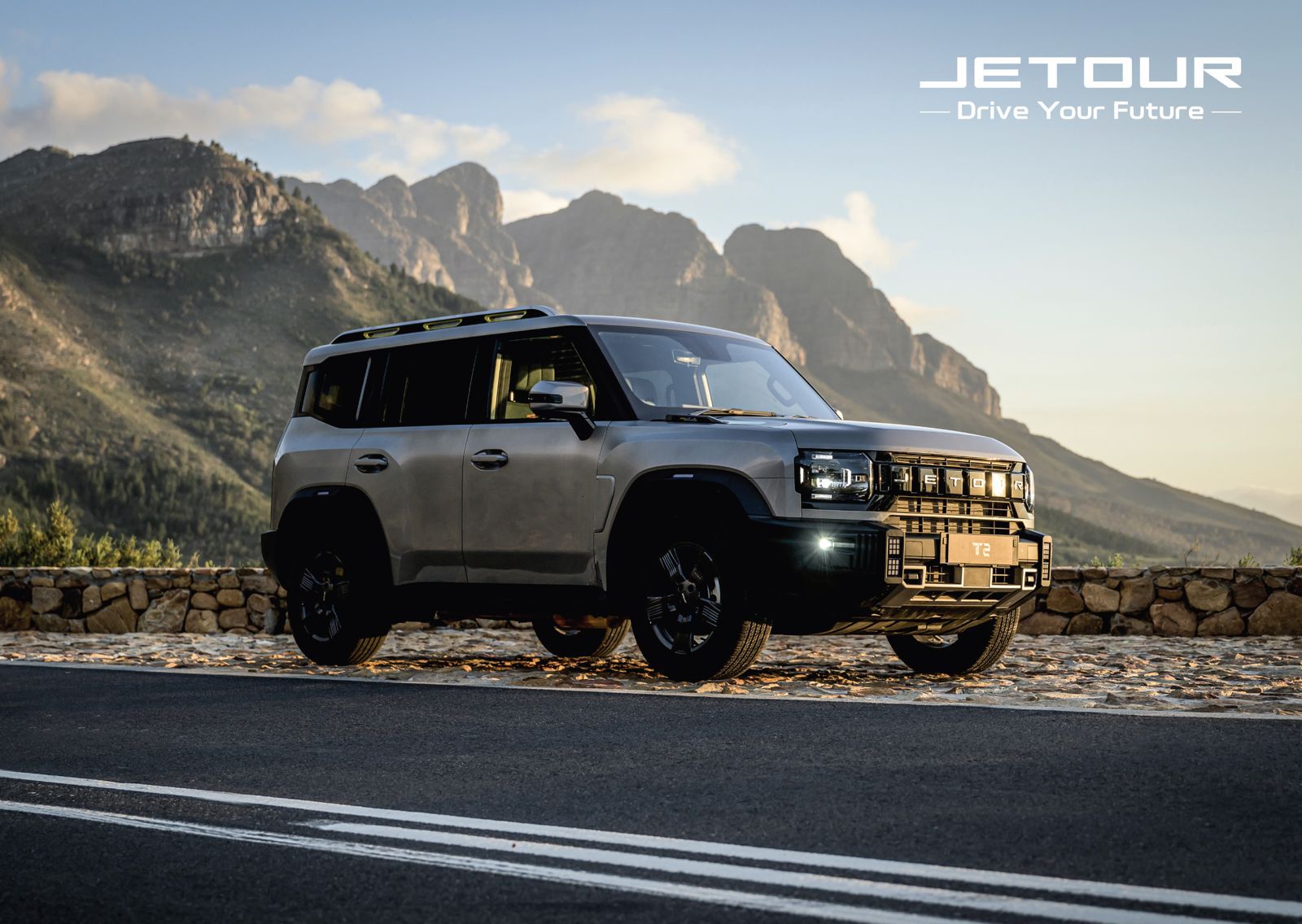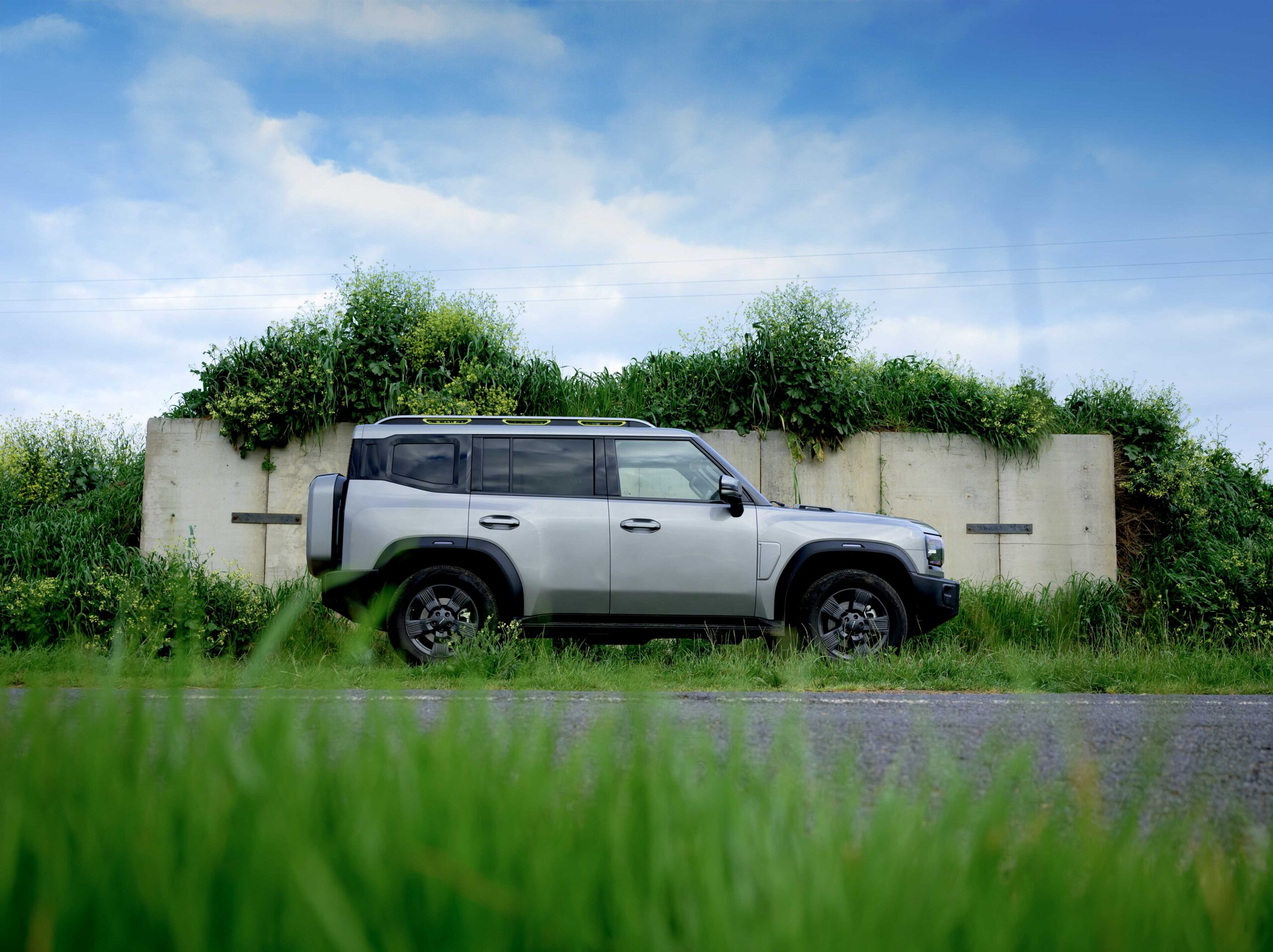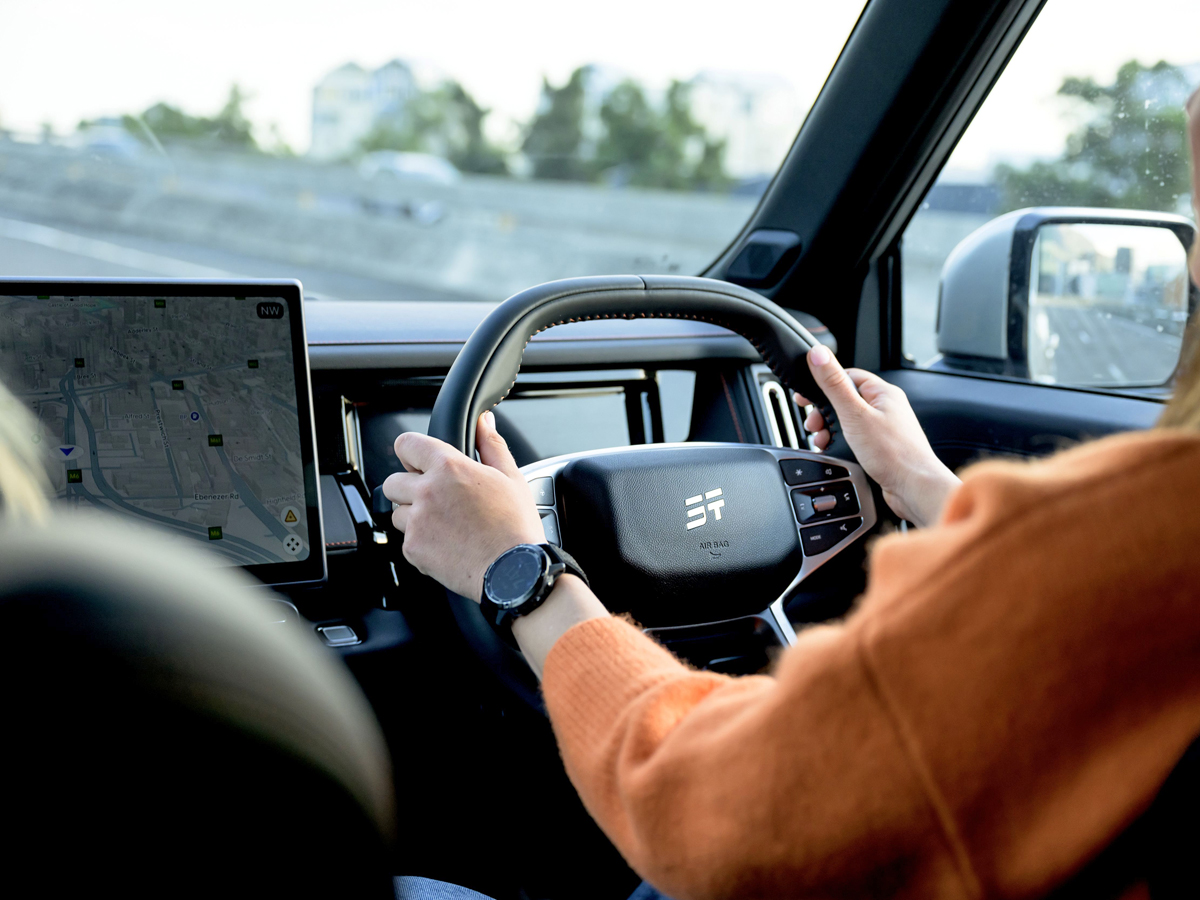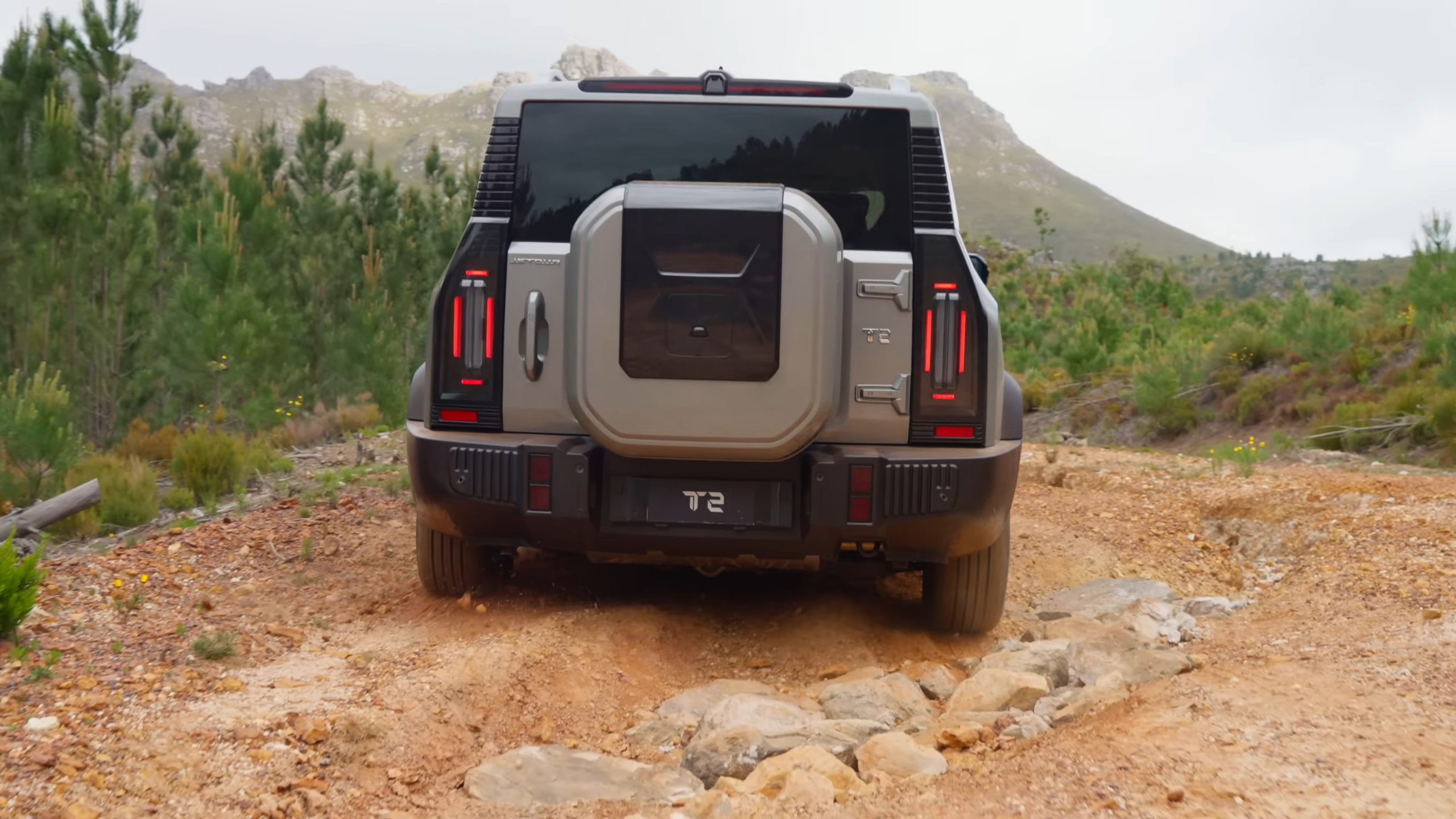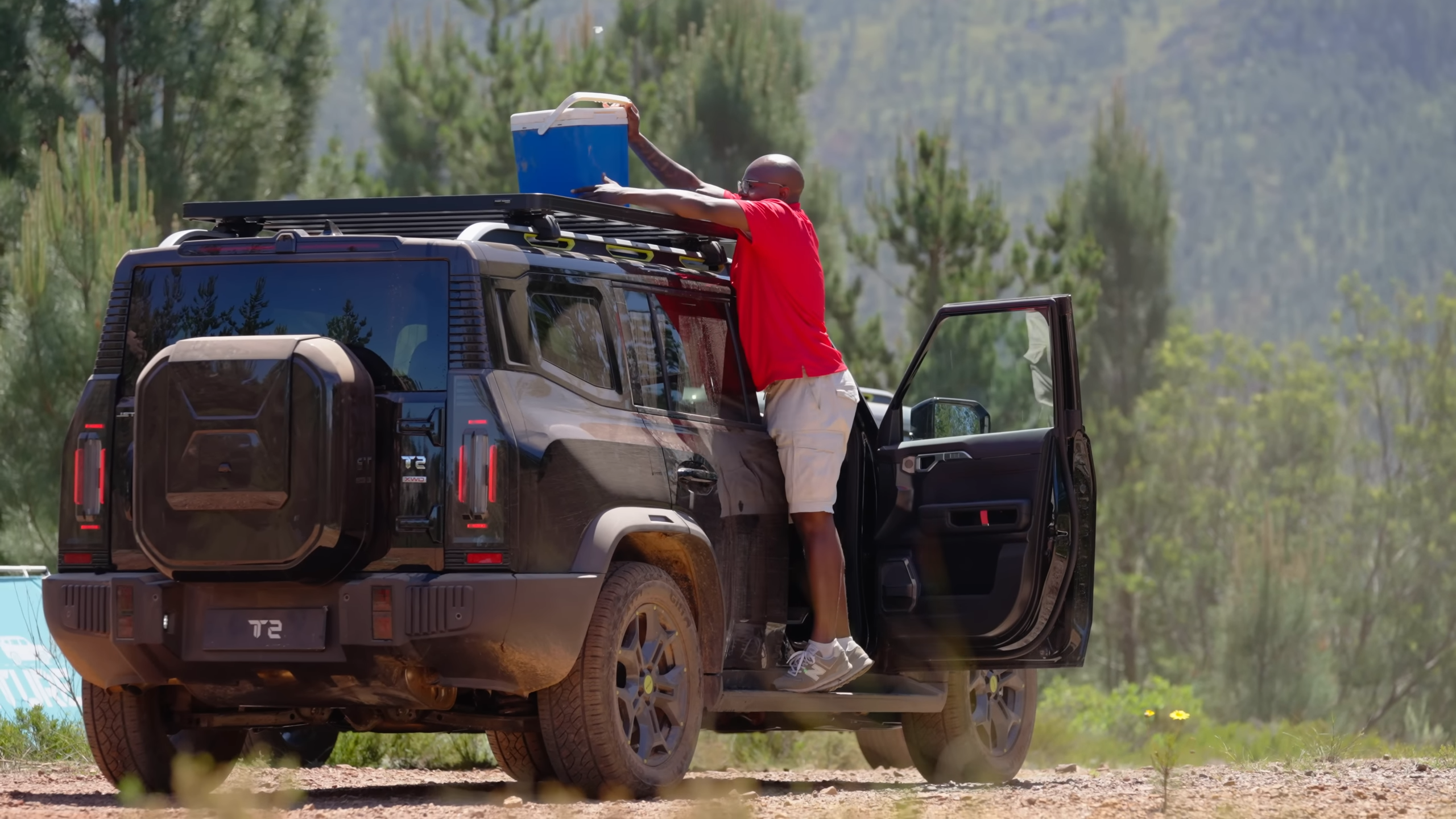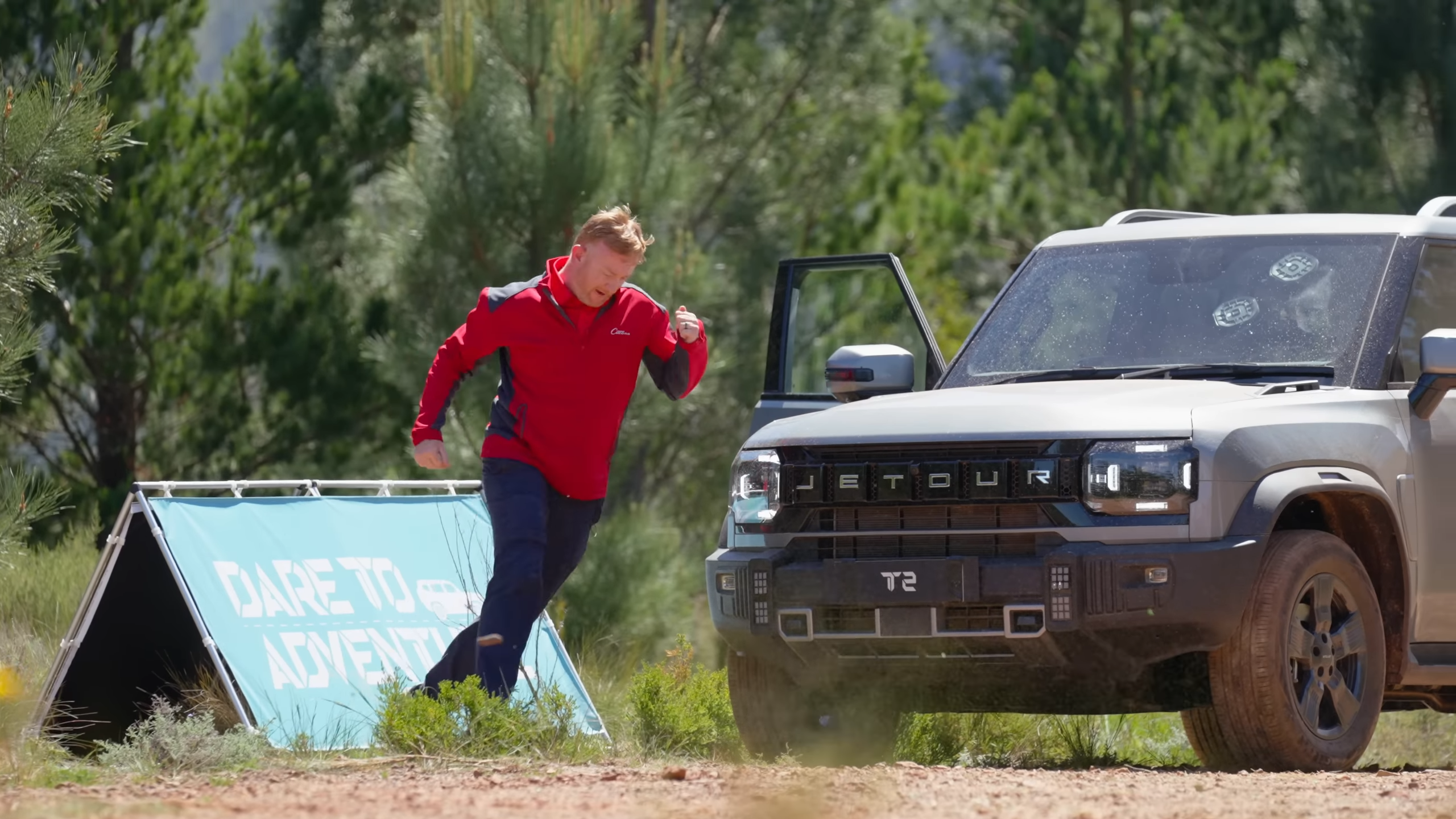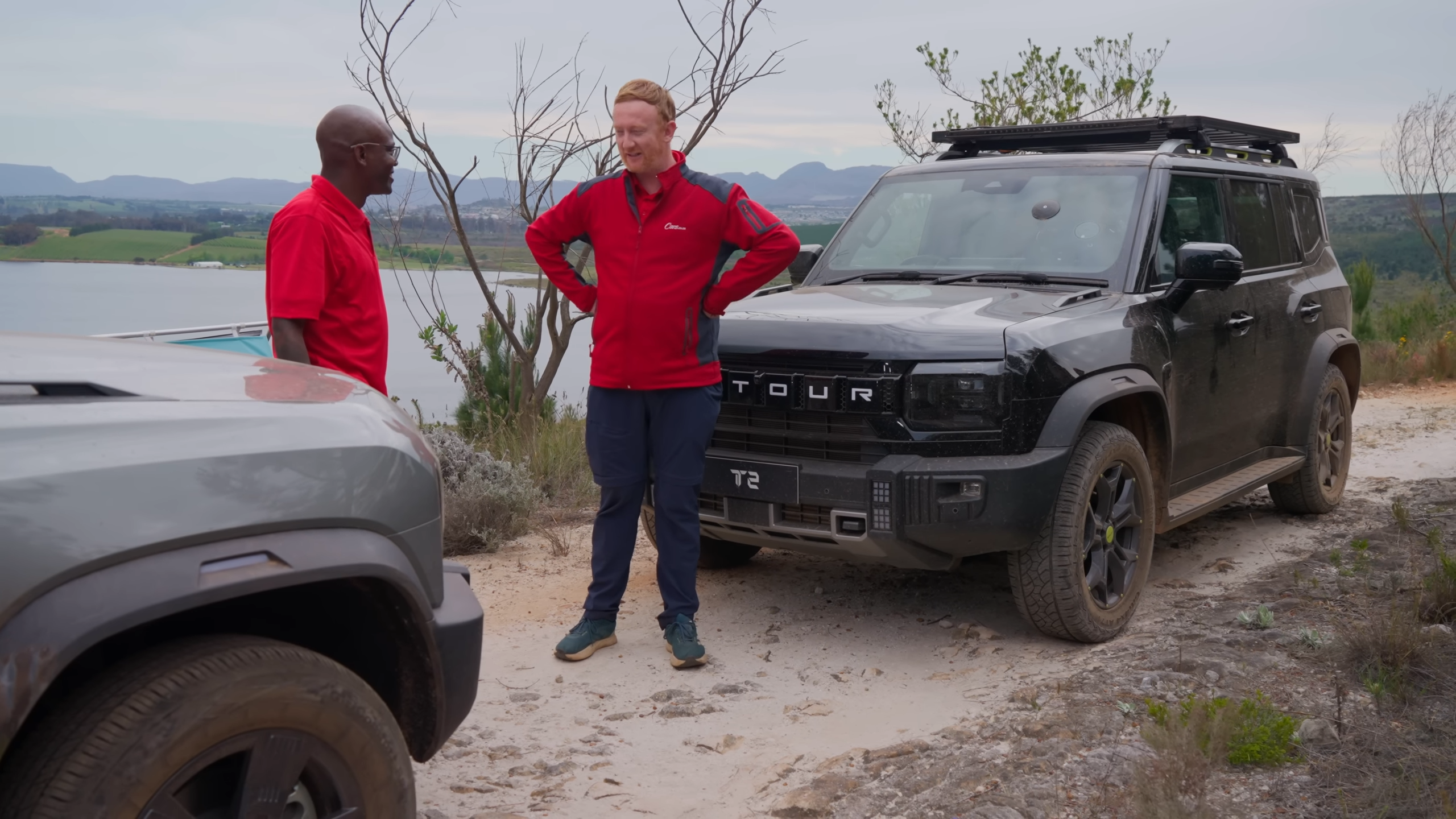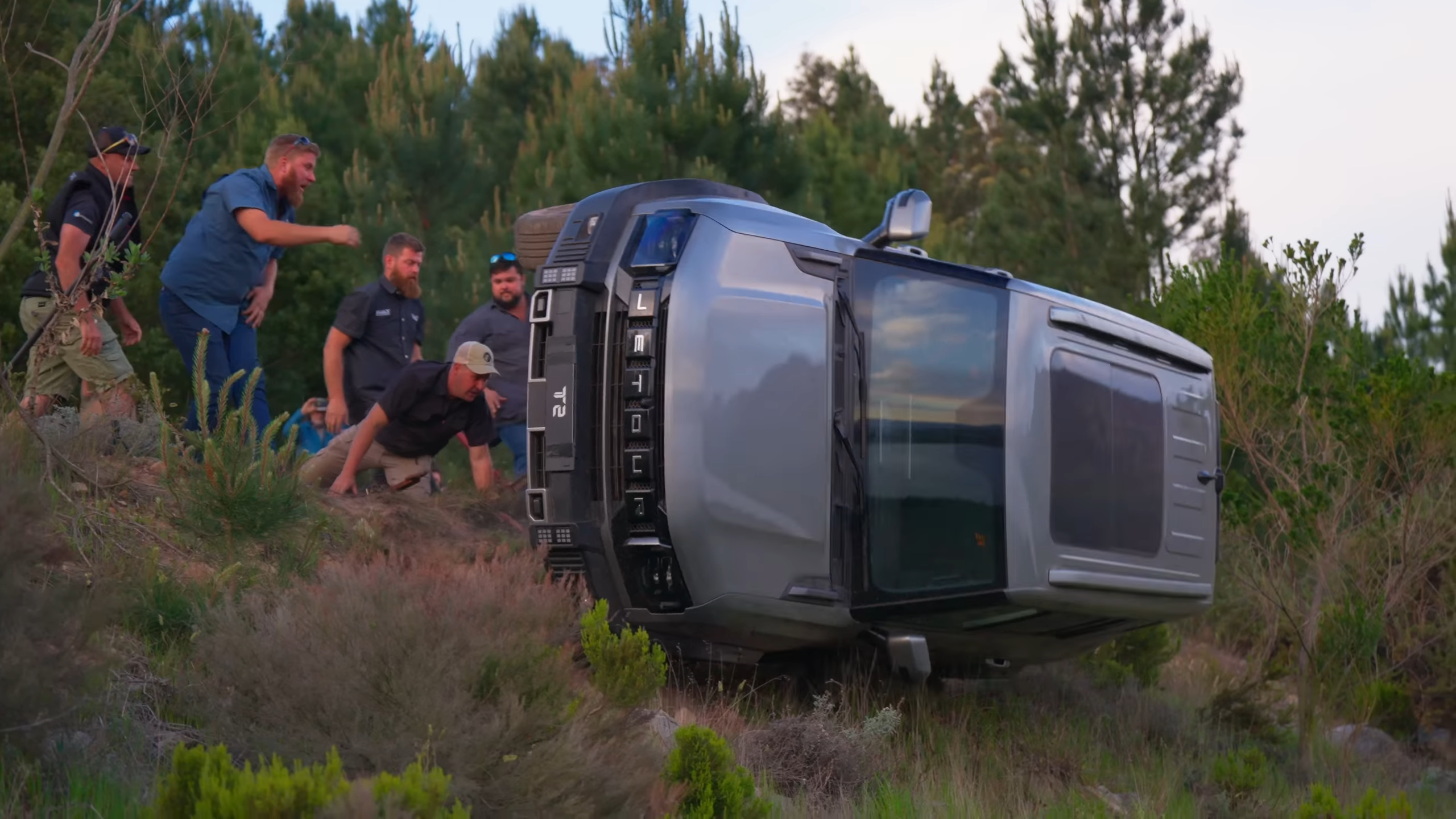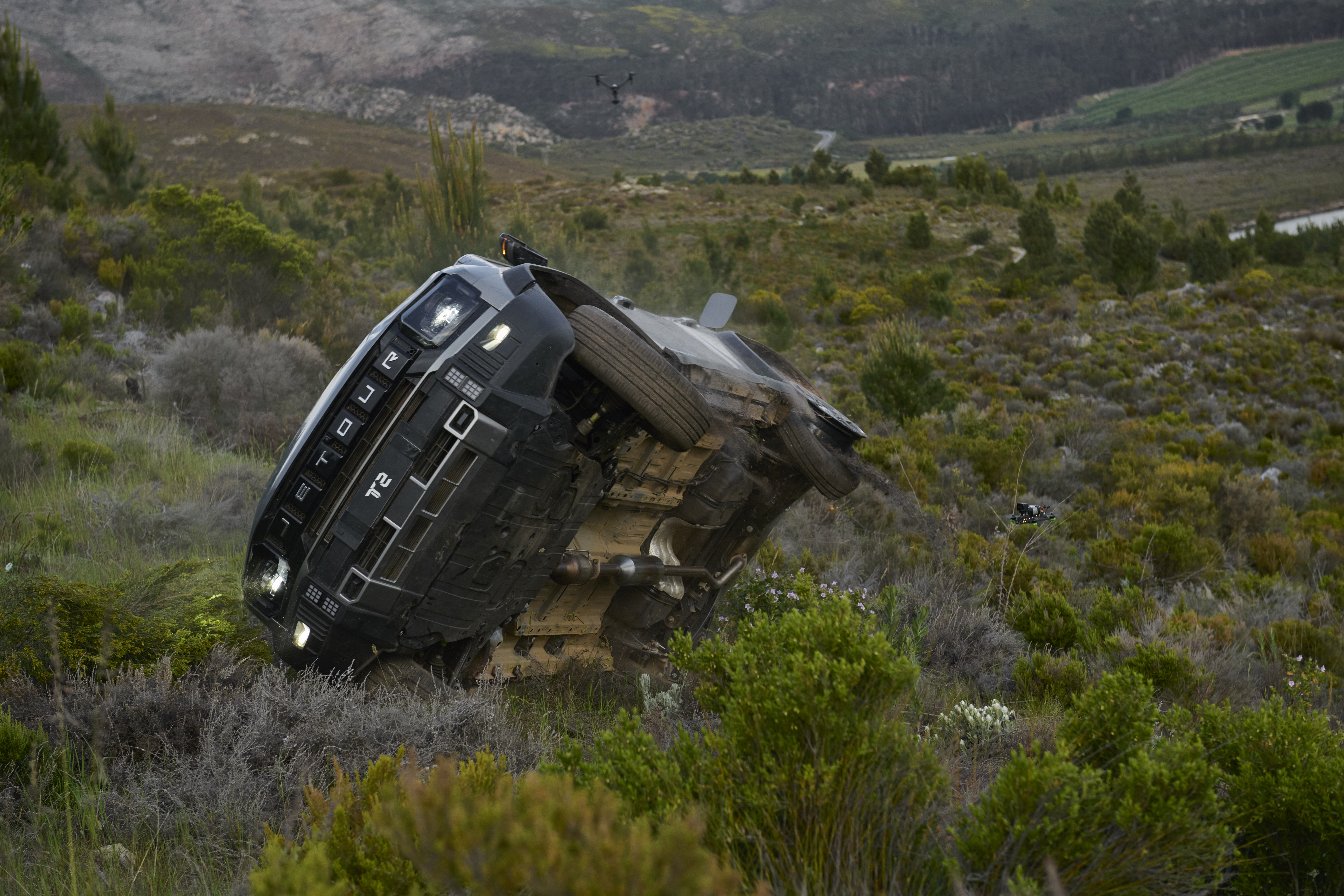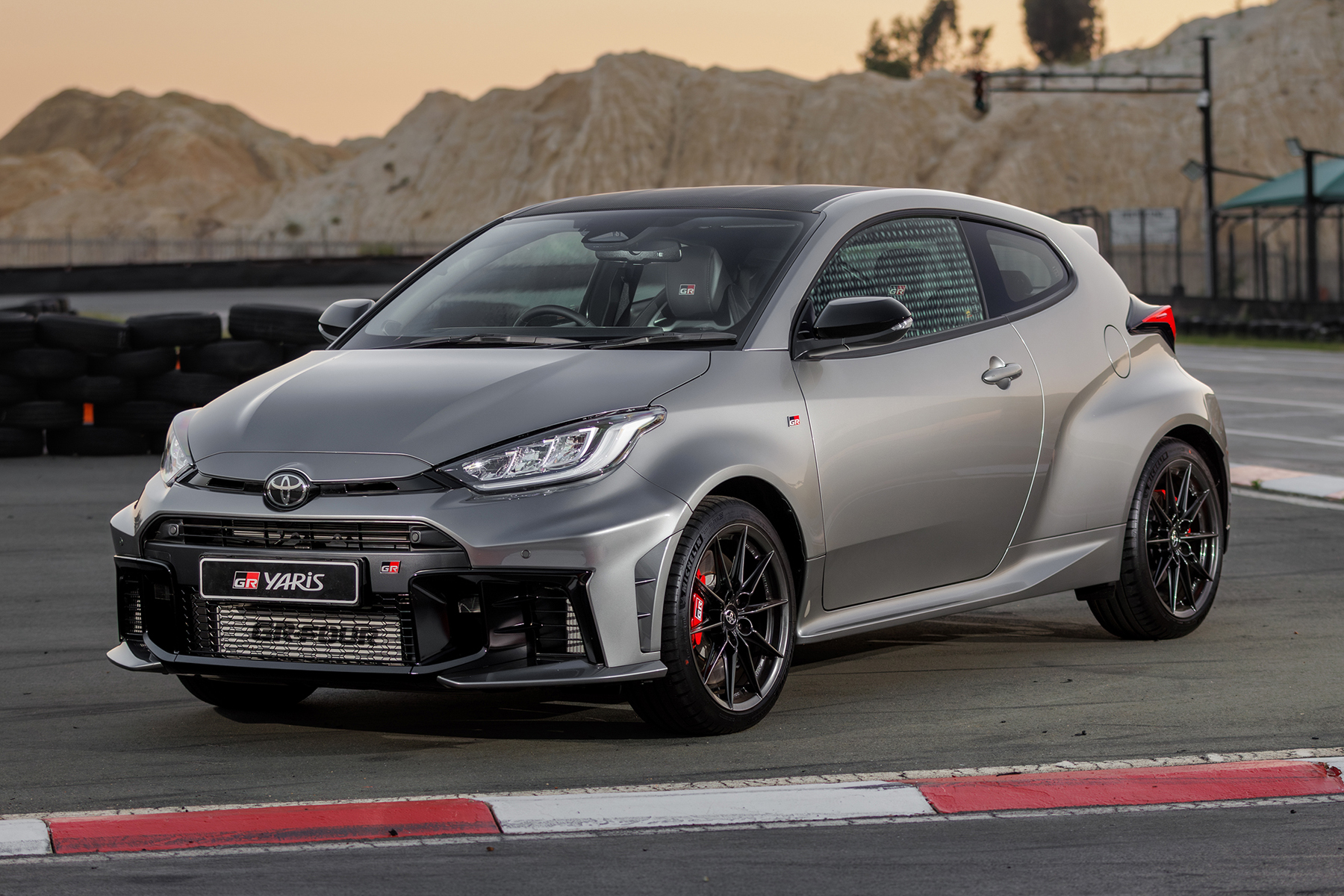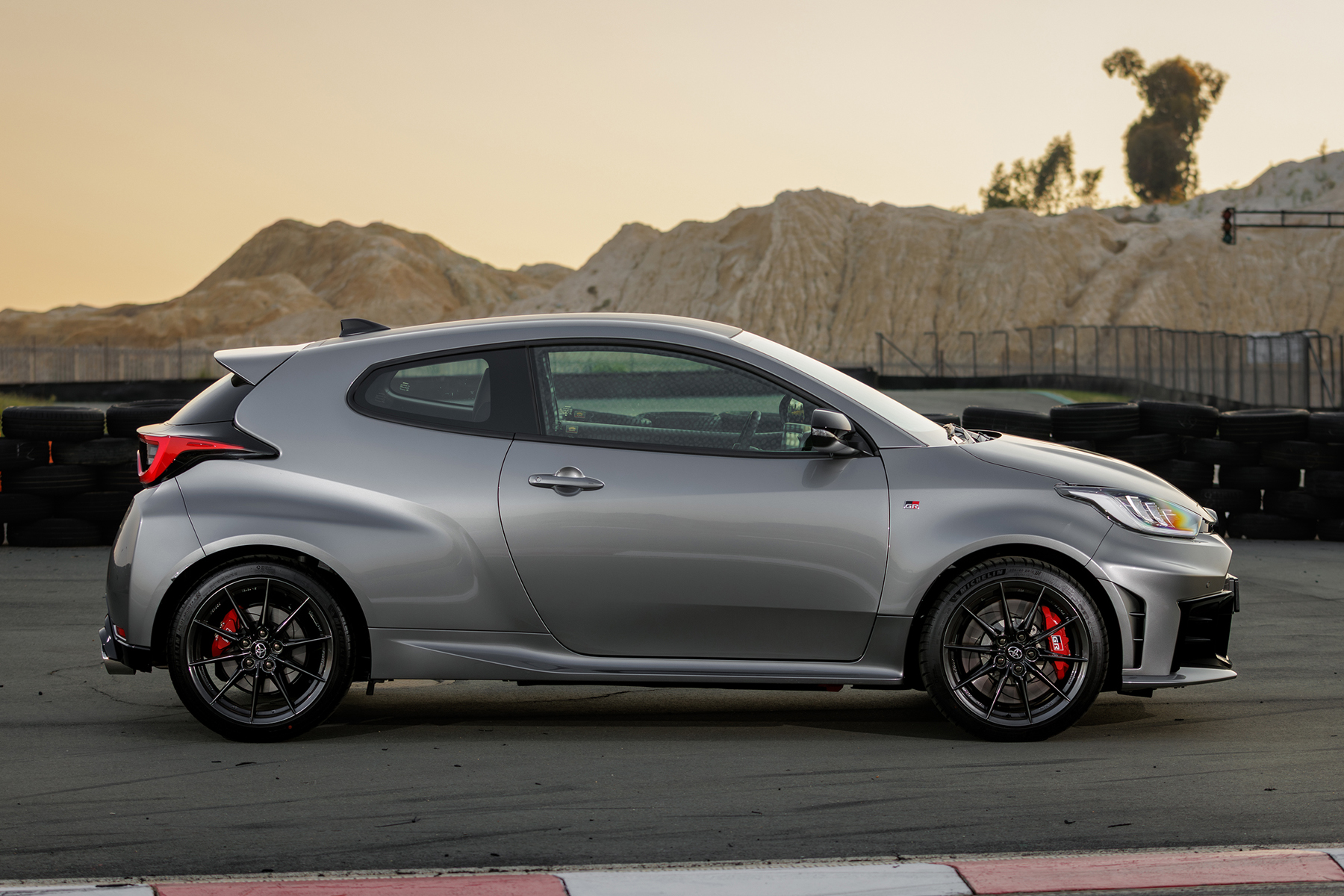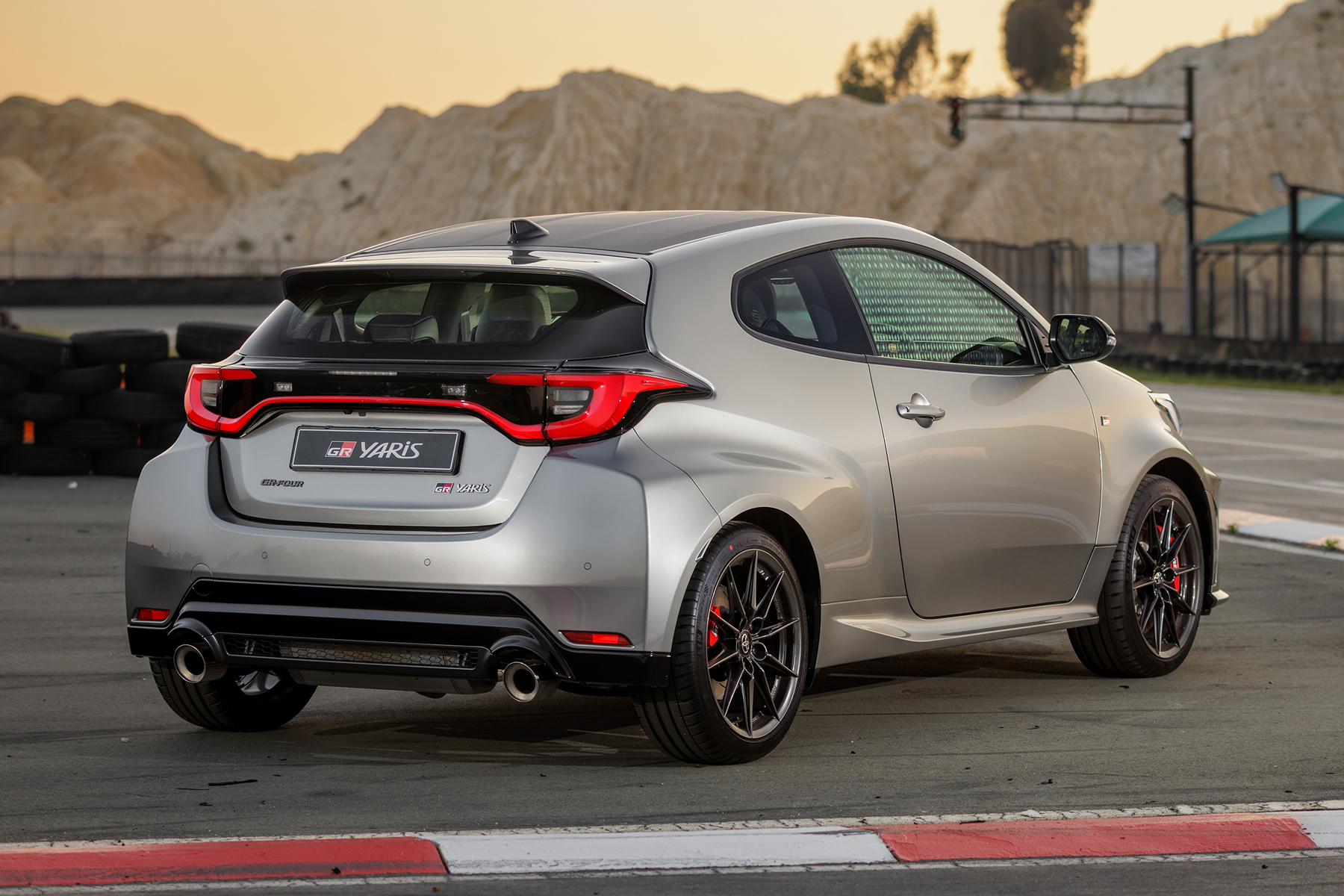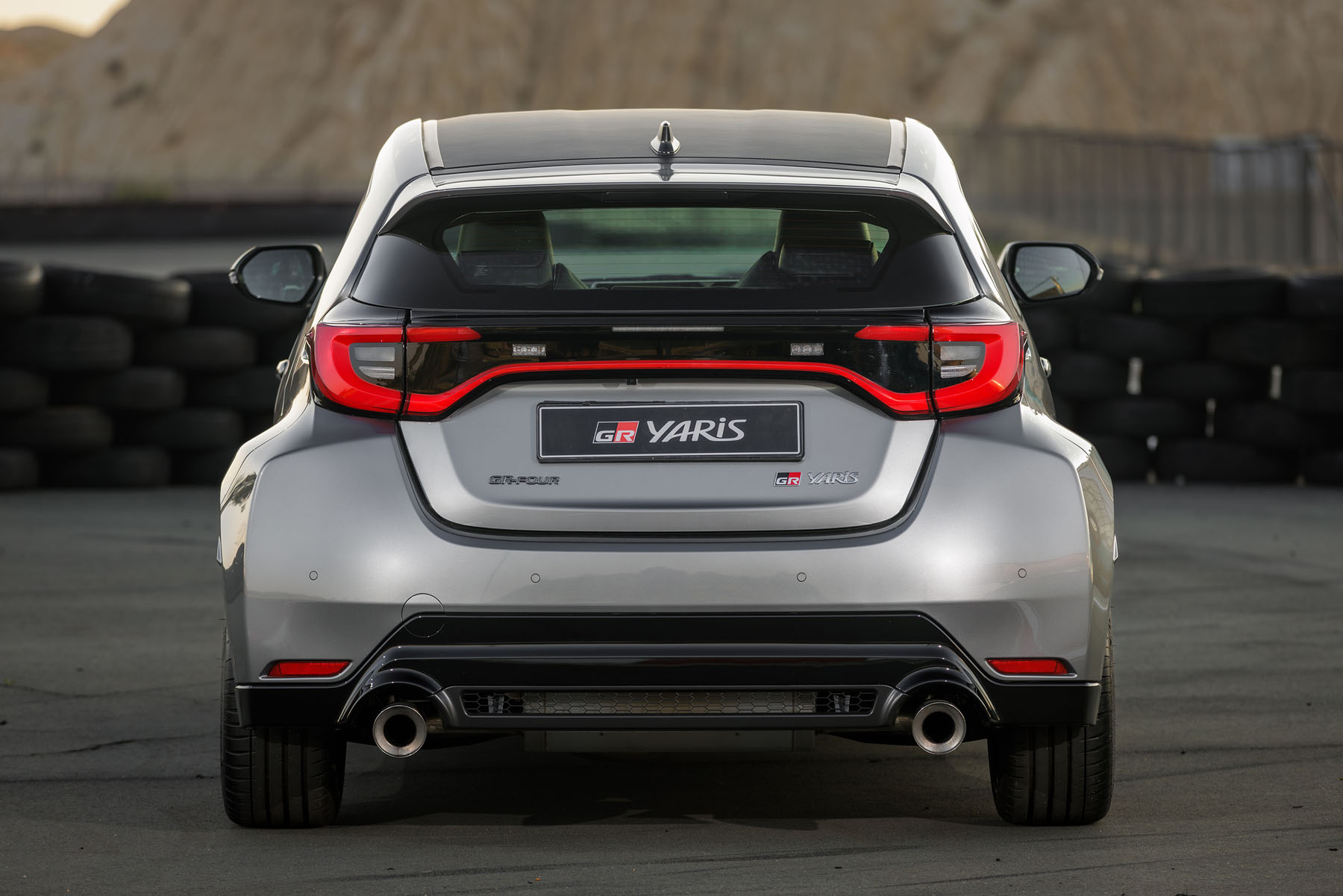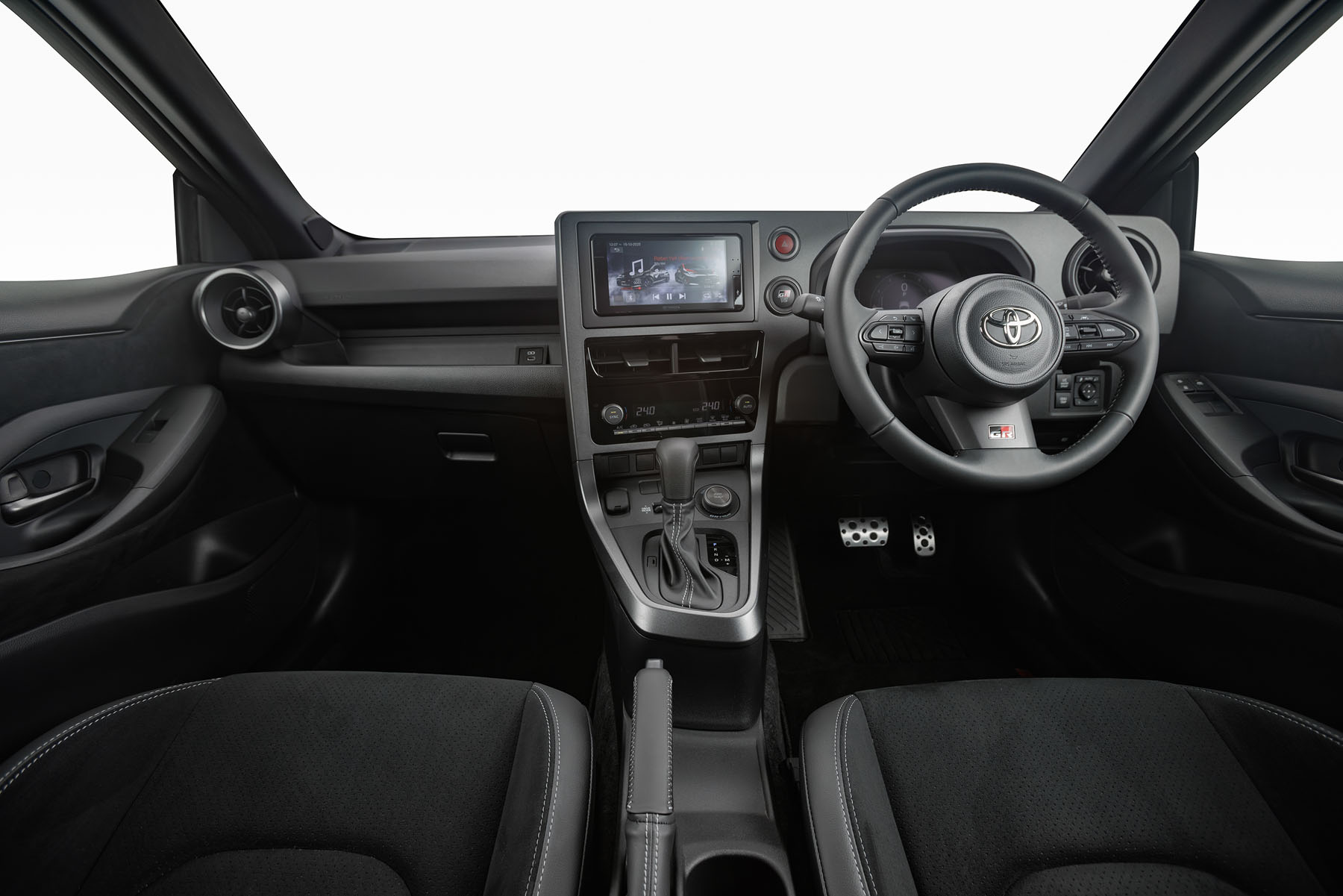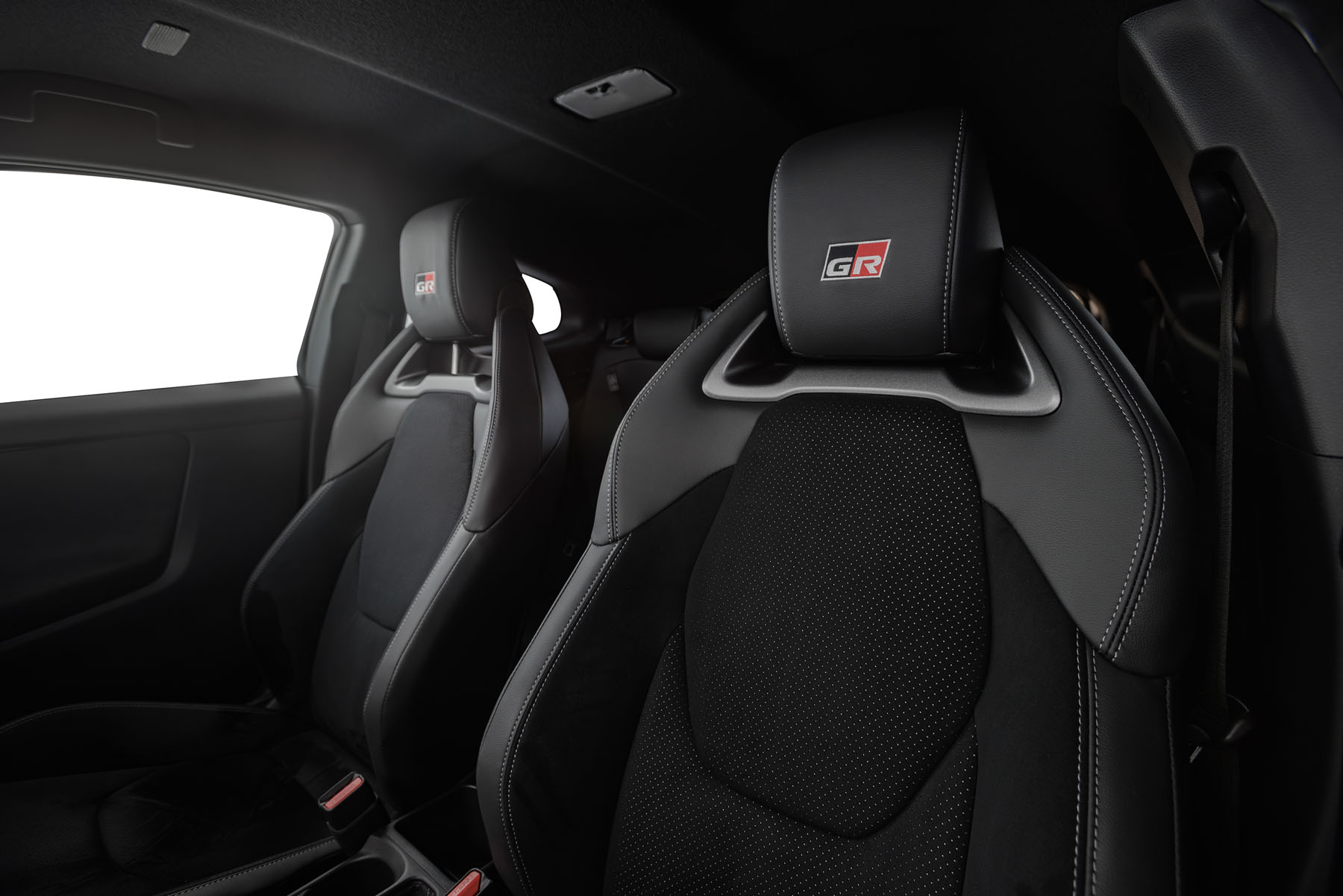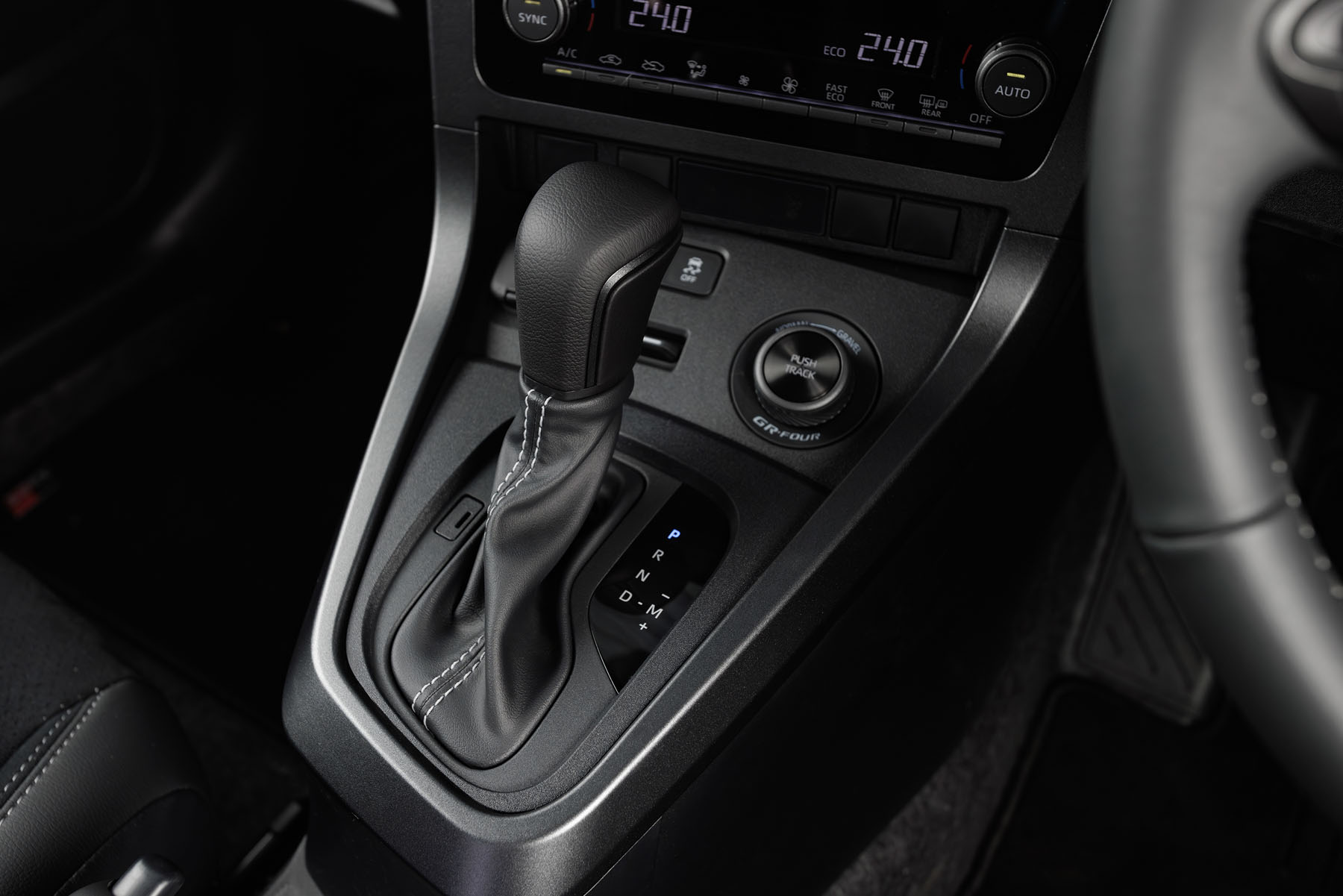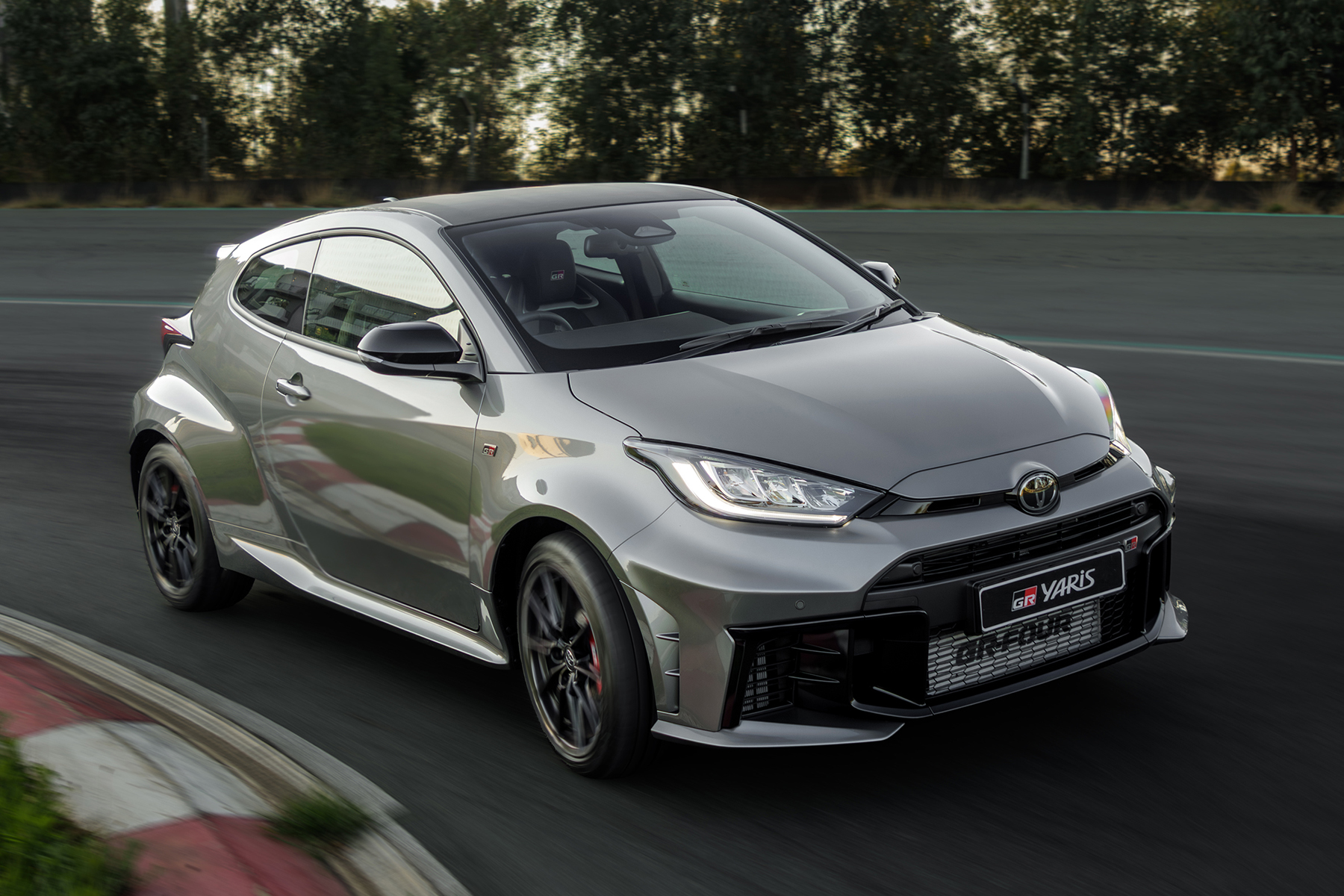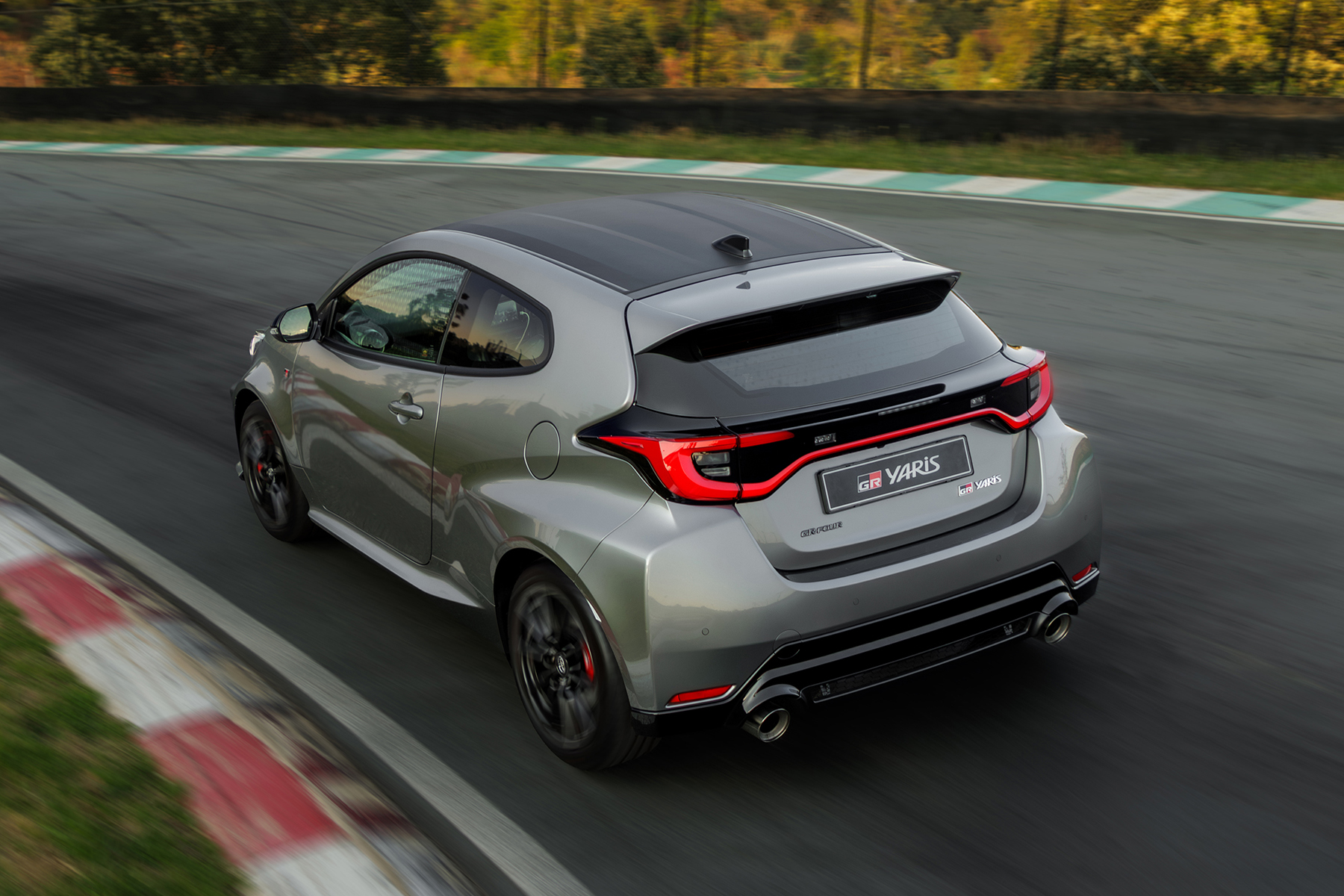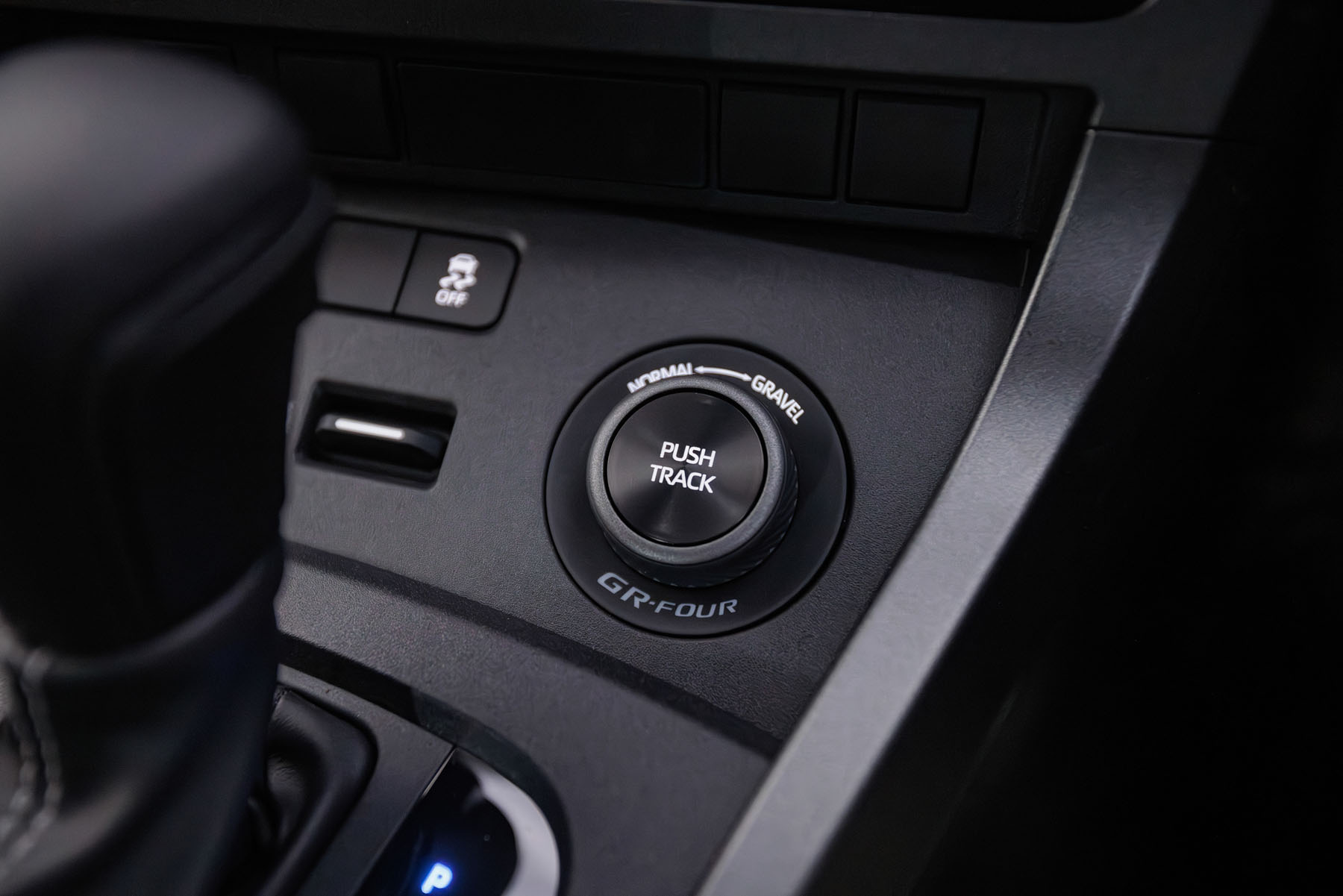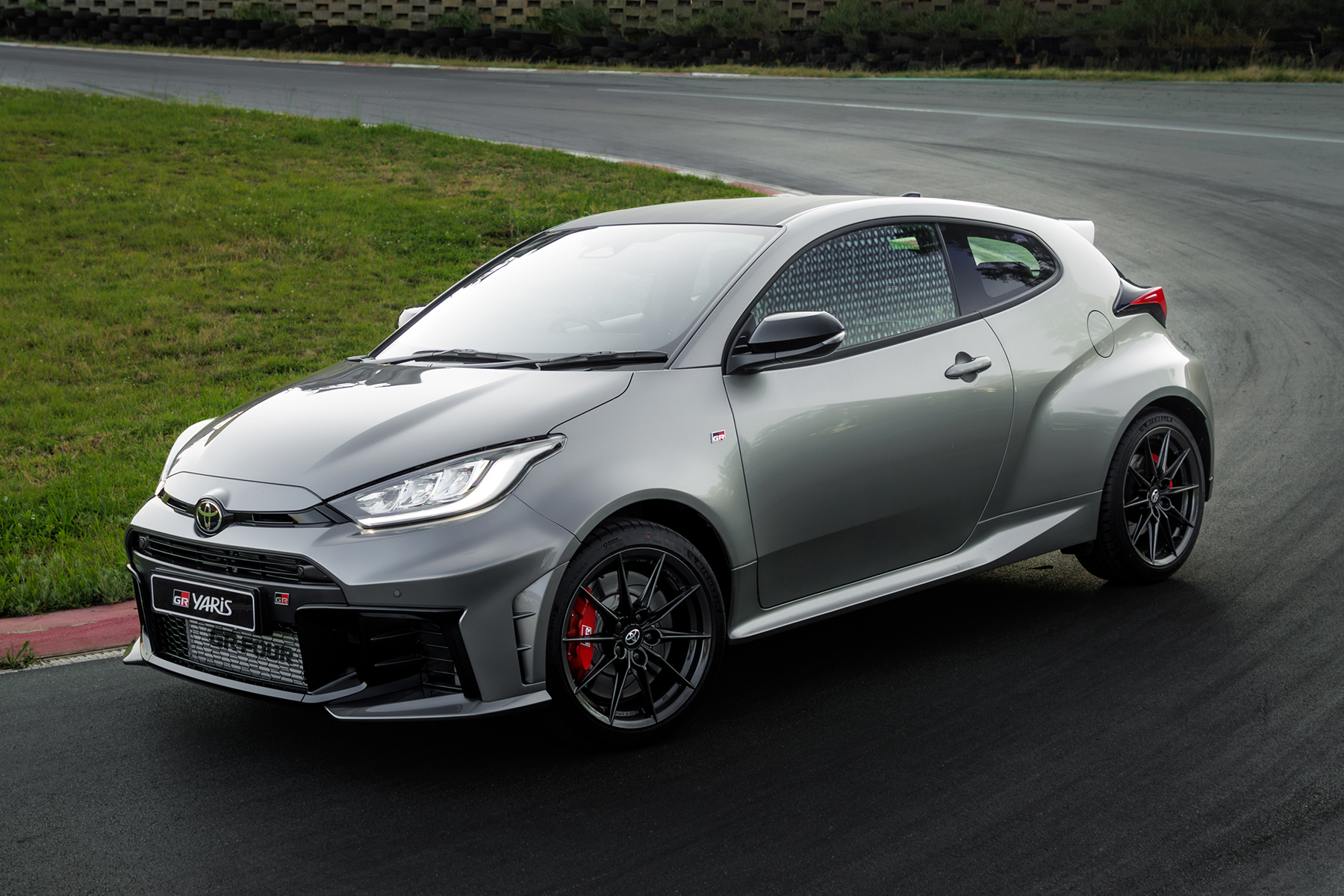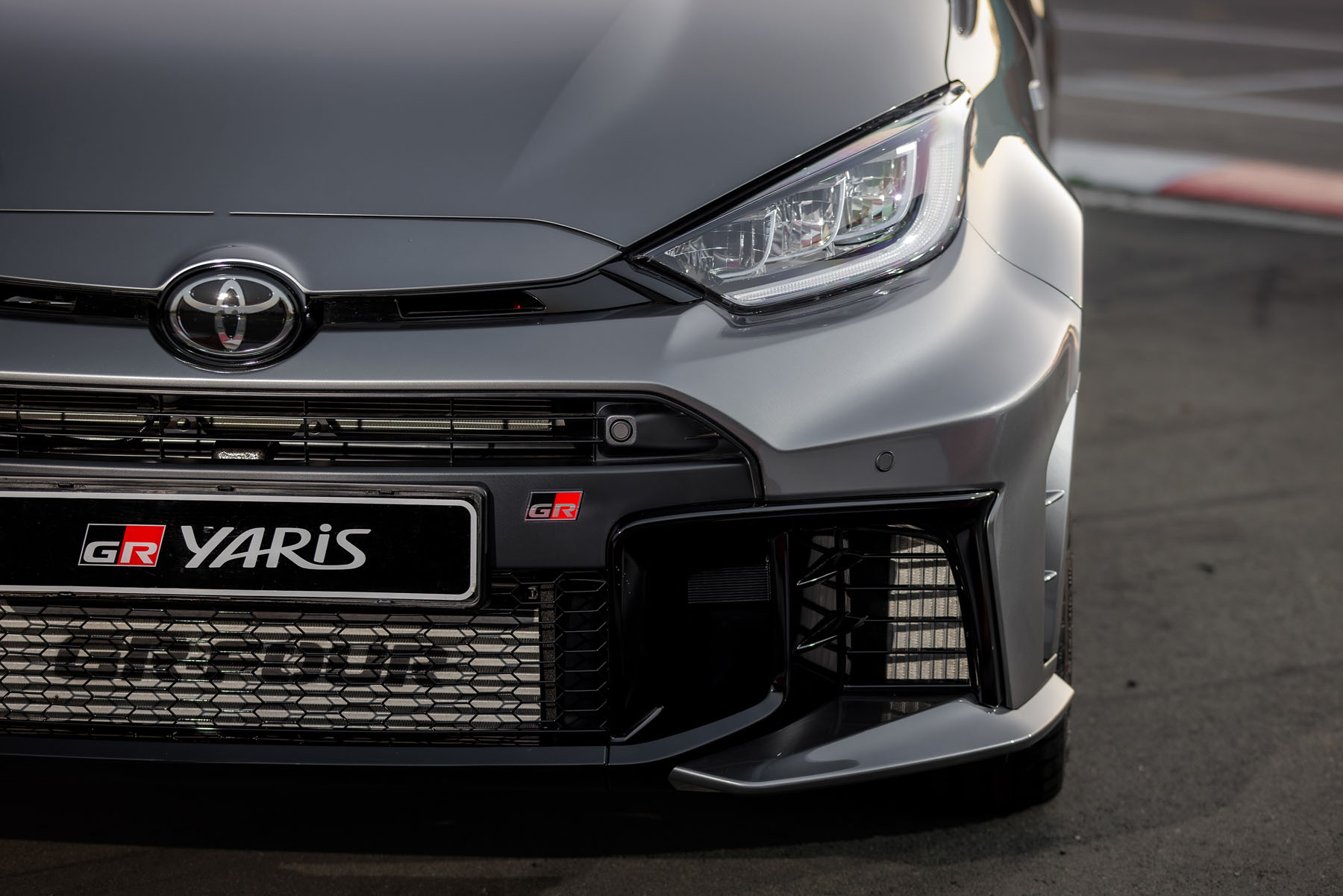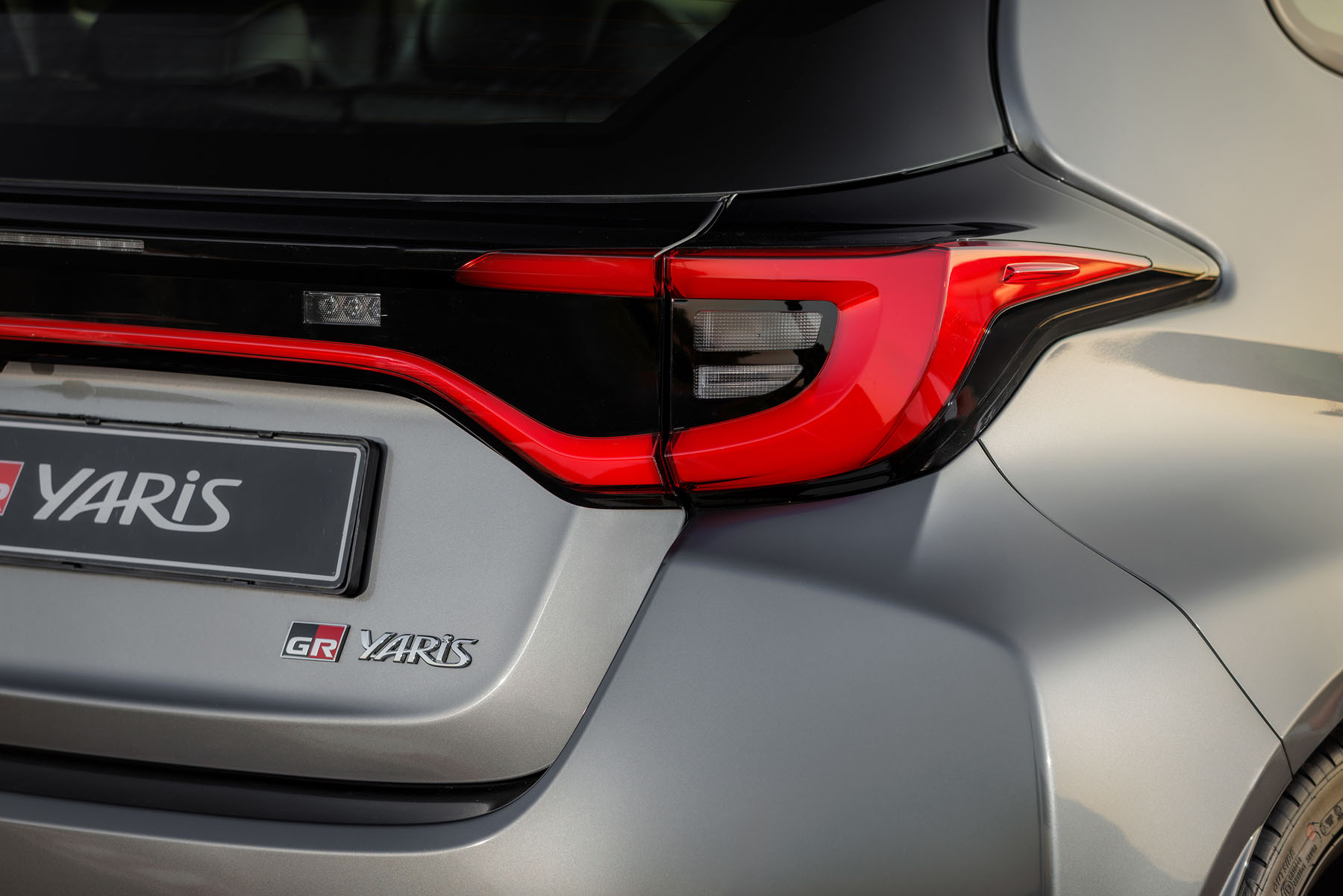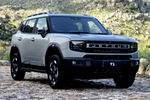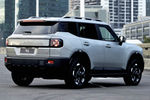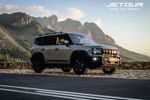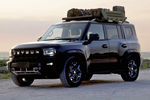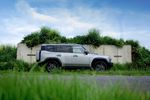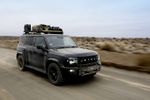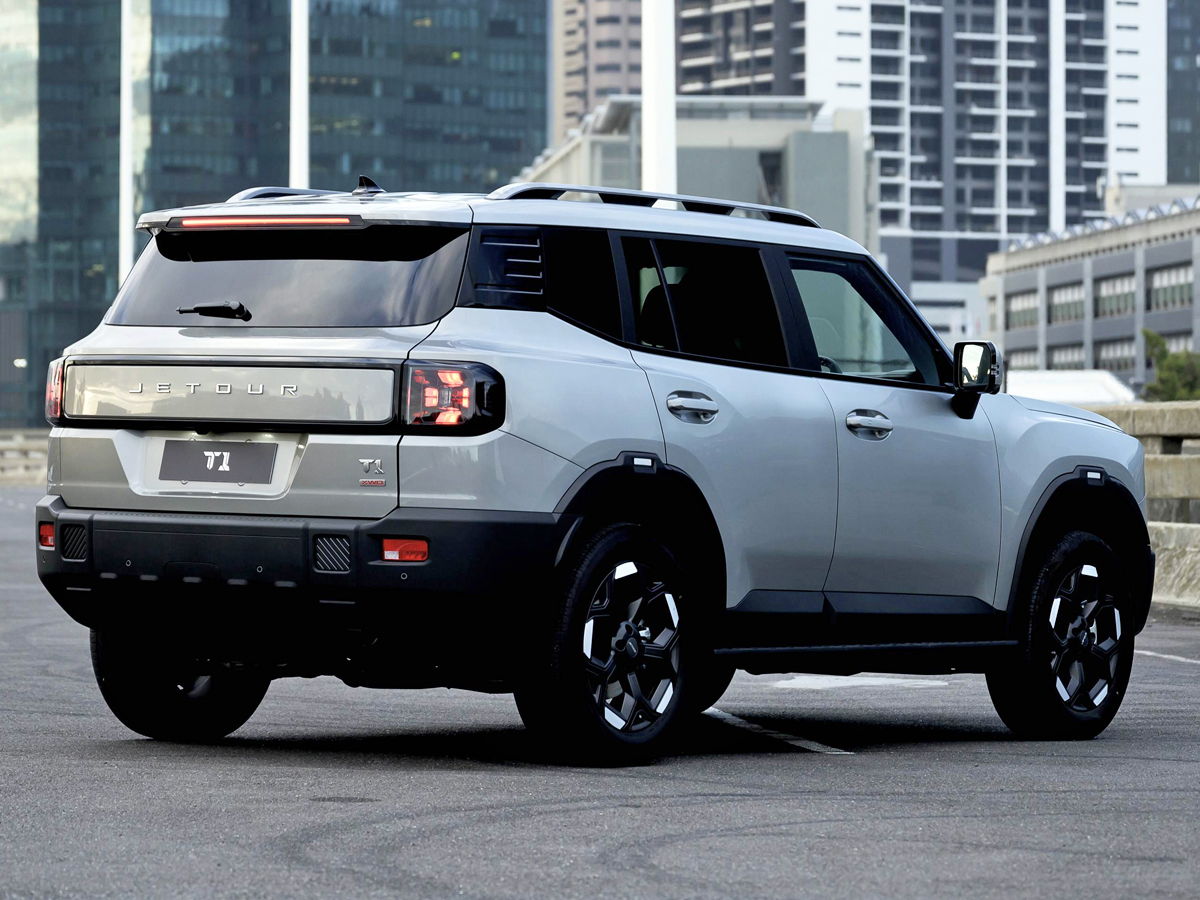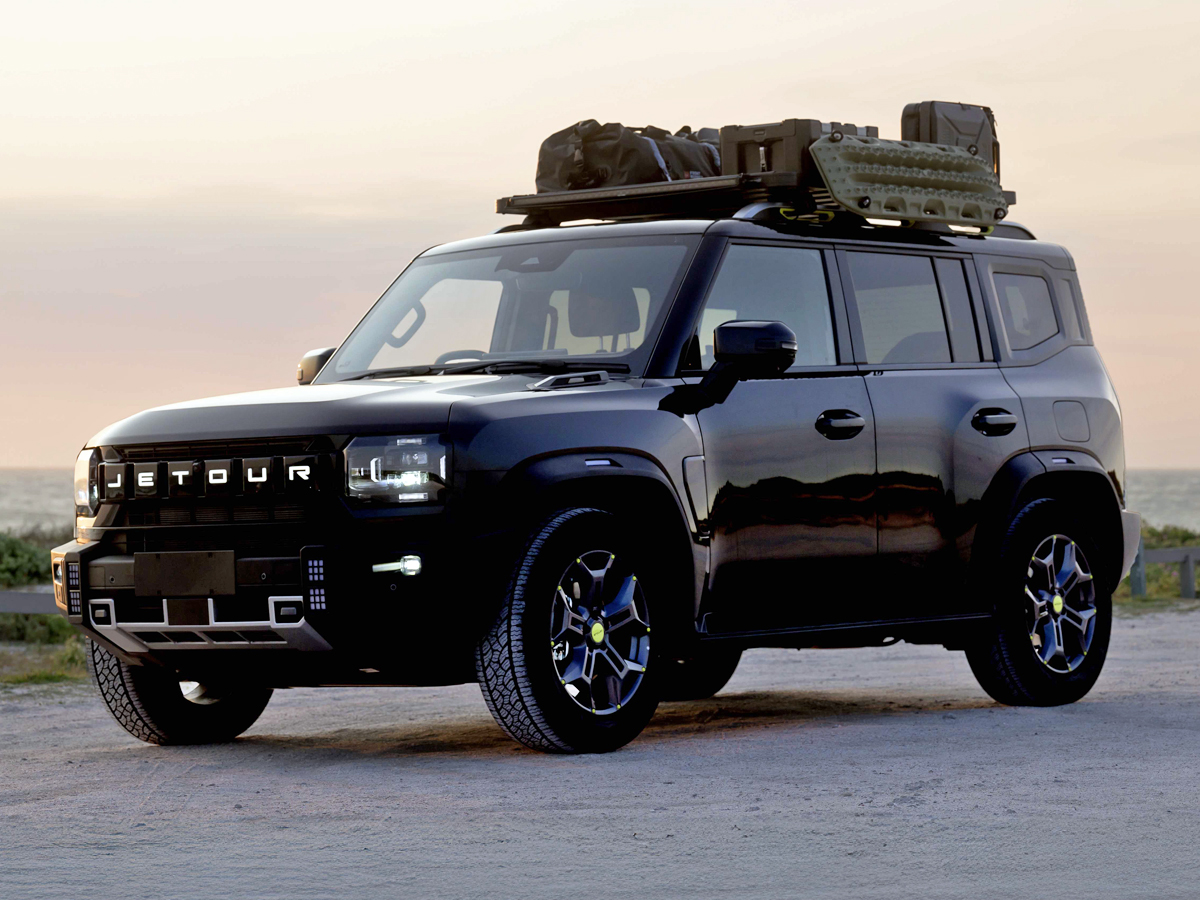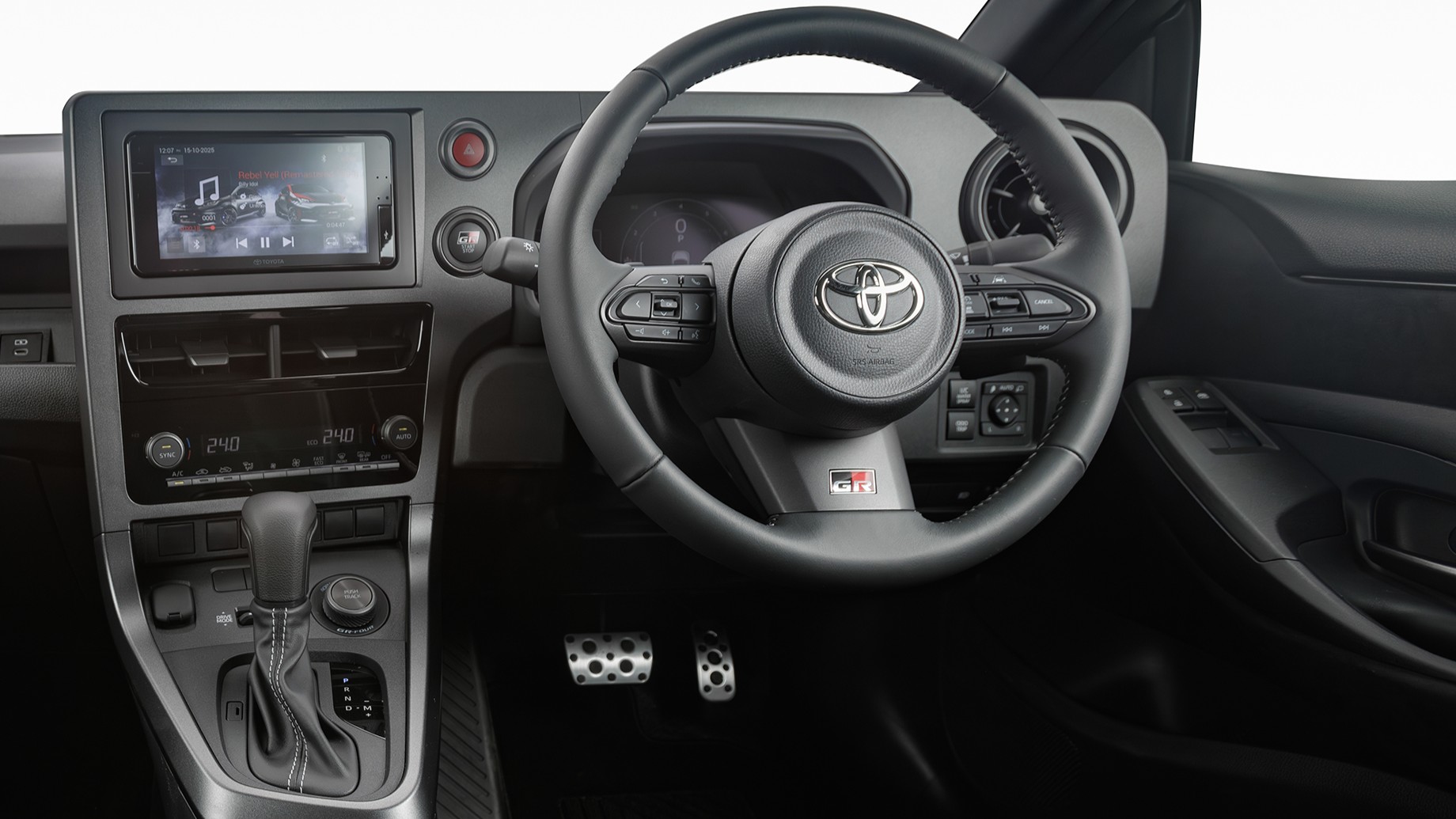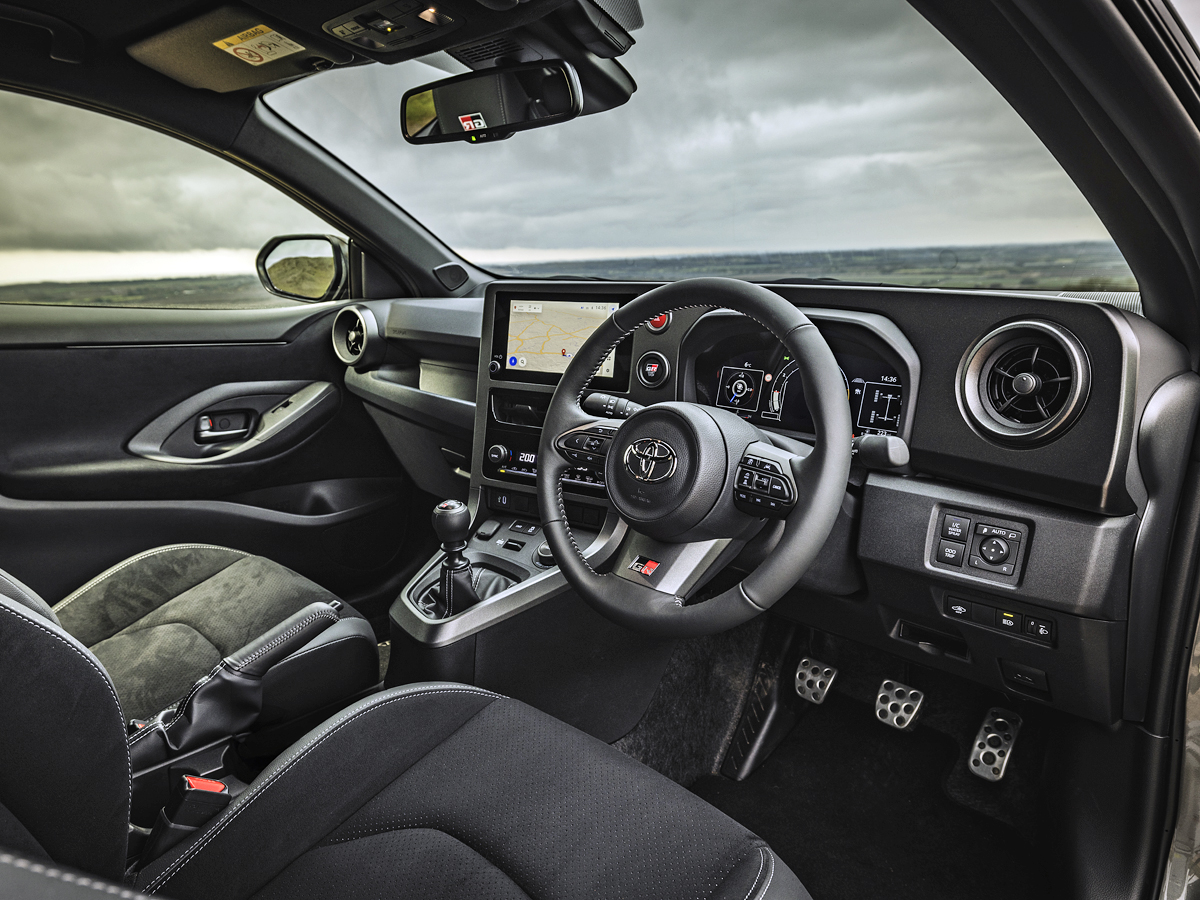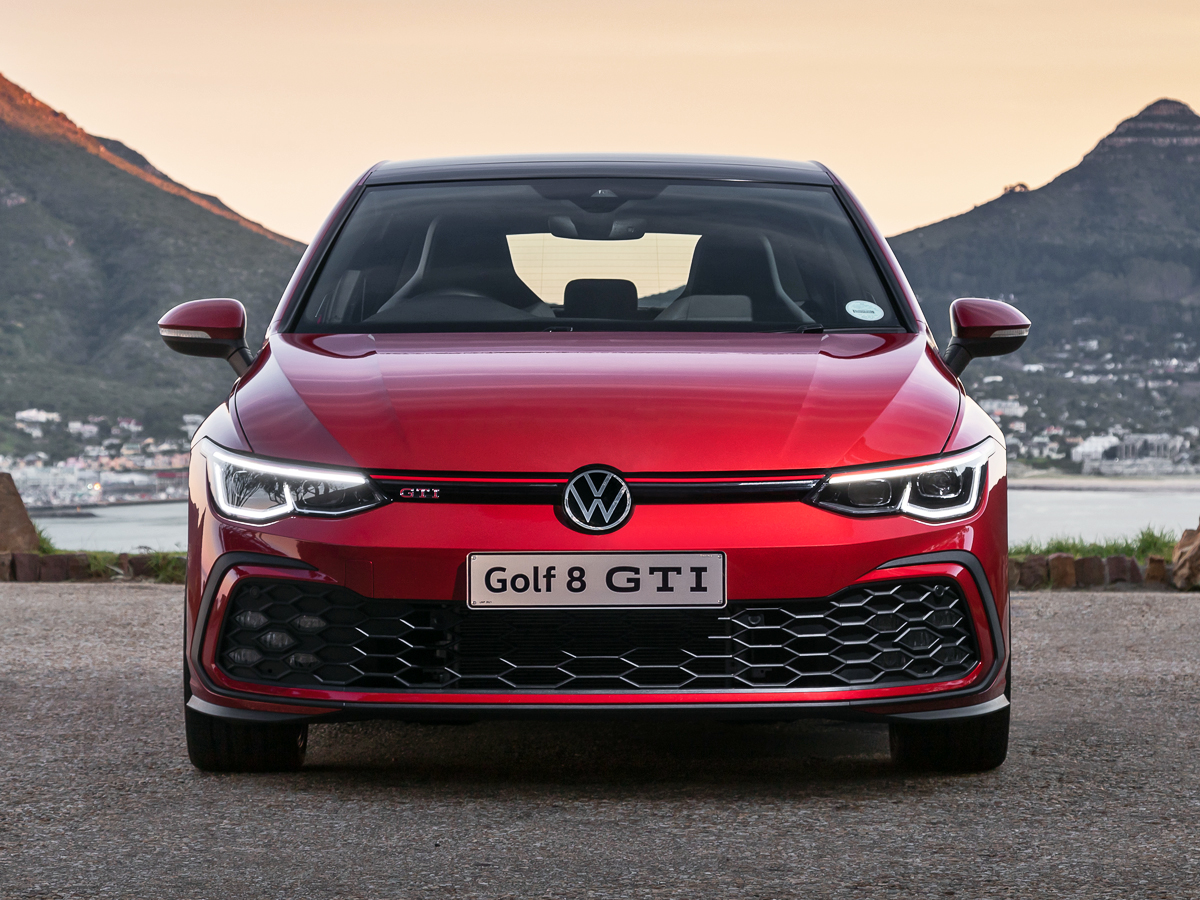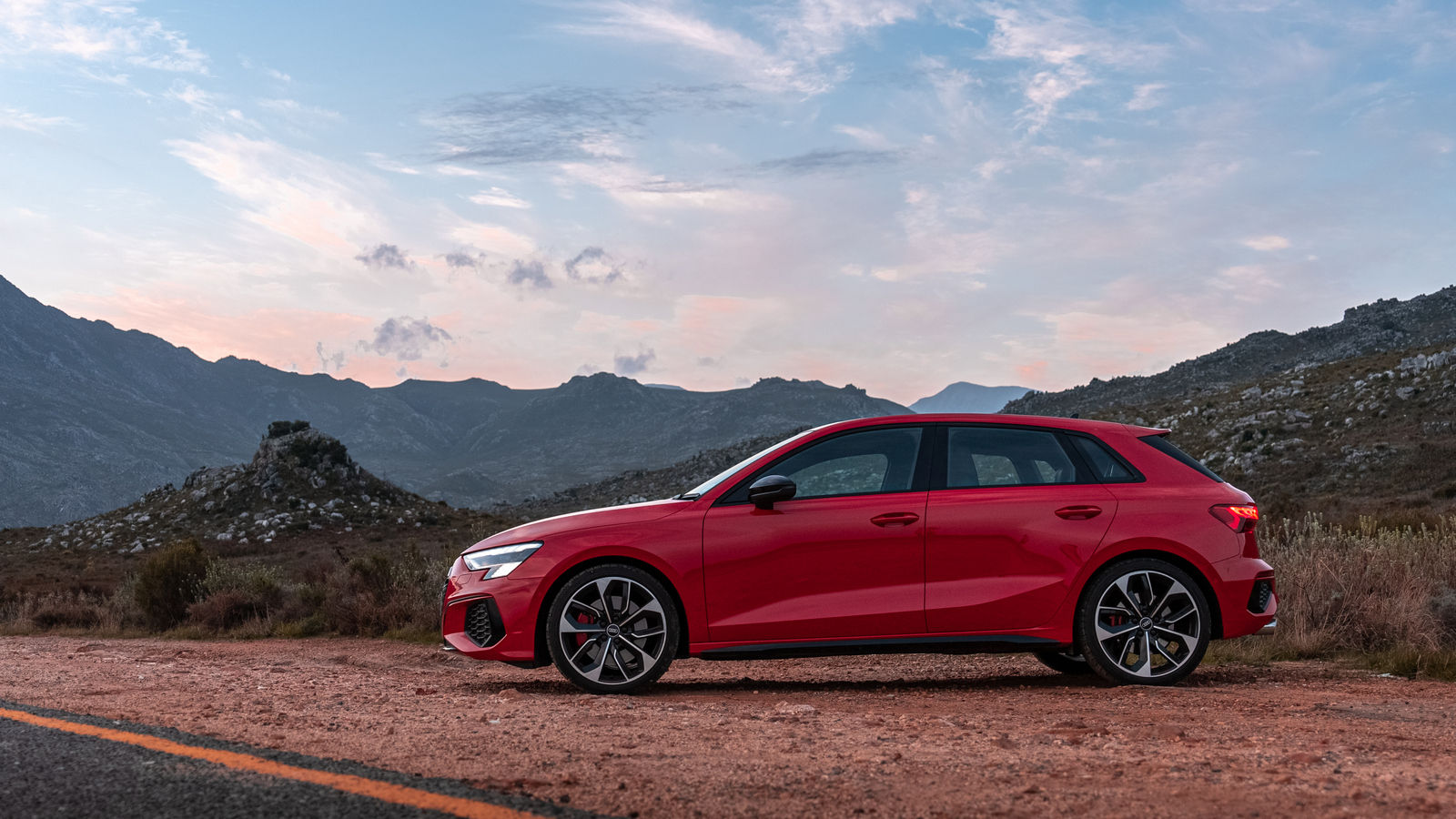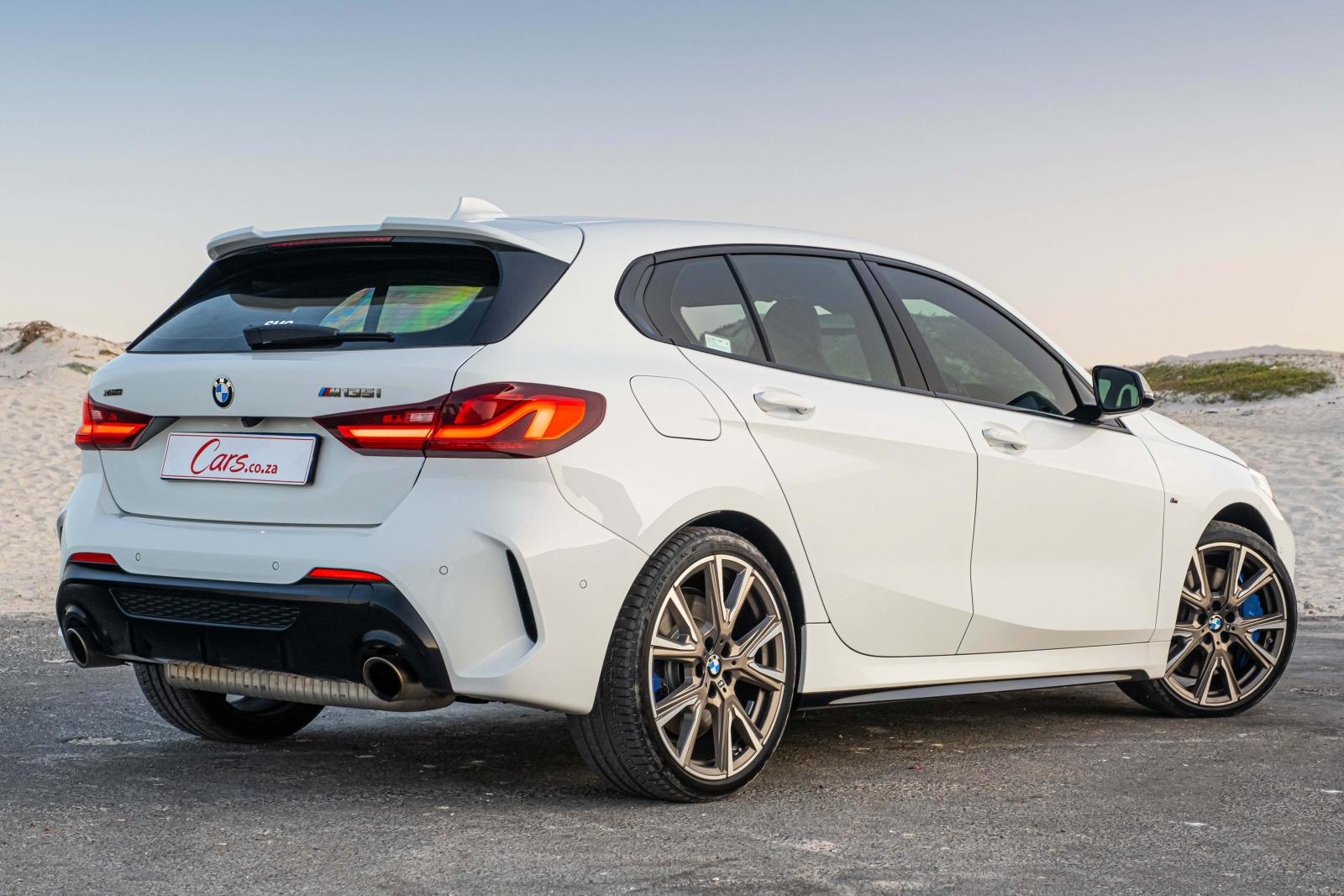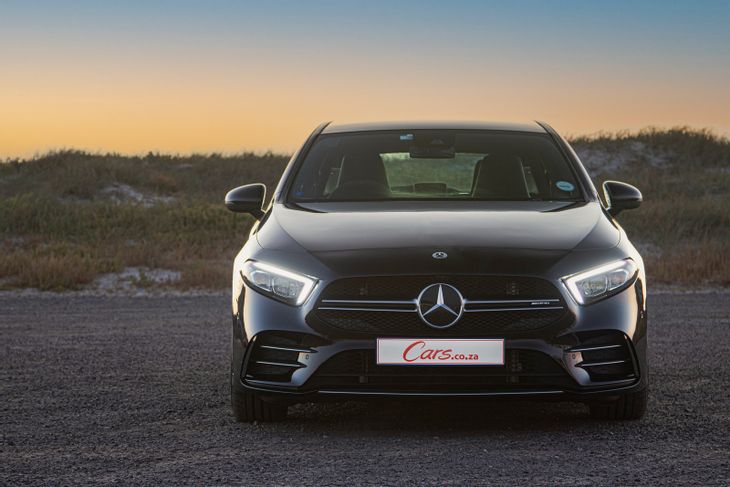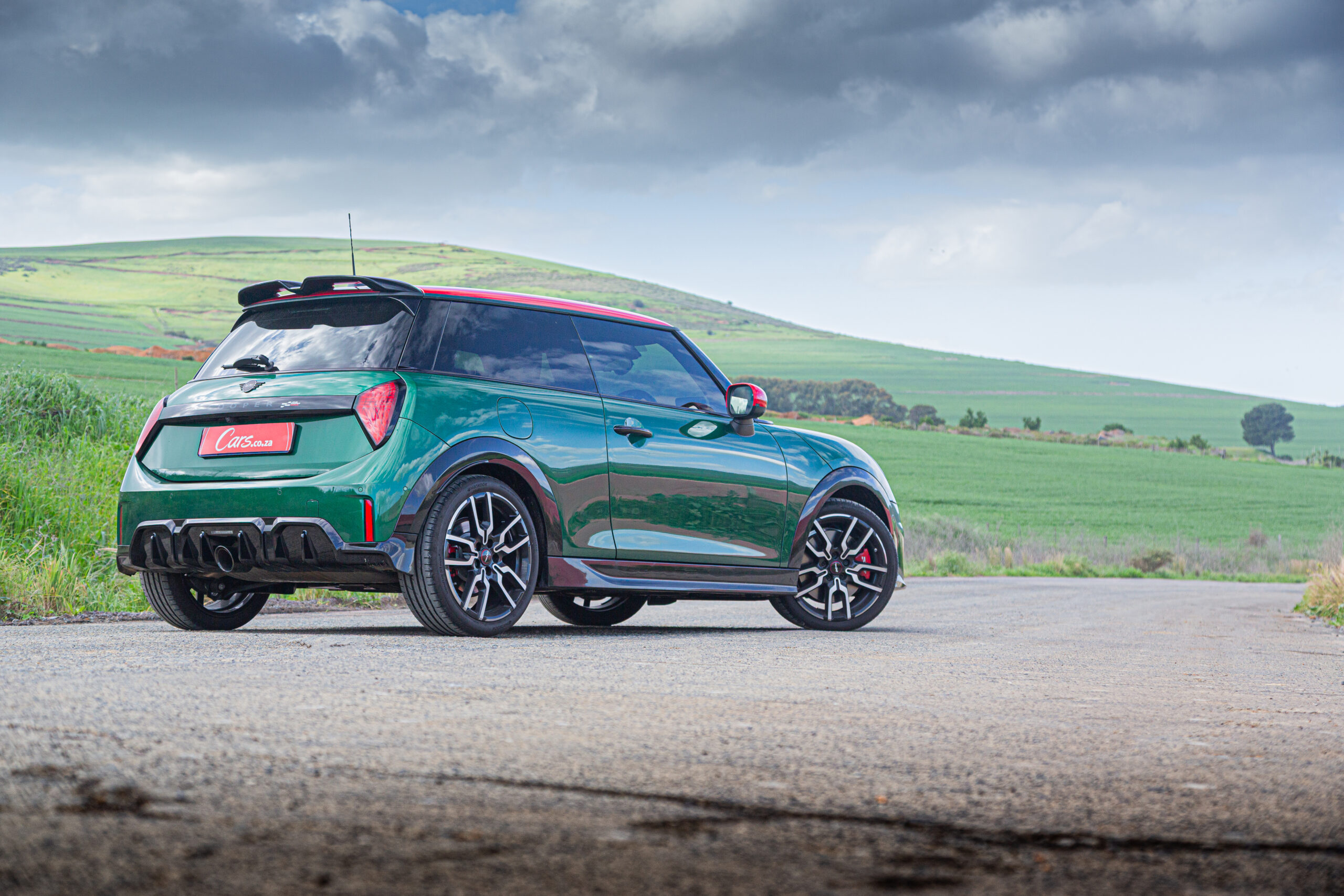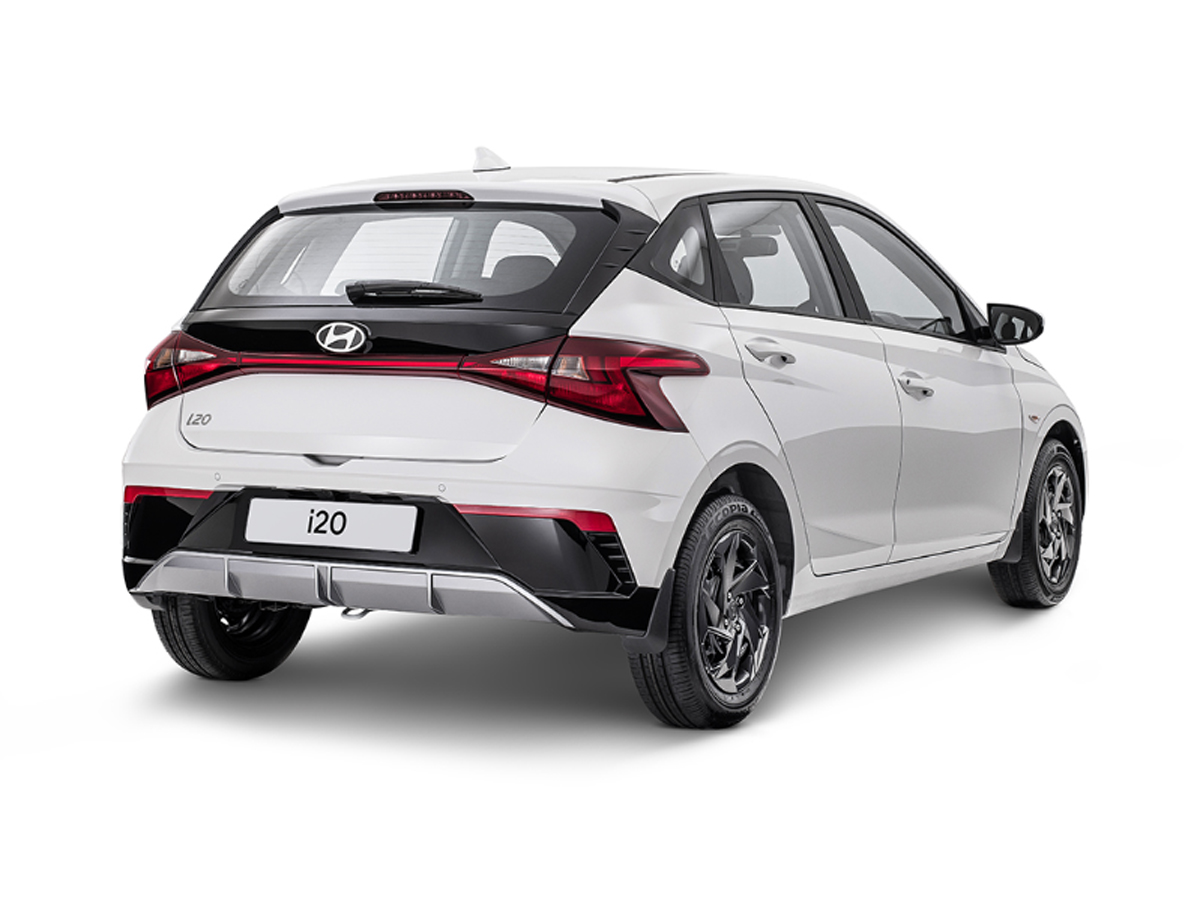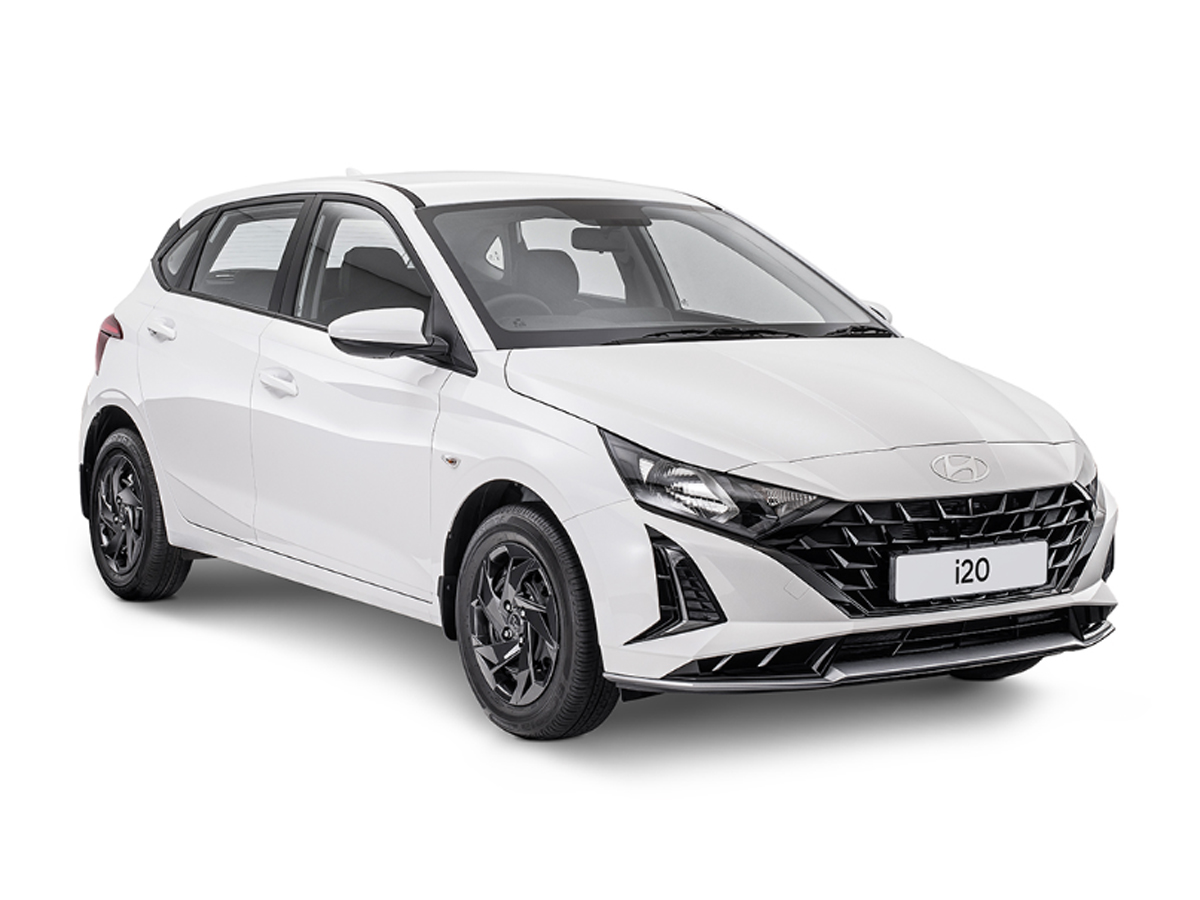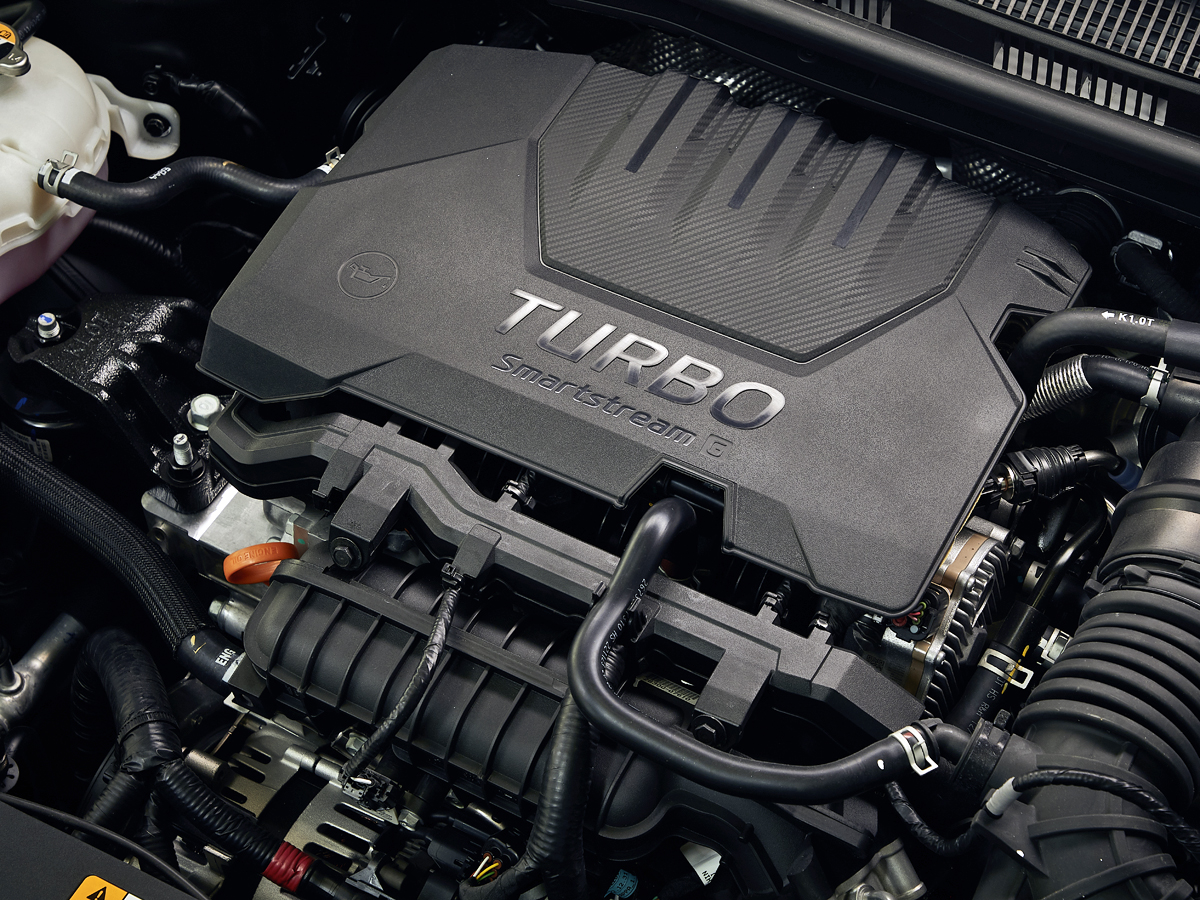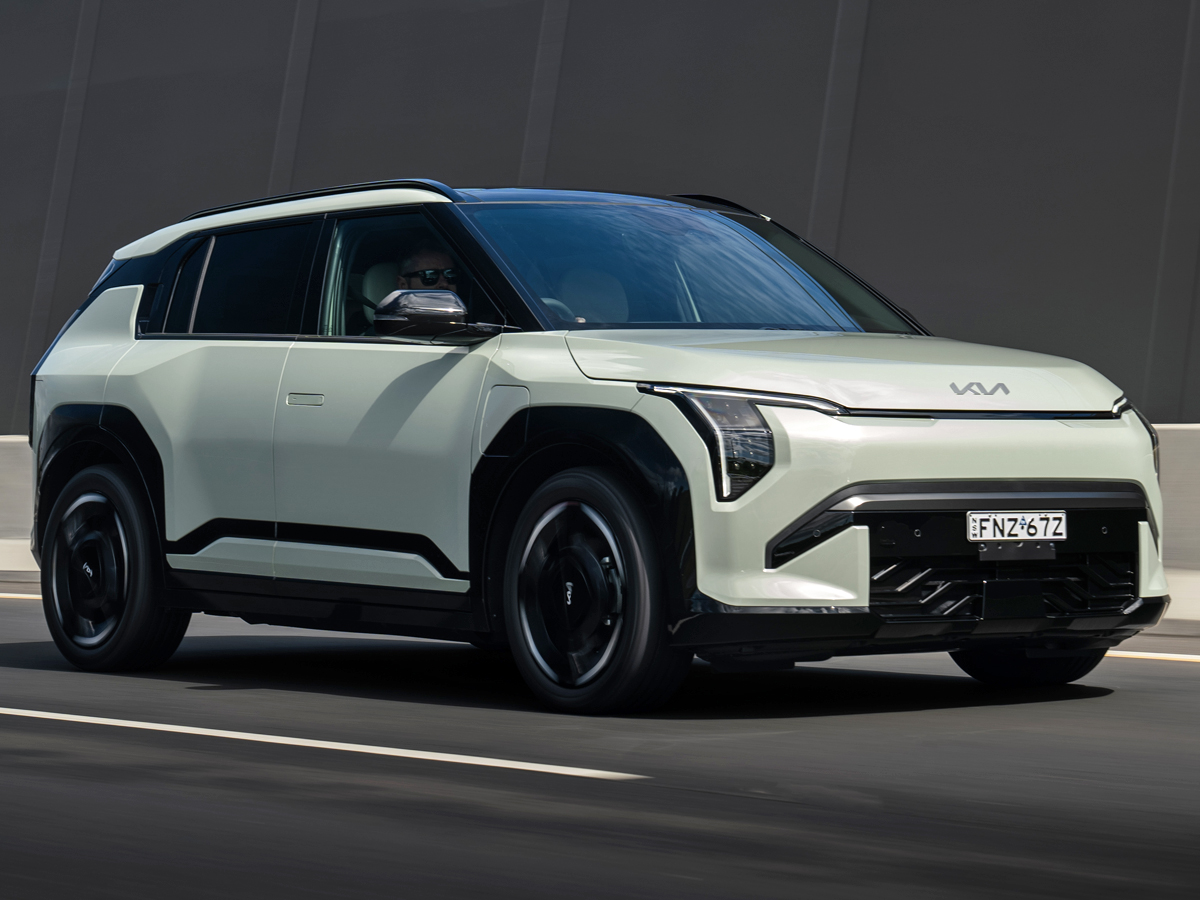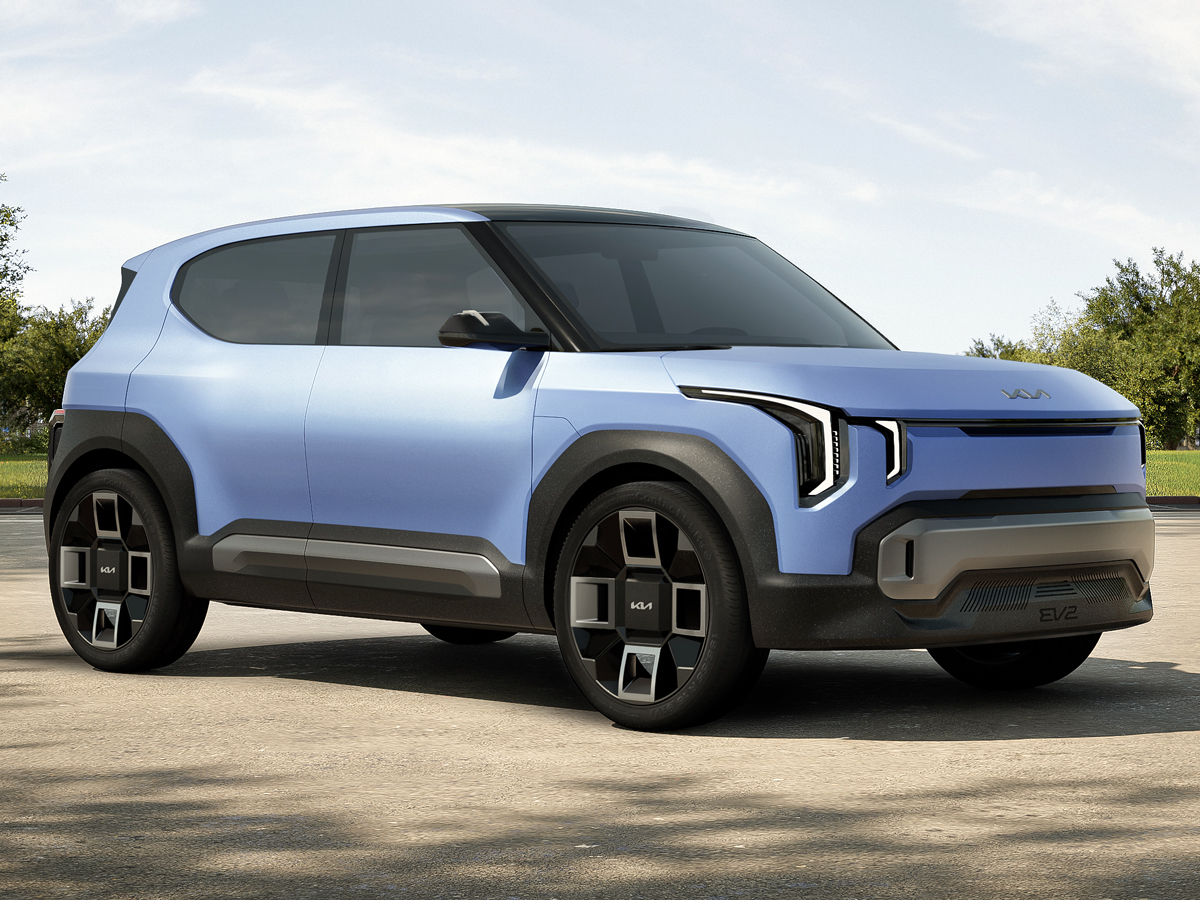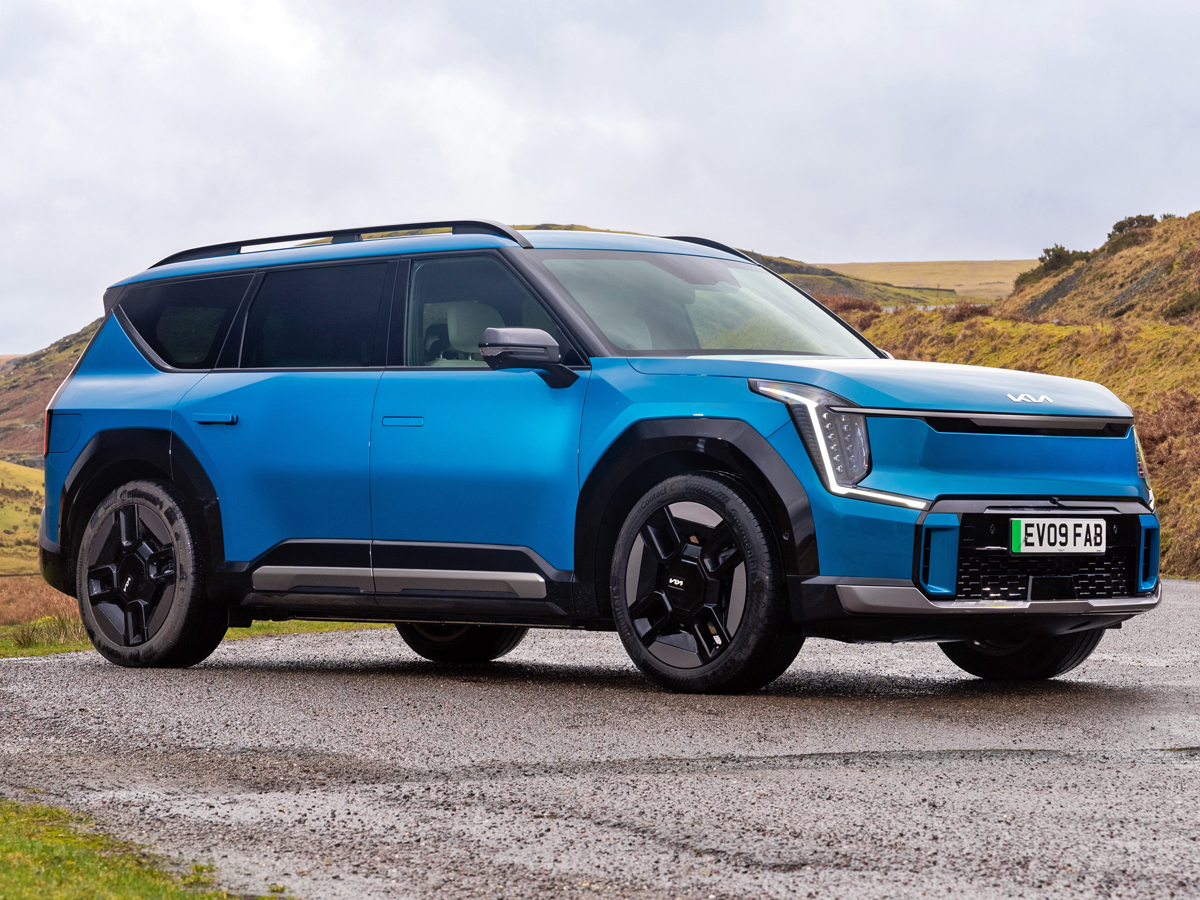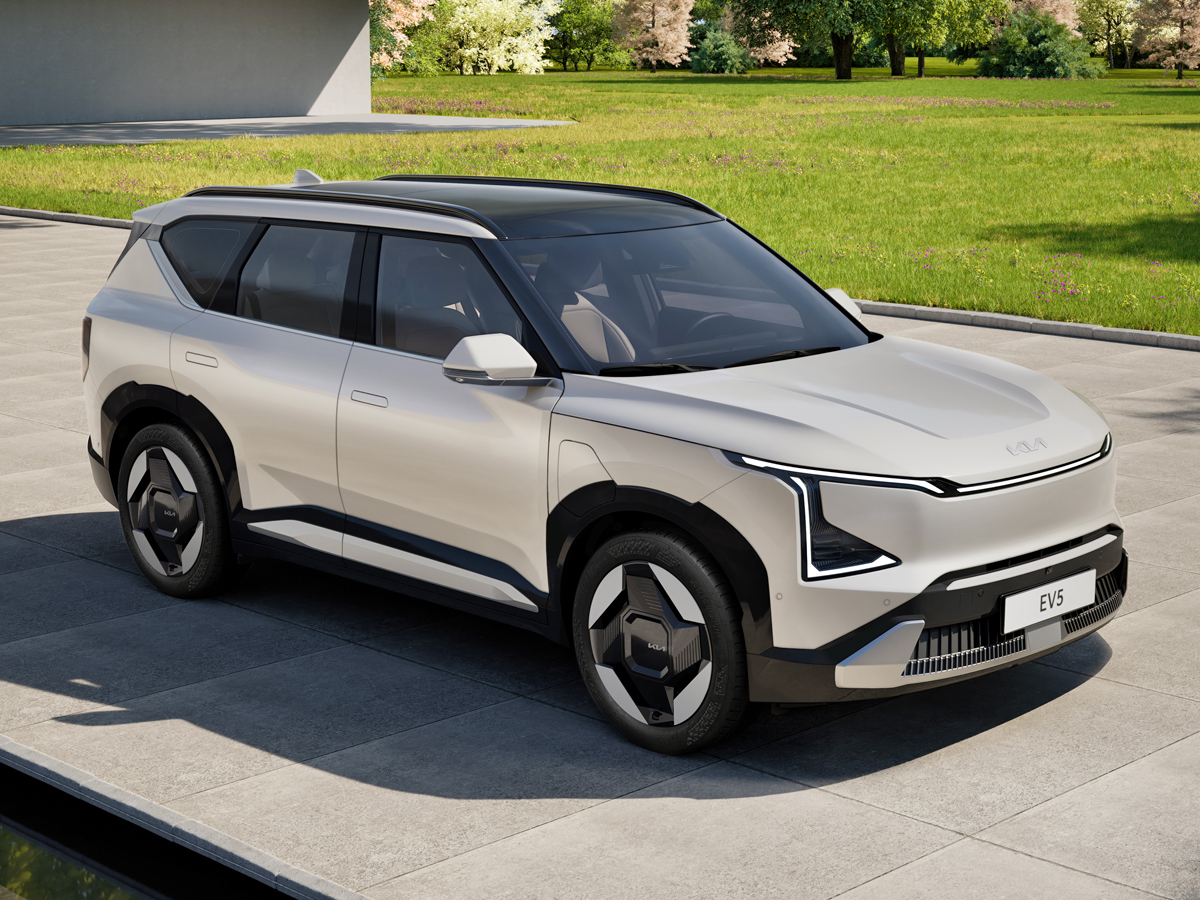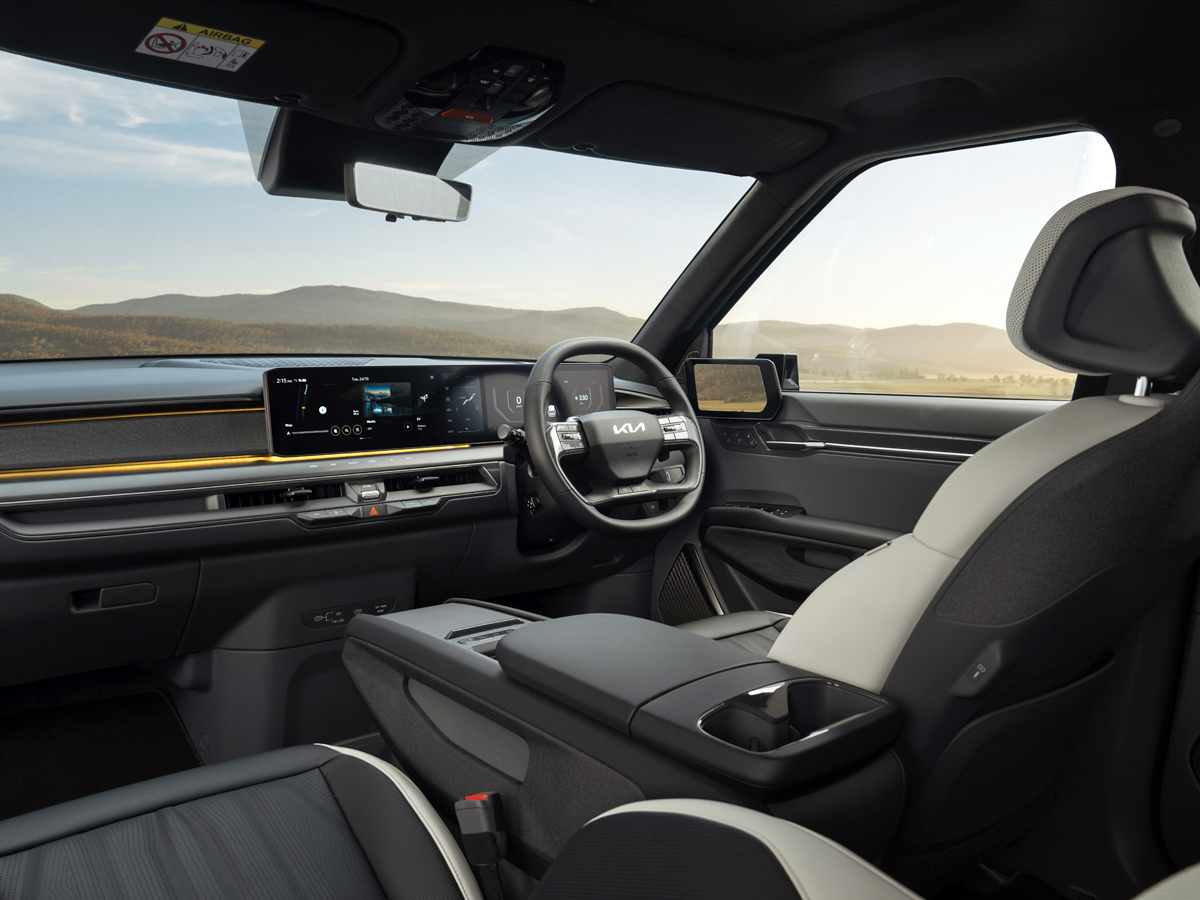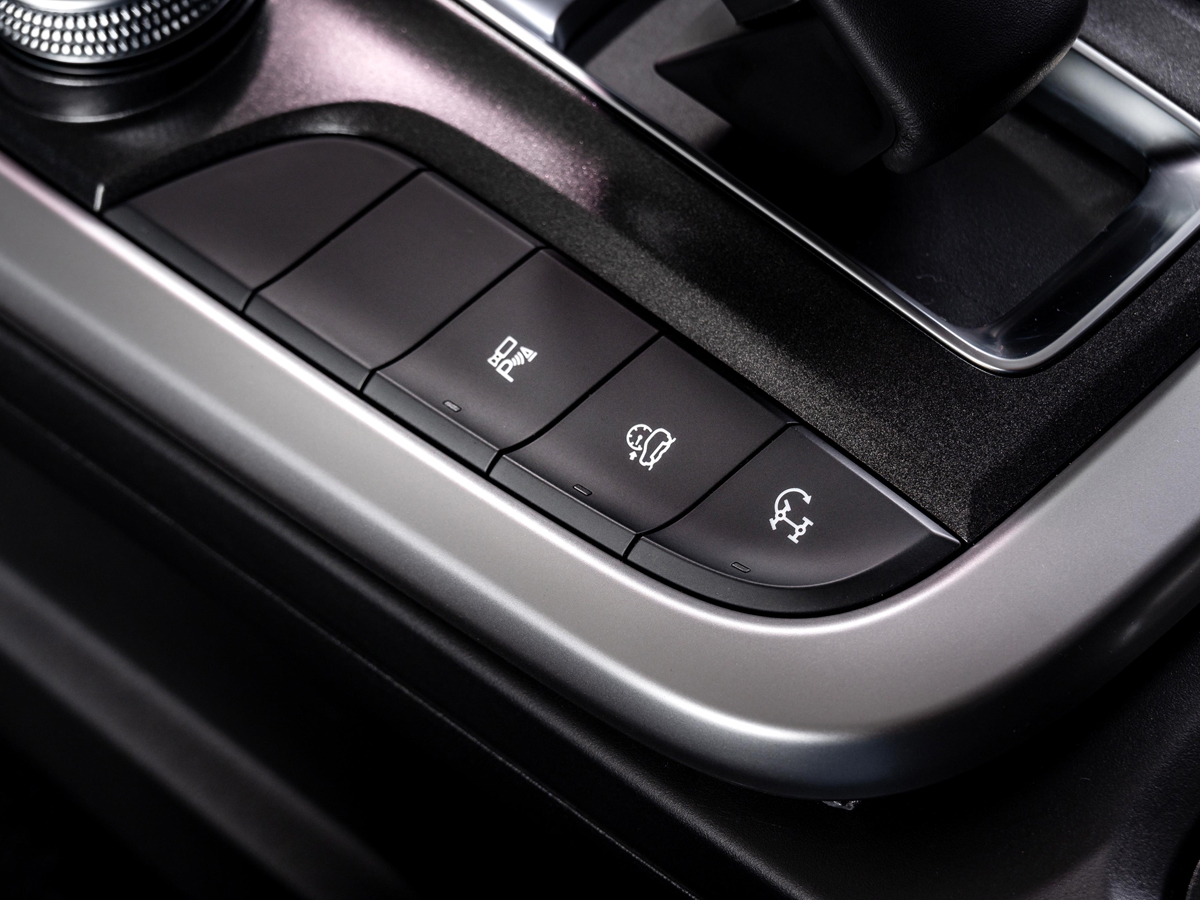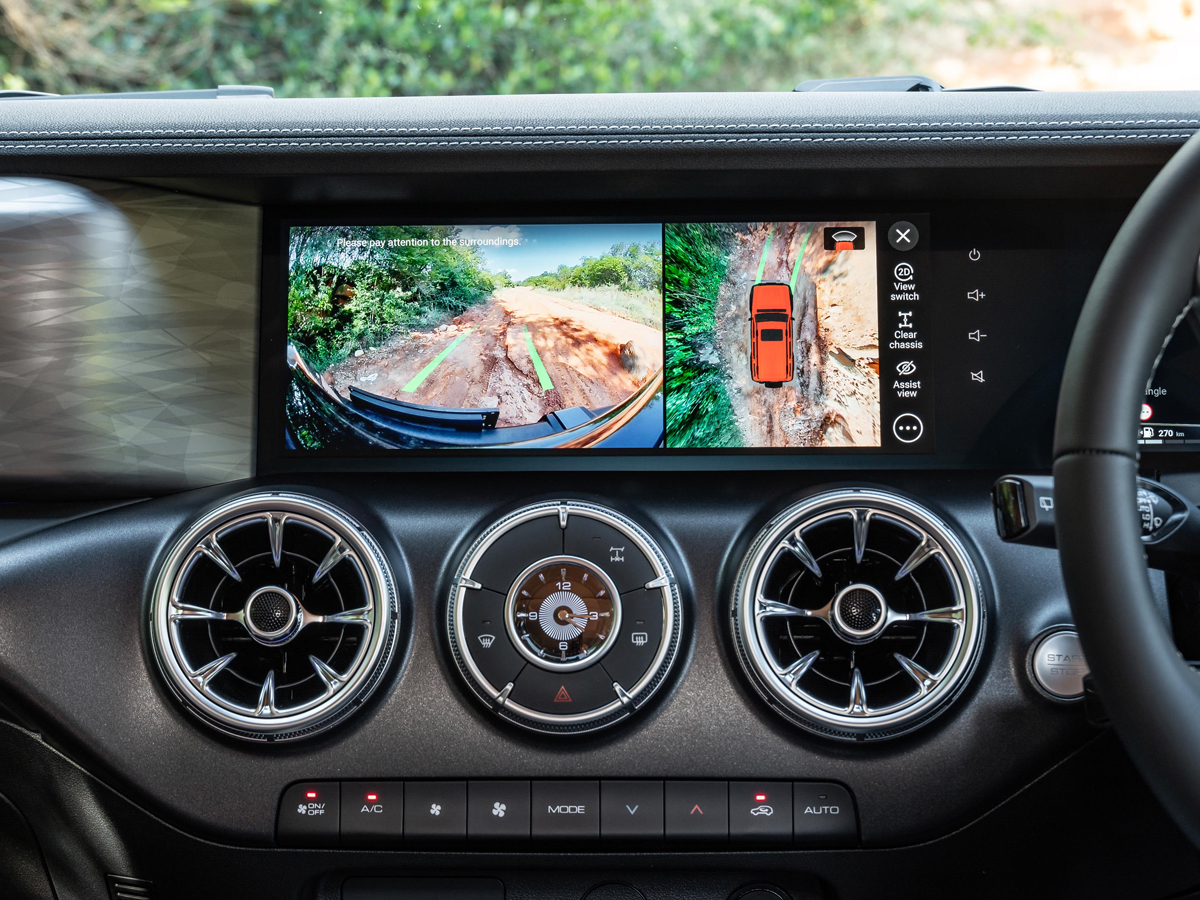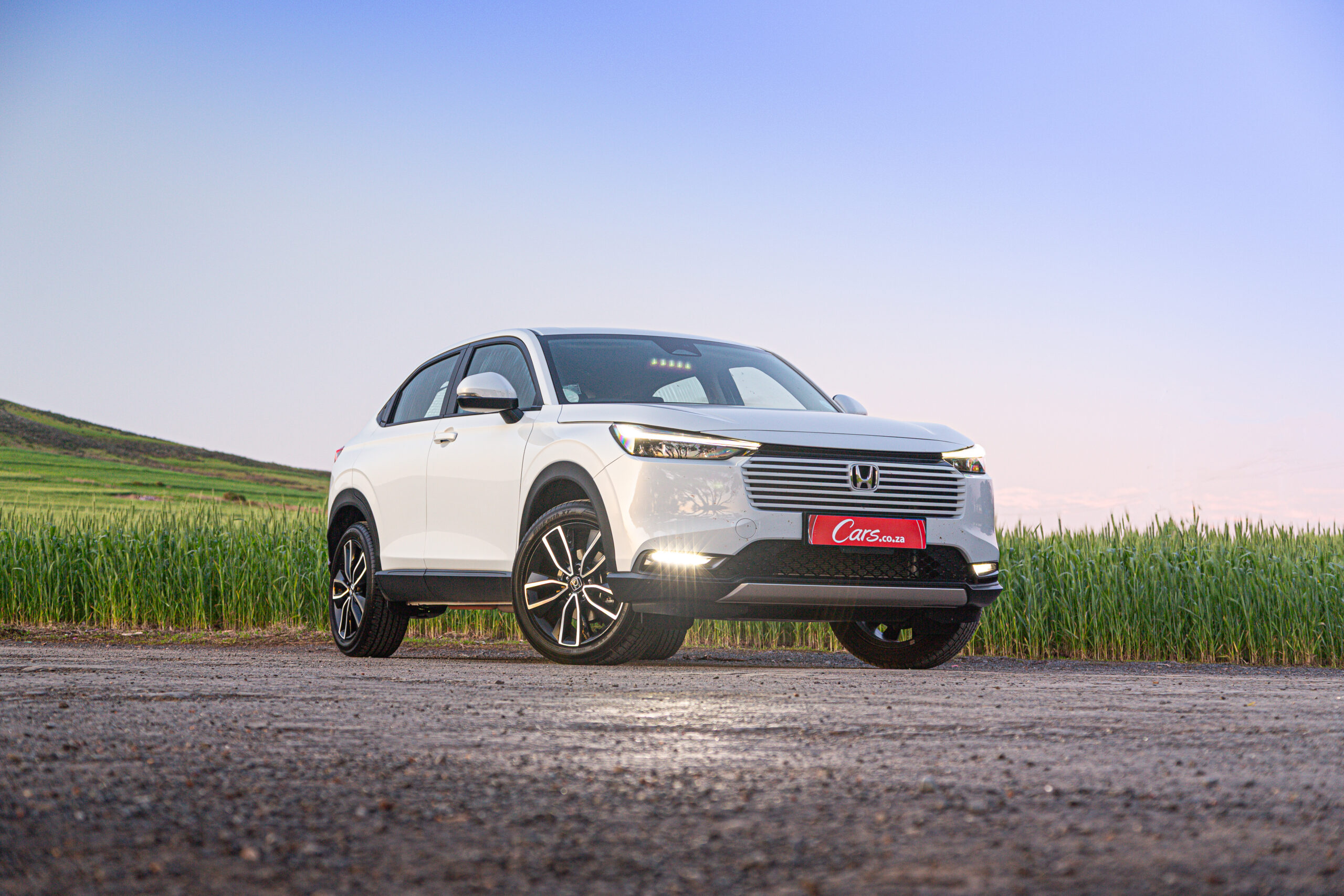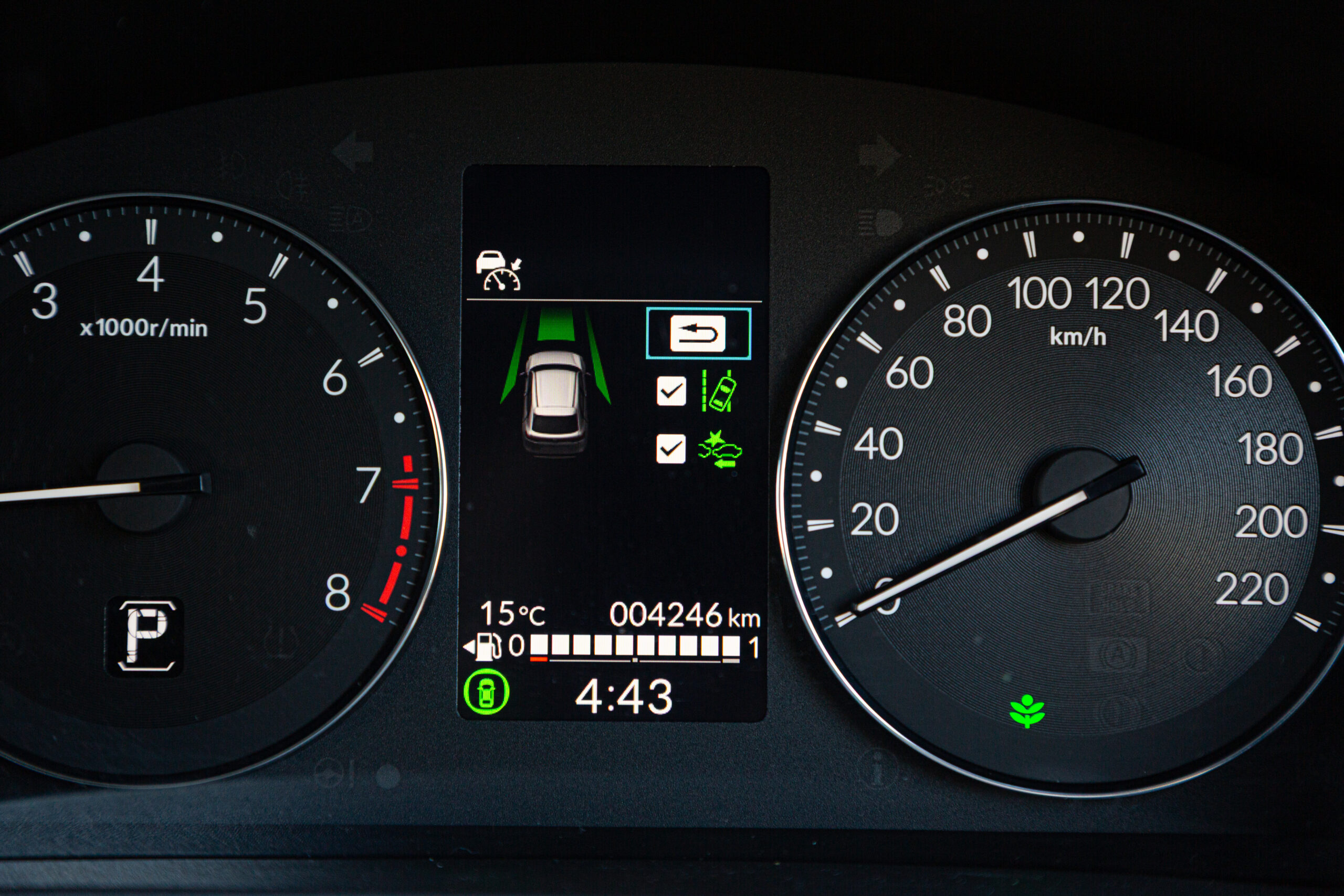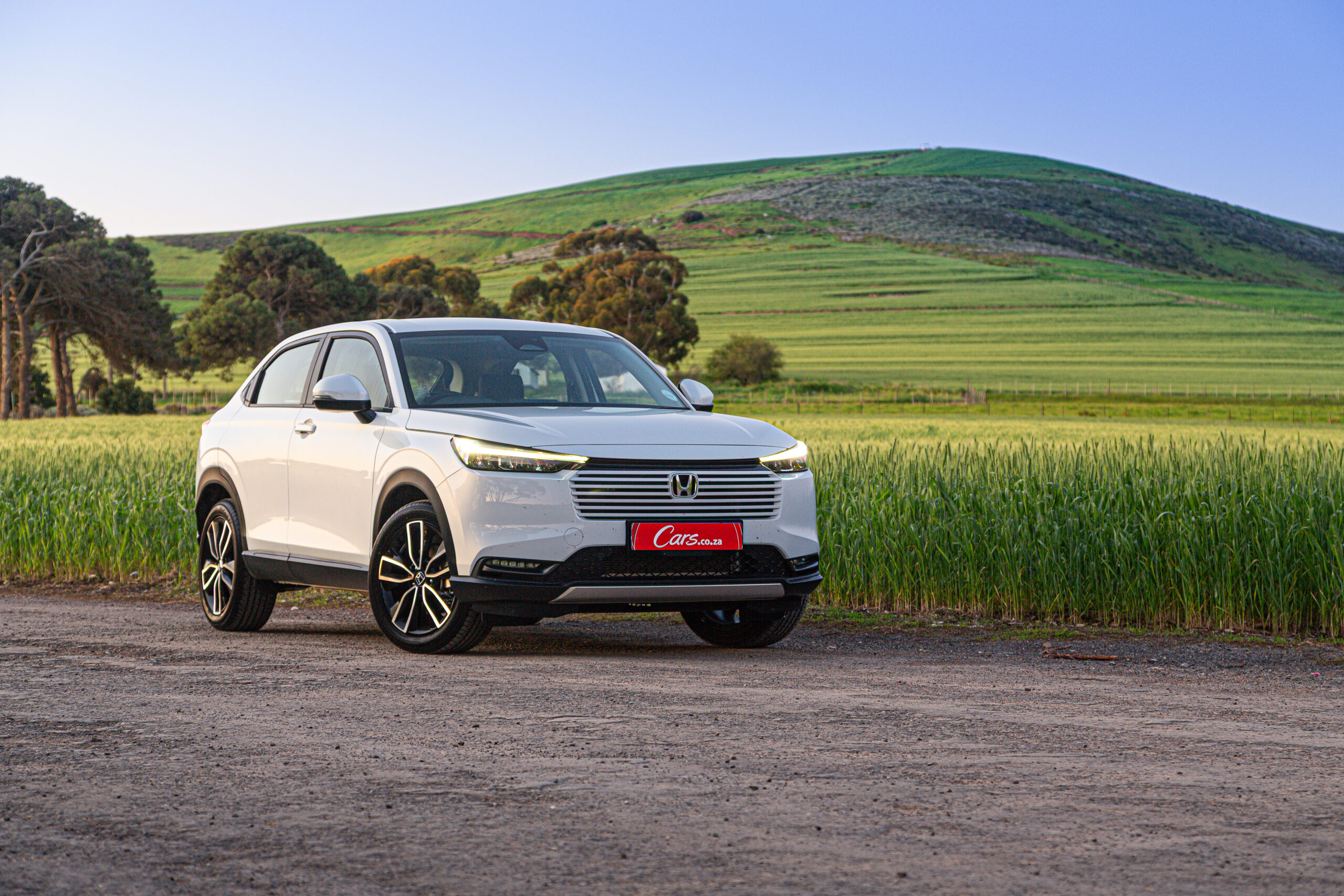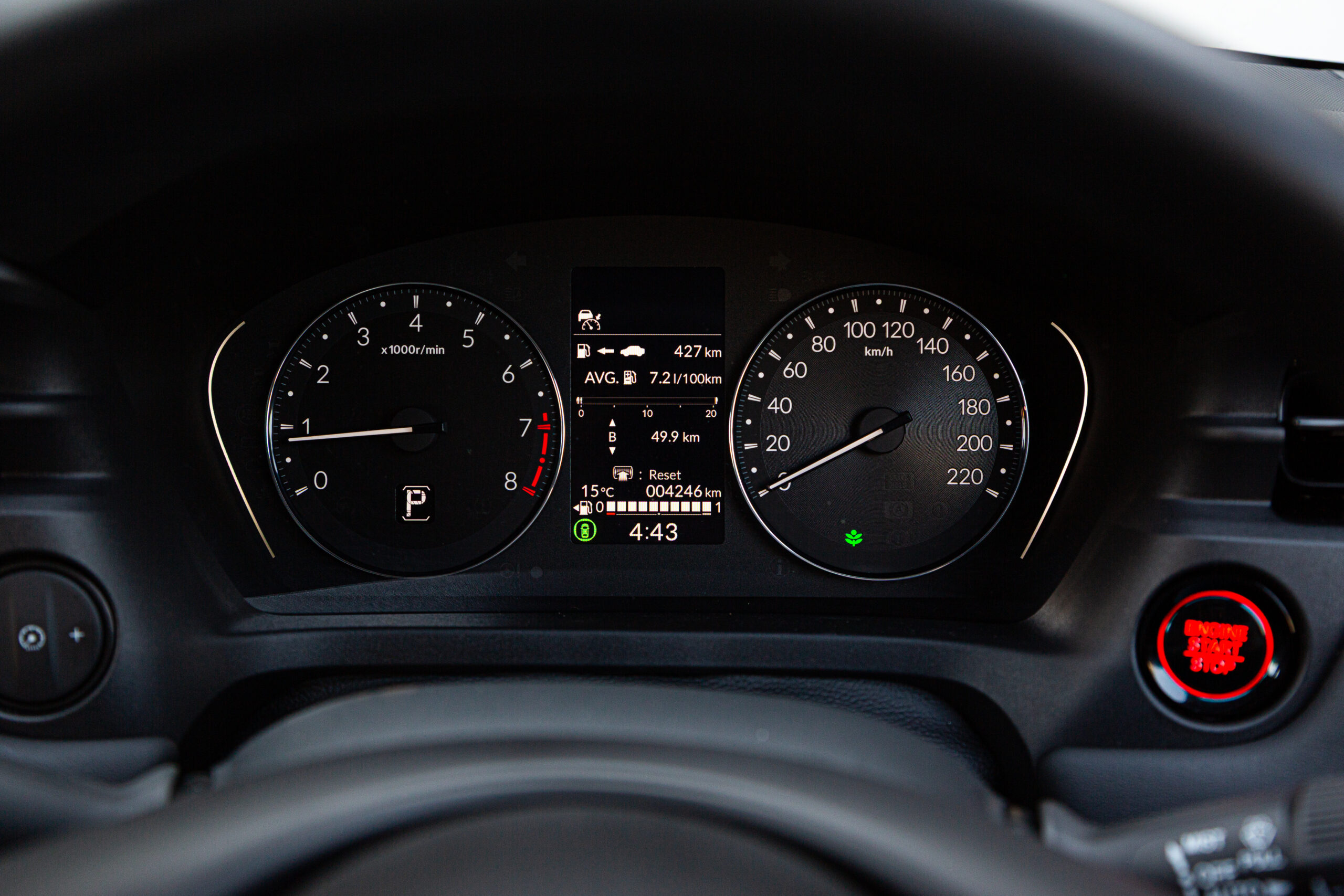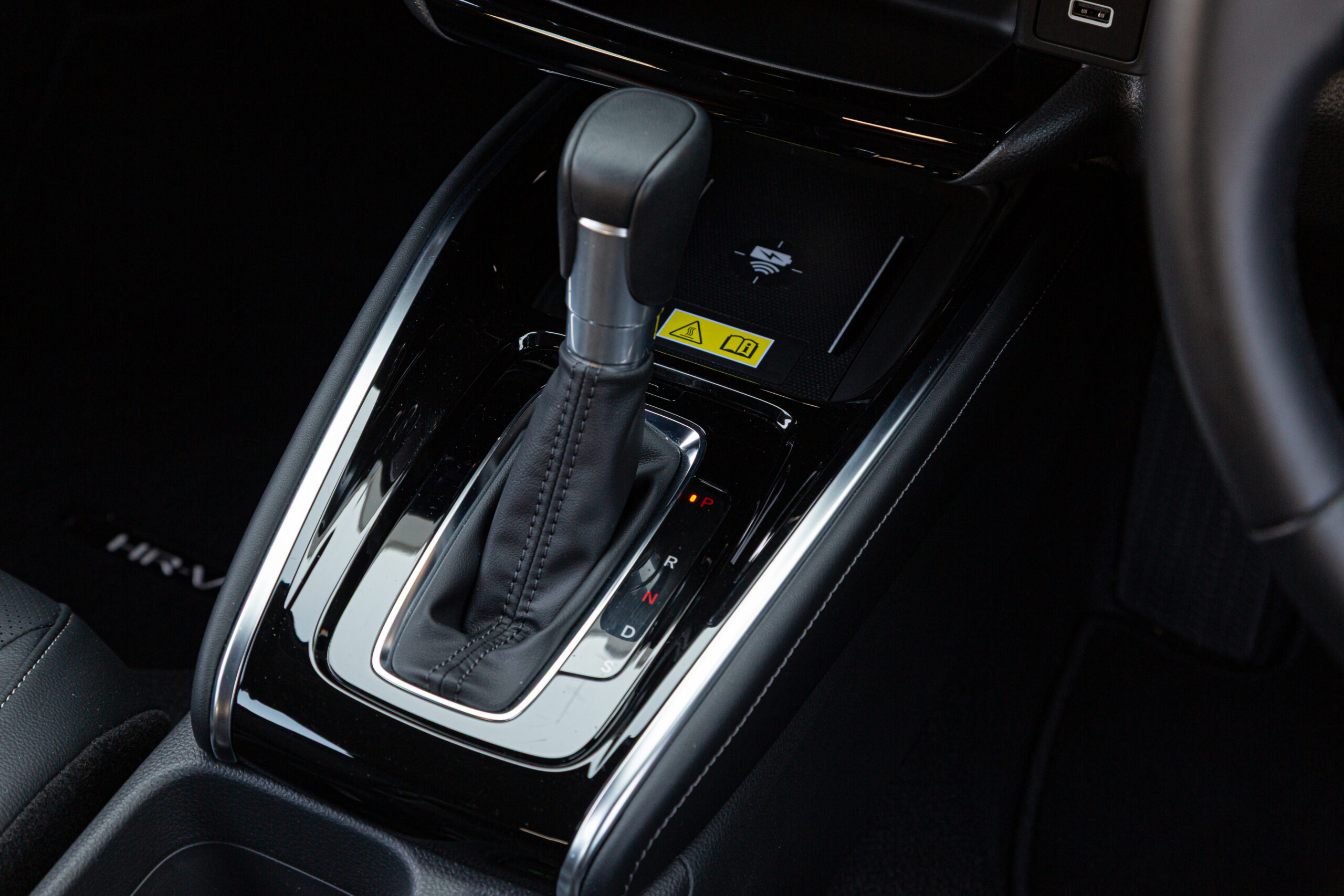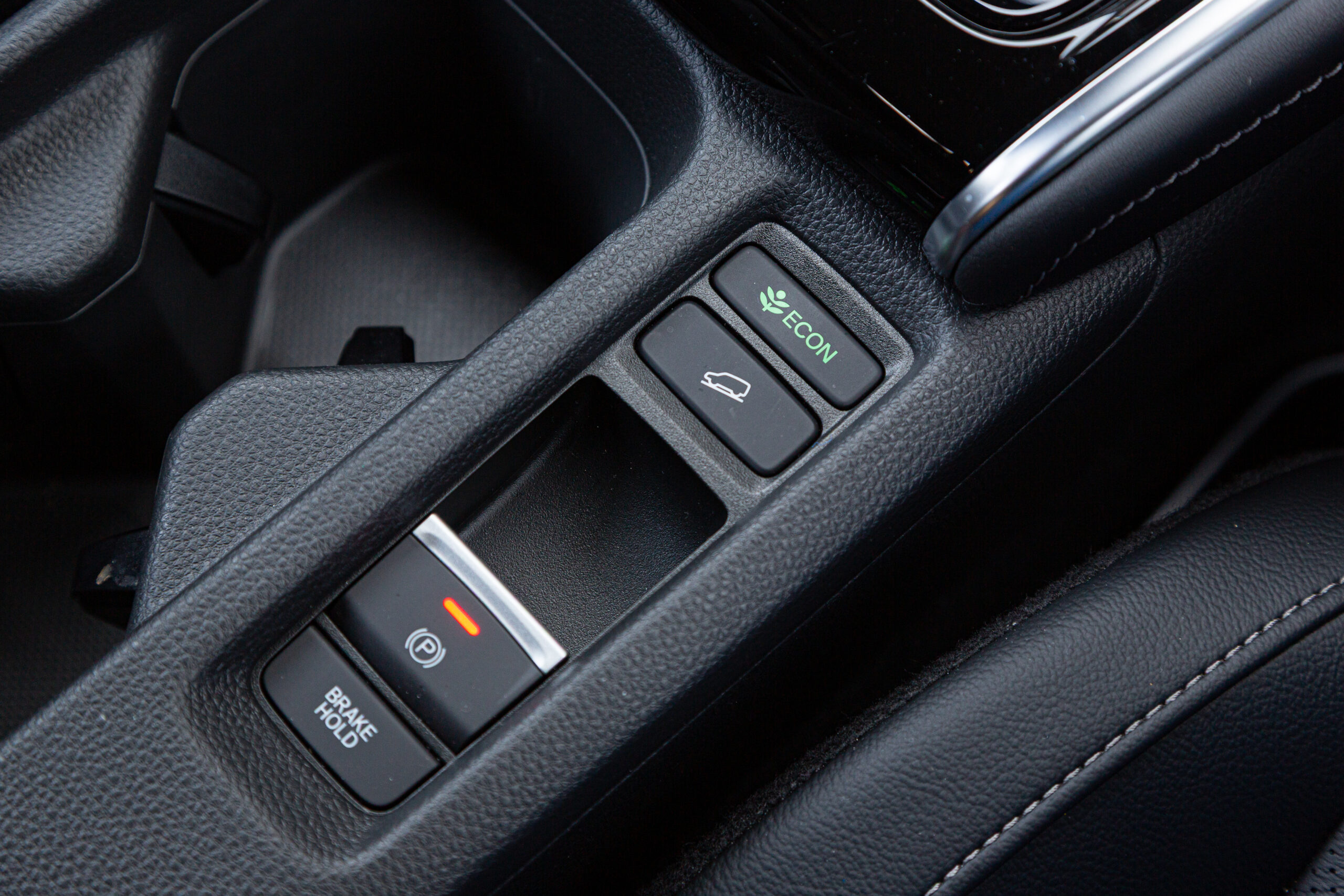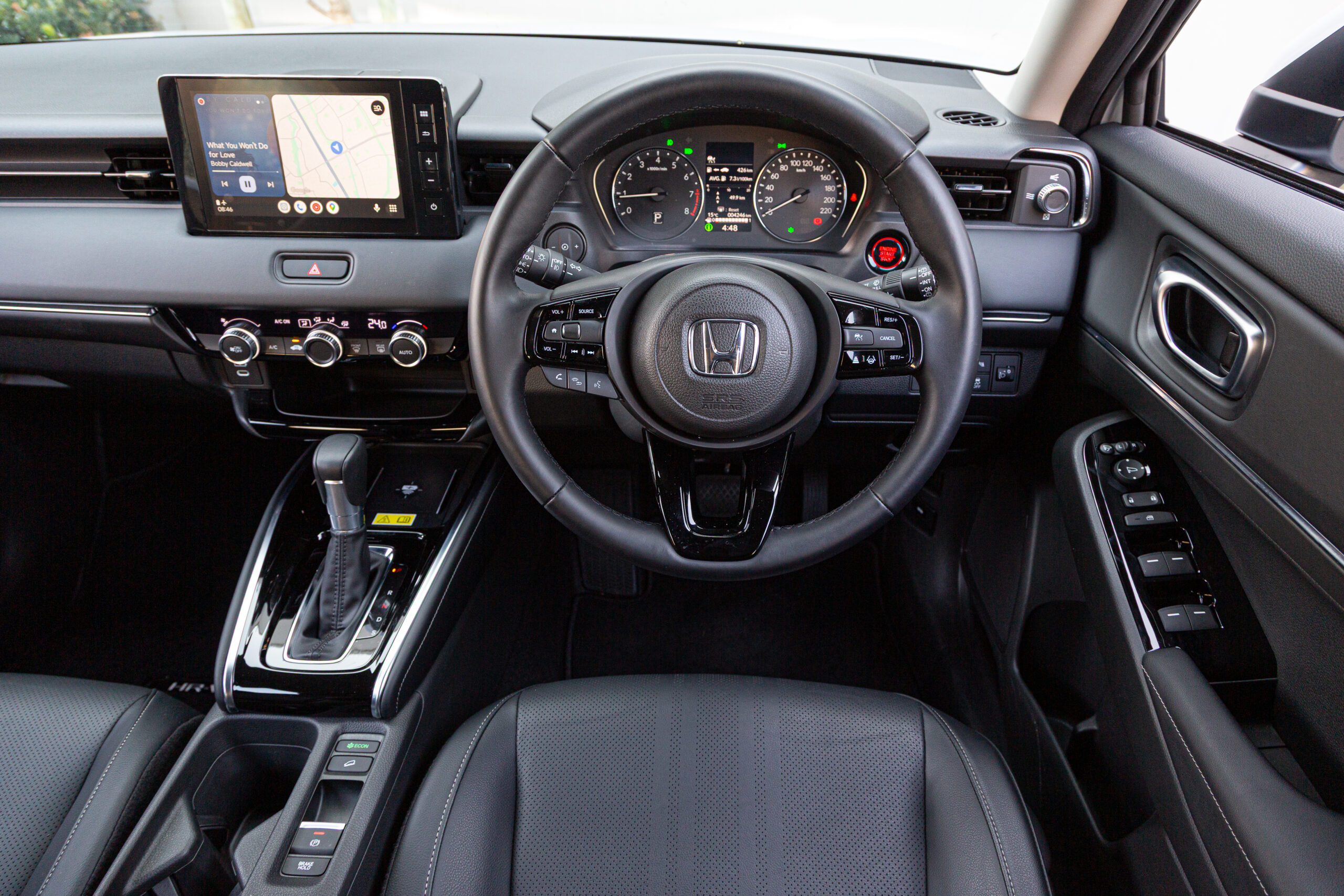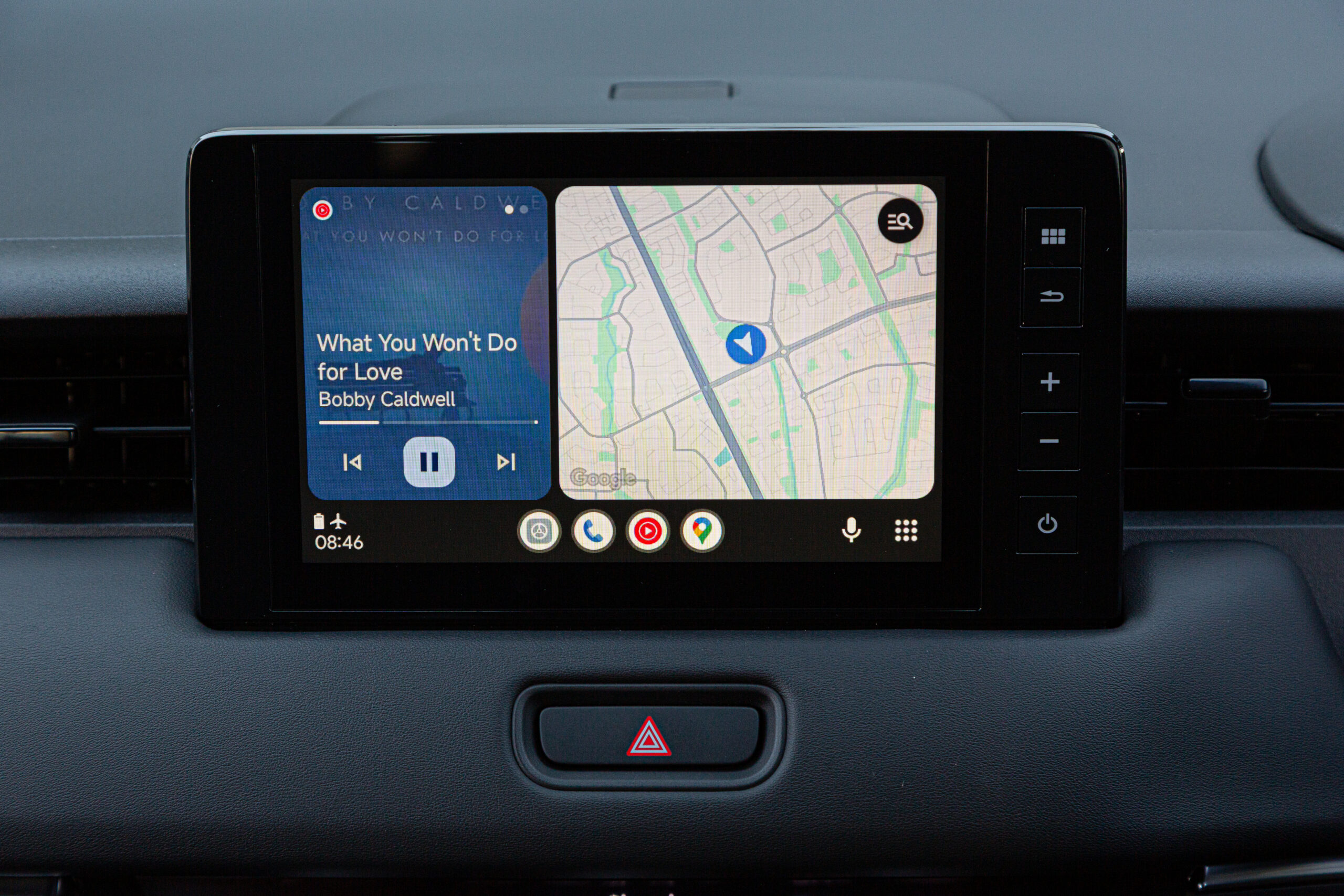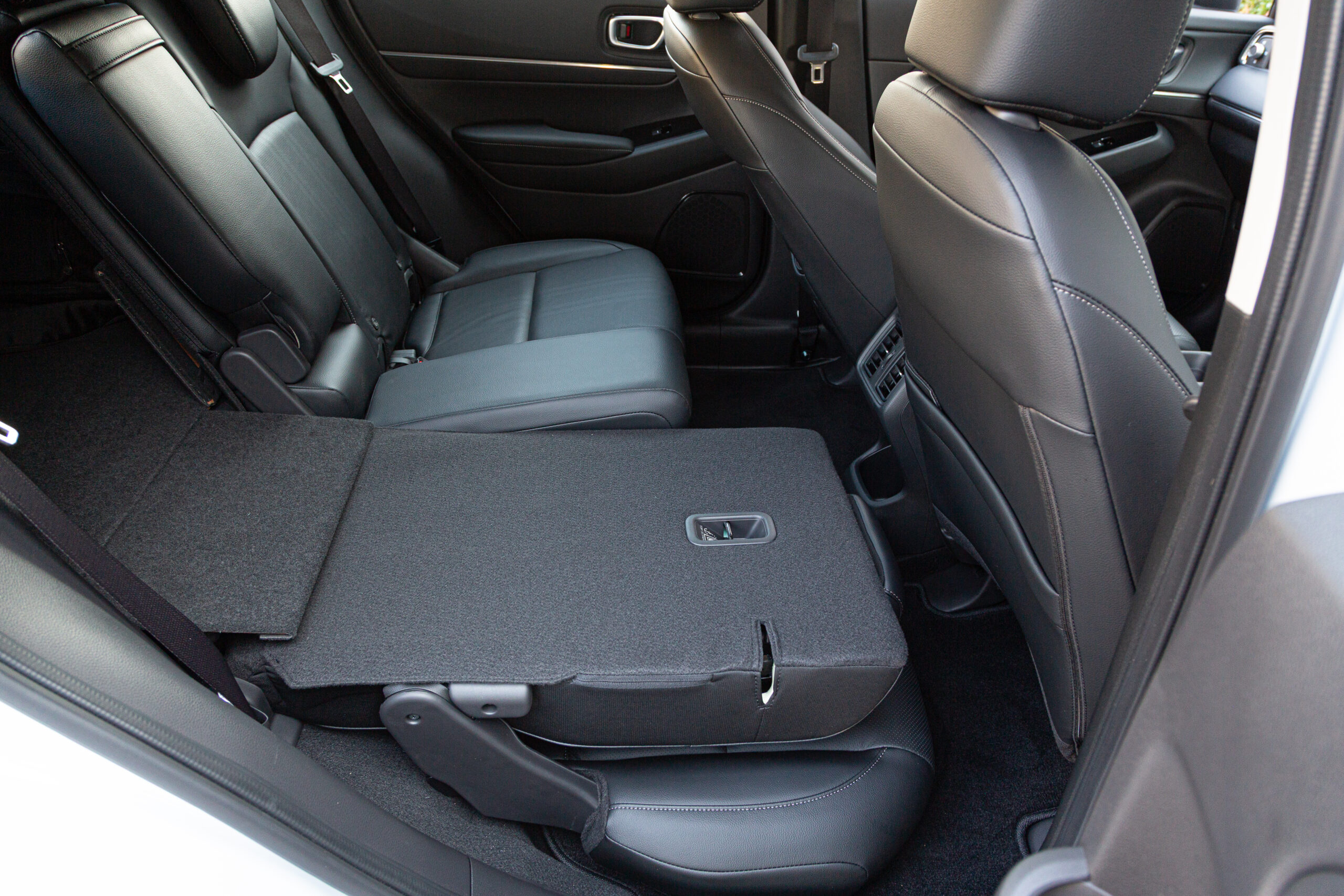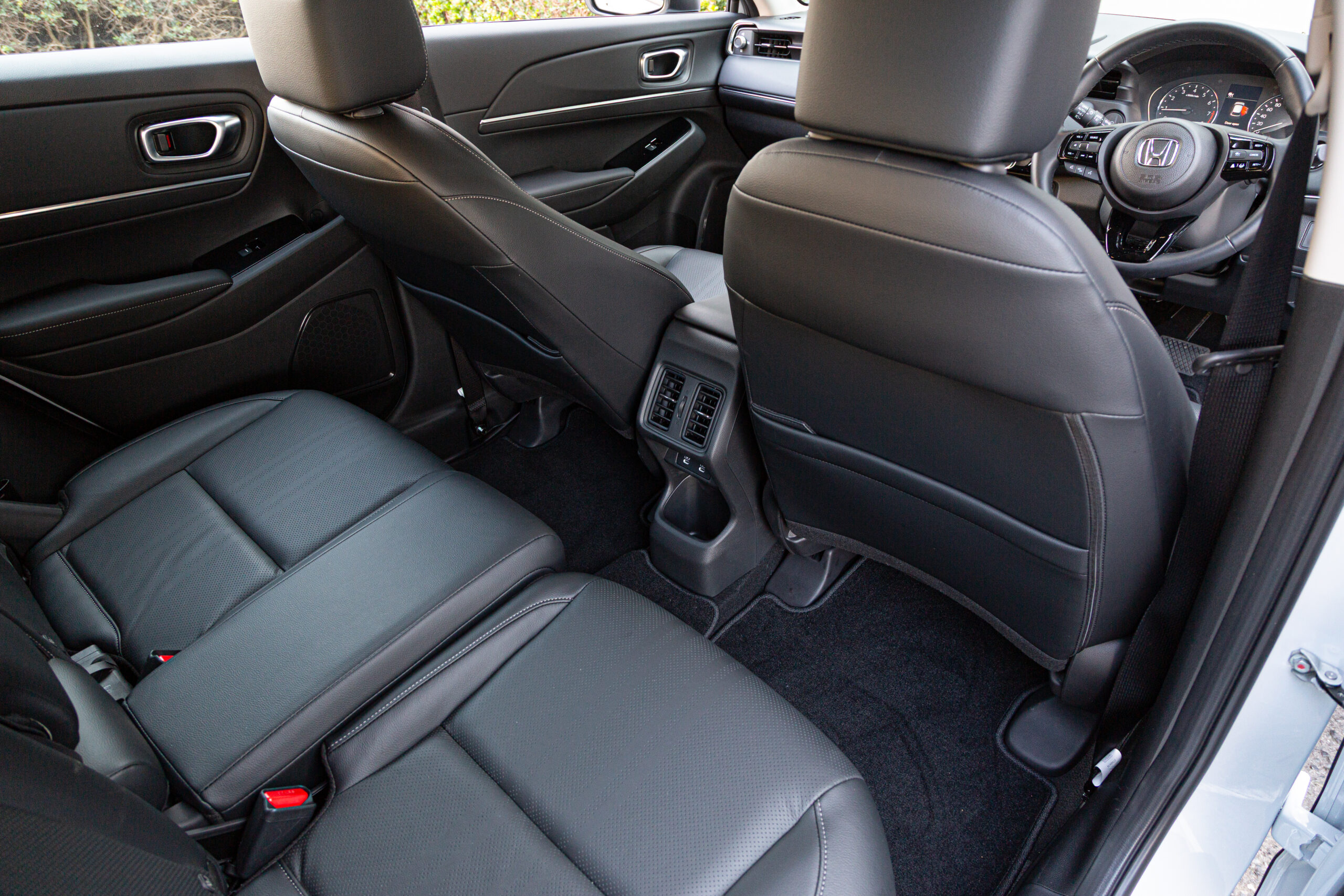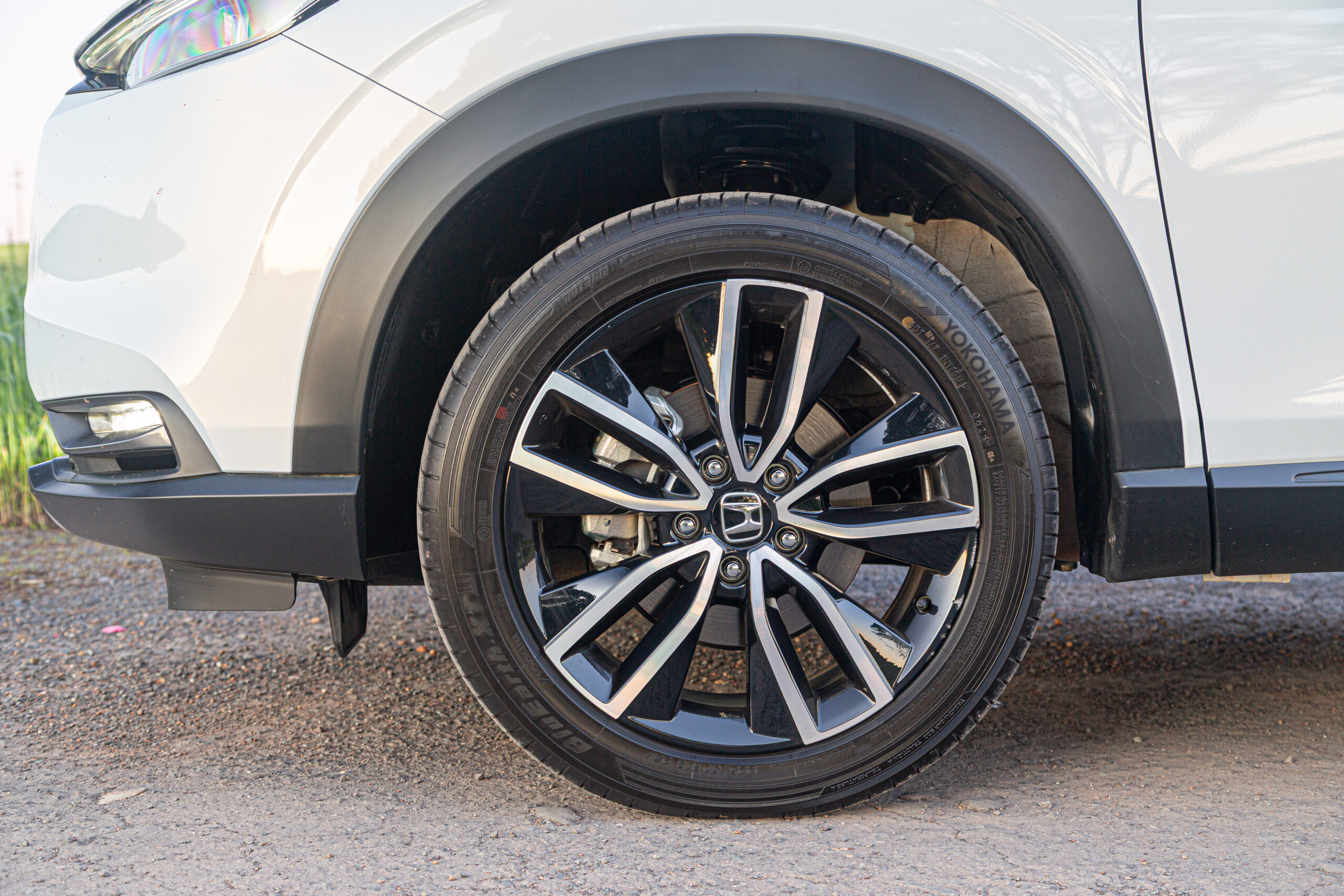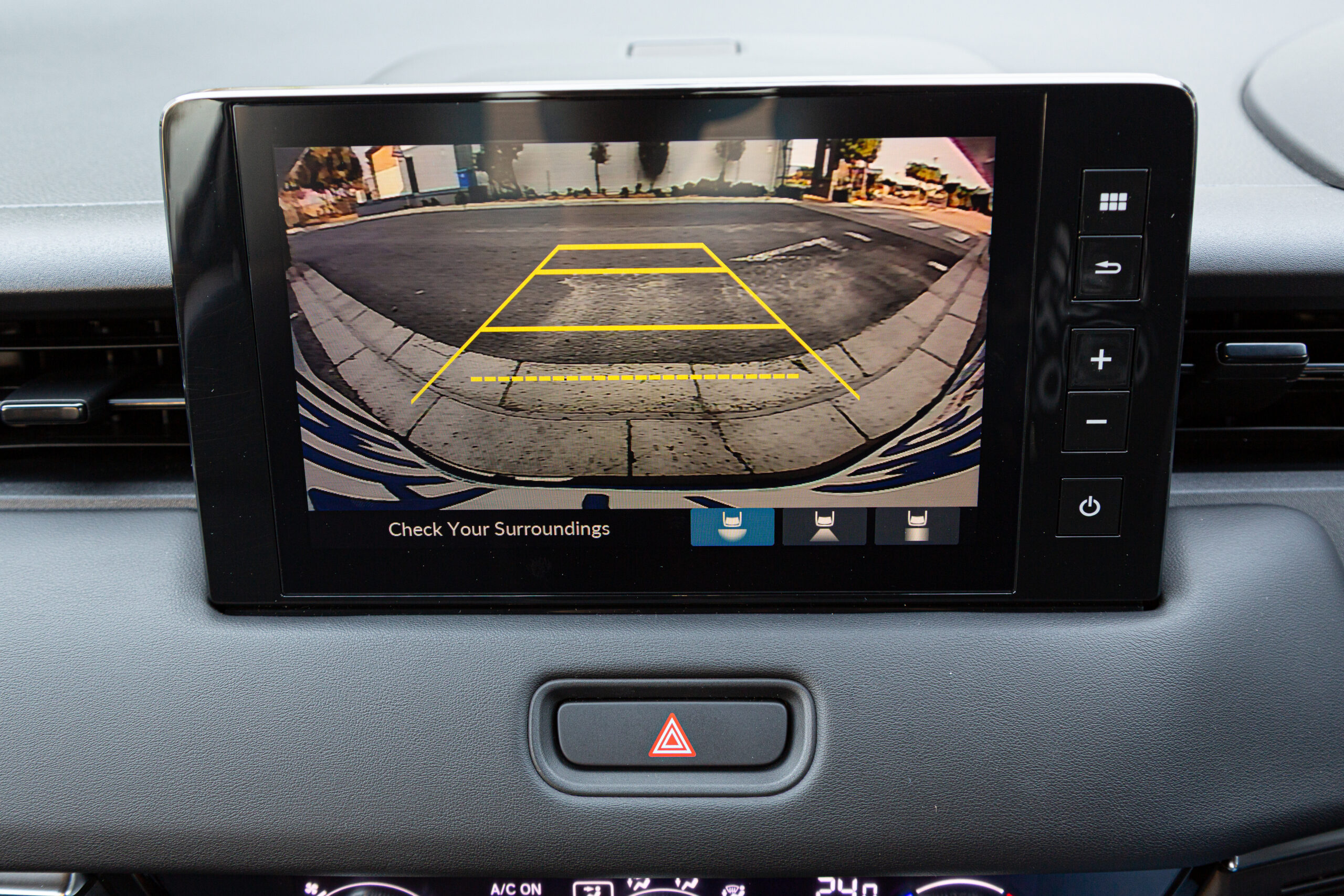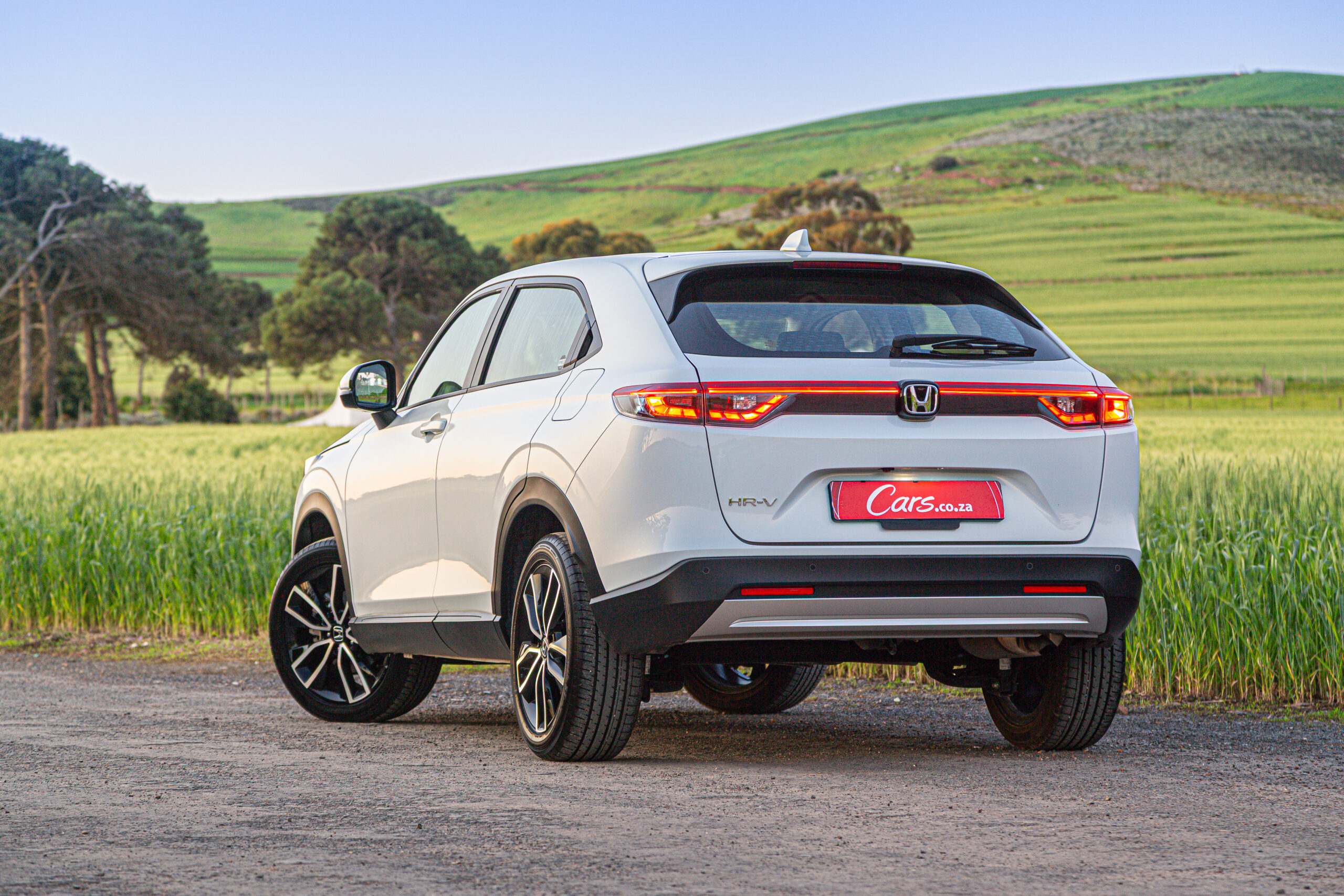Is Jetour T2 a boxy crossover or a true GWM Tank 300 rival?
The Jetour T2 looks like an adventure vehicle, not a crossover. But which is it, really? And how does it compare to rivals in the competitive South African all-terrain-vehicle market?
Jetour’s designers avoided crazy body panel creases and ornate chrome garnishes with the new Jetour T1 and T2, the latter of which stars in our video: Jetour T2 Durability Test: We Roll It Down a Hill! Just a simple 2-box design, like all true all-terrain SUVs. It looks kind of reminiscent of a smaller Defender 110!
Watch David Taylor and Jacob Moshokoa put the Jetour T2 through an epic off-road challenge:
The Jetour T2 looks like business because it is designed to be, but it’s not quite the hardcore adventure vehicle you might imagine, judging purely on appearance and Jetour’s marketing efforts.
However, we can attest to its ability to survive a gradient rollover, with the safety cell and vehicle structure remaining completely intact.
The story of the Jetour T2 is also that of the GWM Tank 300. Jetour’s product people have clearly seen the success of GWM’s Tank 300 range, wooing many South African buyers with its rugged body-on-frame platform, true all-terrain ability, and simple, 2-box proportions.
And now Jetour wants some of the GWM Tank 300 market share. Can the Jetour T2 be an alternative to the GWM Tank 300 and Toyota Fortuner?
See also: Jetour T2 Durability Test: We Roll It Down a Hill!
Engineered for all-terrain touring
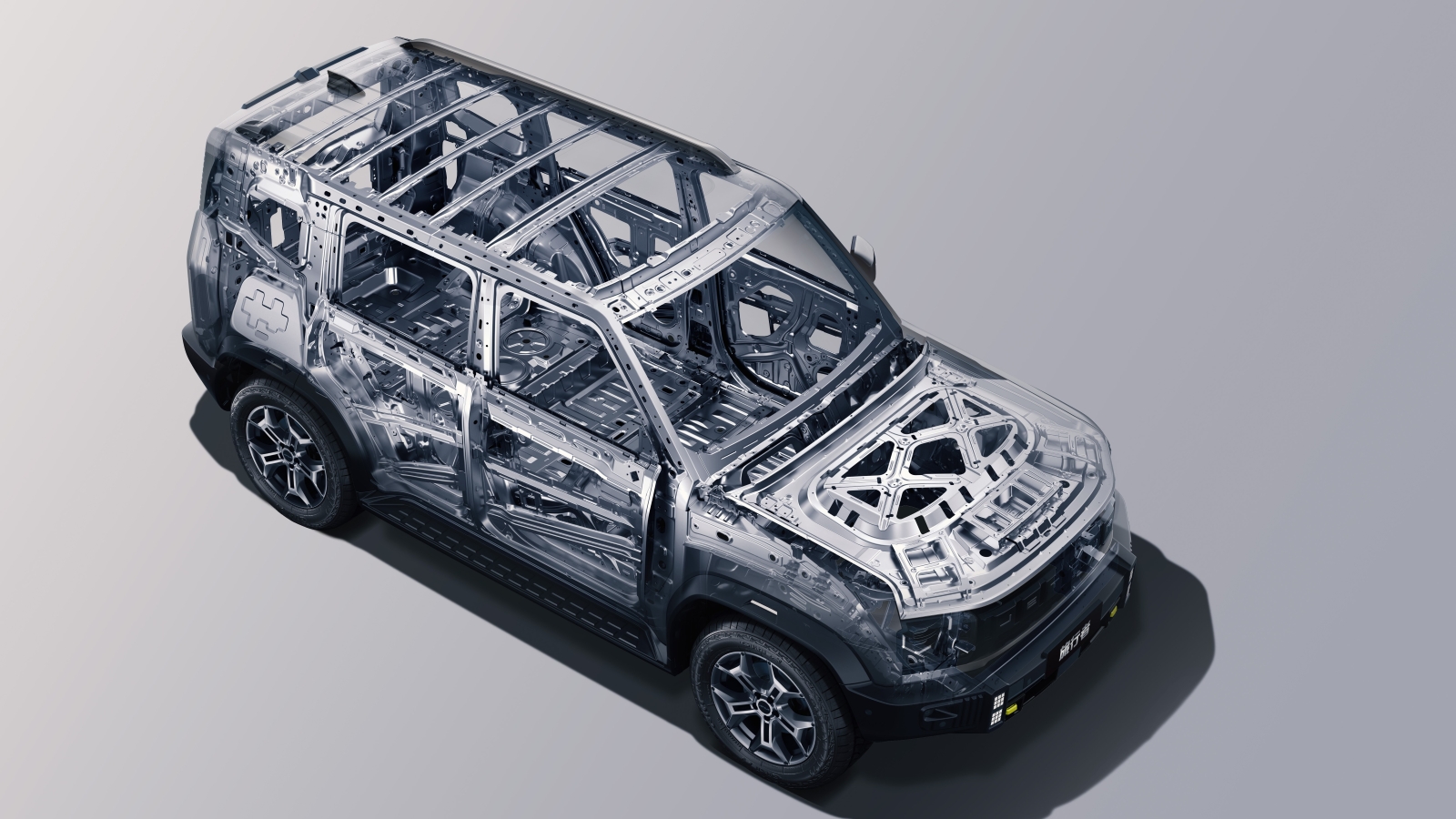
Beyond the bold design and proportions, this is a monocoque SUV – not a body-on-frame vehicle, like the GWM Tank 300 or Toyota Fortuner.
The Jetour T2’s monocoque structure does feature a lot of bracing and reinforcement. Monocoque SUVs can be very capable (the Land Rover Defender, for example). But the Jetour T2 is not designed to be a low-range rock crawler for conquering remote Lesotho, Baviaanskloof, or Cederberg mountain trails. That’s also why it lacks a low-range transfer case, despite having a mechanical rear differential lock.
Ground clearance is reasonable, at 220 mm, and engineers at Jetour have worked with one of the best transmission brands to give the Jetour T2 great traction.
BorgWarner supplies the Jetour T2‘s intelligent all-wheel-drive system, and although it has several modes, it’s still not a hardcore grade 3, 4 or 5 off-road obstacle transmission. Why? Because all the clever calibration can’t compensate for a lack of low-range gearing.
When you need to apply as much torque as possible to those wheels at the lowest possible speed in technical, consequential terrain, nothing can substitute for a low-range transfer case.
No low-range? No issue?
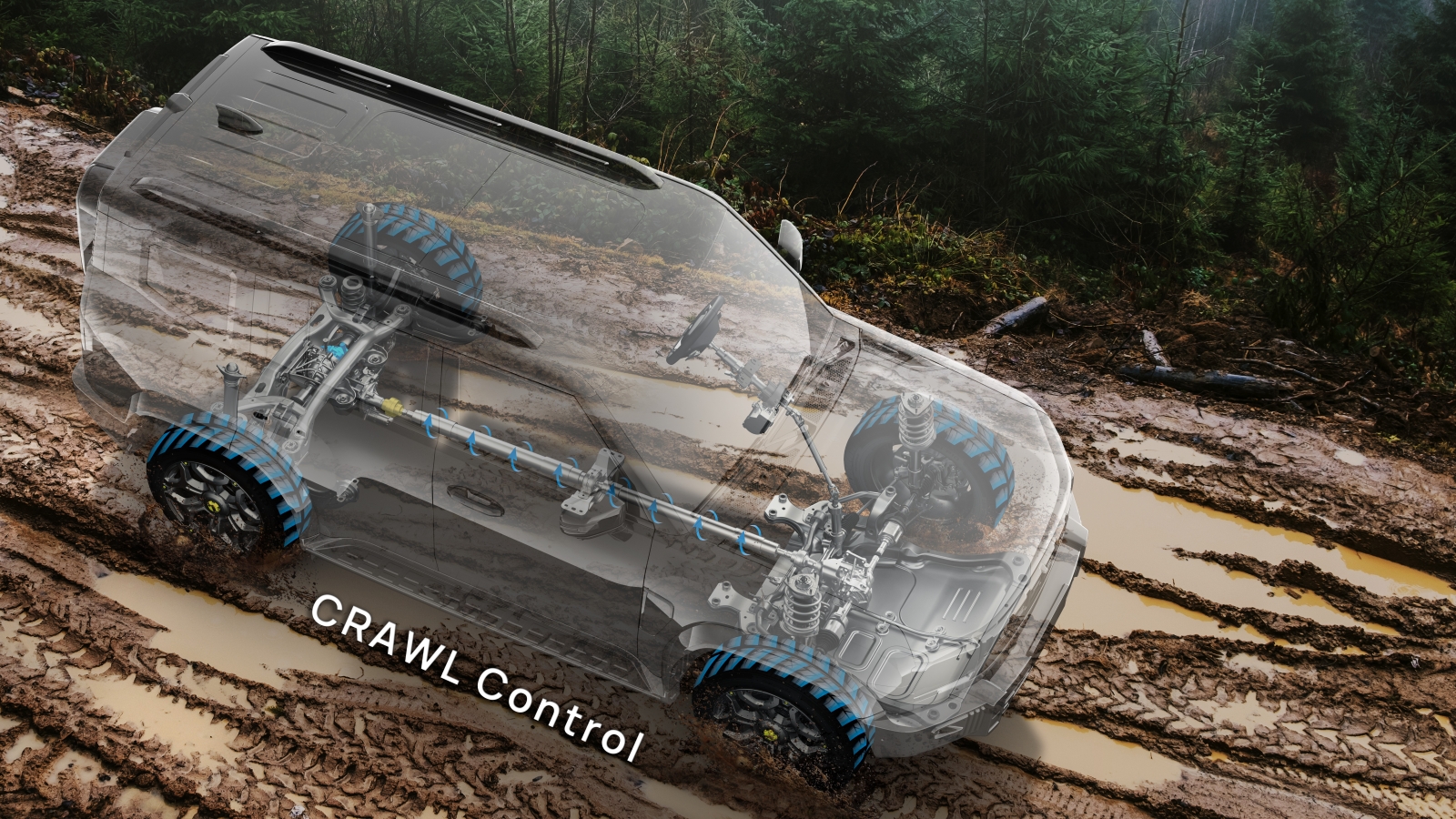
There are examples where vehicles have had credible off-road ability without a low-range transfer case. The previous-generation Volkswagen Amarok V6 is one of those.
See also: Epic Overlanding in the V6 Amarok across Oman
VW’s 1st-gen Amarok V6 used the combination of a very torquey 3.0-litre V6 turbodiesel and an ultra-short first ratio on ZF’s 8-speed automatic transmission, to create a “pseudo” climbing gear for steeper off-road trails. Without the presence of a low-range transfer case. The T2 doesn’t have a torque output to match that of the 1st-gen Amarok V6 or its legendary ZF 8-speed torque converter auto transmission.
Even with its crawl system and an automated torque split that can vary torque 50:50 between the front and rear axles, or apportion up to 100% to a single axle, without low-range, the Jetour T2 could never follow a GWM Tank 300 or Toyota Fortuner into challenging terrain.
The Jetour T2 diesel-engine question
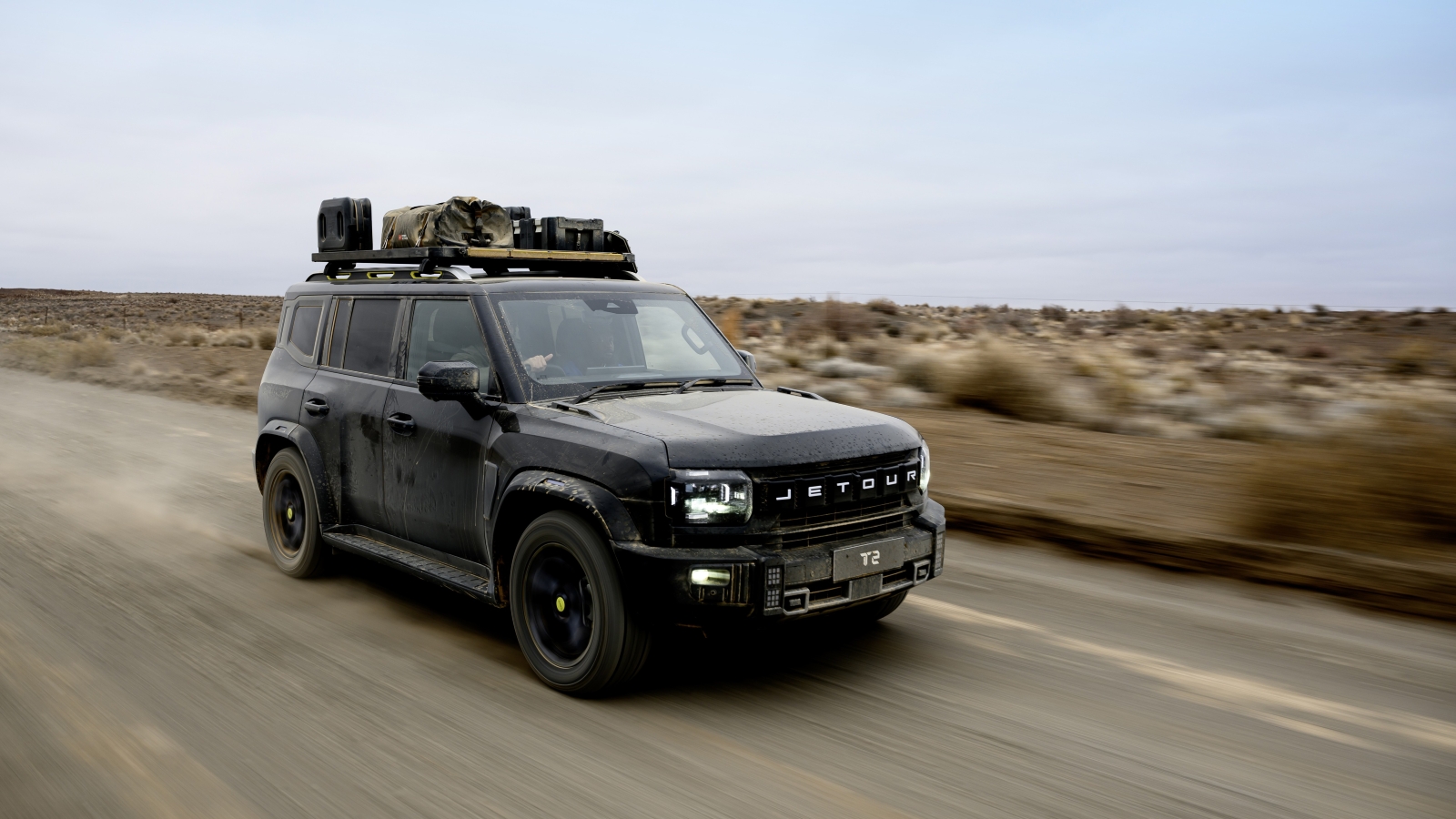
Powertrains for South African-market SUVs don’t need sample groups or deep research: people want diesel. Buyers who want the energy density of diesel fuel, which delivers great range and driving economy. The low- to mid-range torque of turbodiesel engines, for confident highway overtaking – especially in an SUV that’s fully laden for an extended vacation road trip.
Diesel is also preferred for its consistent low-speed throttle response when off-roading. And that’s where the Jetour T2’s powertrain offering is lacking compared to its rivals, which offer turbodiesel engines.
Jetour’s all-wheel-drive T2s are powered by a 2.0-litre turbopetrol rated at 187 kW and 390 Nm, which are very healthy numbers for an engine of that size. And should deliver the Jetour great throttle response and highway overtaking performance, especially with the rapid-shifting 7-speed dual-clutch autobox.
Jetour T2 DCT and off-road terrain

High-power turbopetrol engines with quick-shifting gearboxes are very effective for sand track and dune driving. But the peaky power delivery of a turbopetrol and the snatchy low-speed disadvantages of a dual-clutch transmission can be less than ideal when slowly trying to steer and keep a traction line in steep, rocky, technical off-road terrain.
Why? Dual-clutch transmissions need to slip clutches. Remember, the system always has another gear “primed” to engage with the additional clutch. And in steep, technical terrain, where the load strain on a transmission’s internals is massive (even at very slow speeds), a dual-clutch design is particularly vulnerable to accelerated wear.
Many dual-clutch transmissions also override driver inputs, reducing “full manual” control. And having a dual-clutch transmission’s electronics disobeying what you need when trying to roll up a steep, technical trail feature is one of the reasons these transmissions have never been popular with adventure 4×4 drivers… They prefer the predictable throttle response and drivetrain behaviour of a torque converter automatic transmission and a low-range transfer case.
What do the Jetour T1 and T2 cost in South Africa?
| JETOUR T1 DERIVATIVE | PRICE |
| Jetour T1 1.5T Edge 7DCT | R514 900 |
| Jetour T1 1.5T Aspire 7DCT | R544 900 |
| Jetour T1 2.0T Xplora 7DCT 4WD | R594 900 |
| Jetour T1 2.0T Odyssey 7DCT 4WD | R634 900 |
| JETOUR T2 DERIVATIVE | PRICE |
| Jetour T2 1.5T Aspire 7DCT | R569 900 |
| Jetour T2 2.0T Xplora 7DCT 4WD | R639 900 |
| Jetour T2 2.0T Odyssey 7DCT 4WD | R679 900 |
The prices above (correct in October 2025) include a 7-year/200 000 km warranty, a 10-year/1-million km engine warranty (linked to the 1st owner) and a 7-year/75 000 km service plan.
Jetour T1 and T2 (2025) Price & Specs
Find a new/used Jetour model listed for sale on Cars.co.za
Jetour T2 rivals
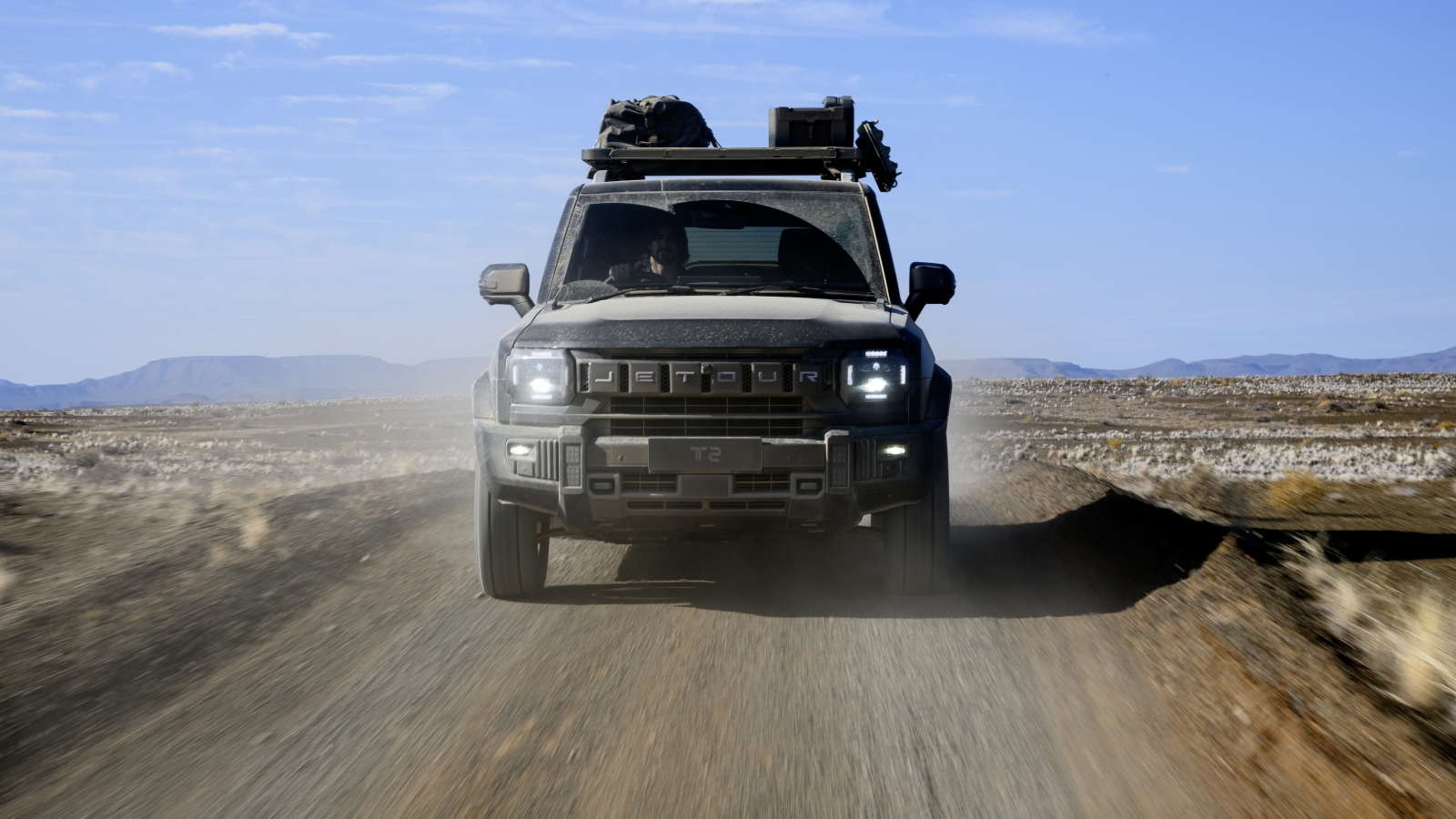
With a design that silhouettes the Land Rover Defender and clearly targets South African buyers who have embraced the Tank 300, the Jetour T2 is up against 2 of the most proven adventure 5-door wagons (from GWM and Toyota, and another outlier Japanese family SUV with real off-road credentials.
The high-spec Jetour T2 retails for R679 900 (October 2025) and is packed with features. But how does it compare to established South African adventure SUVs?
GWM Tank 300 Super Luxury 2.4 TD
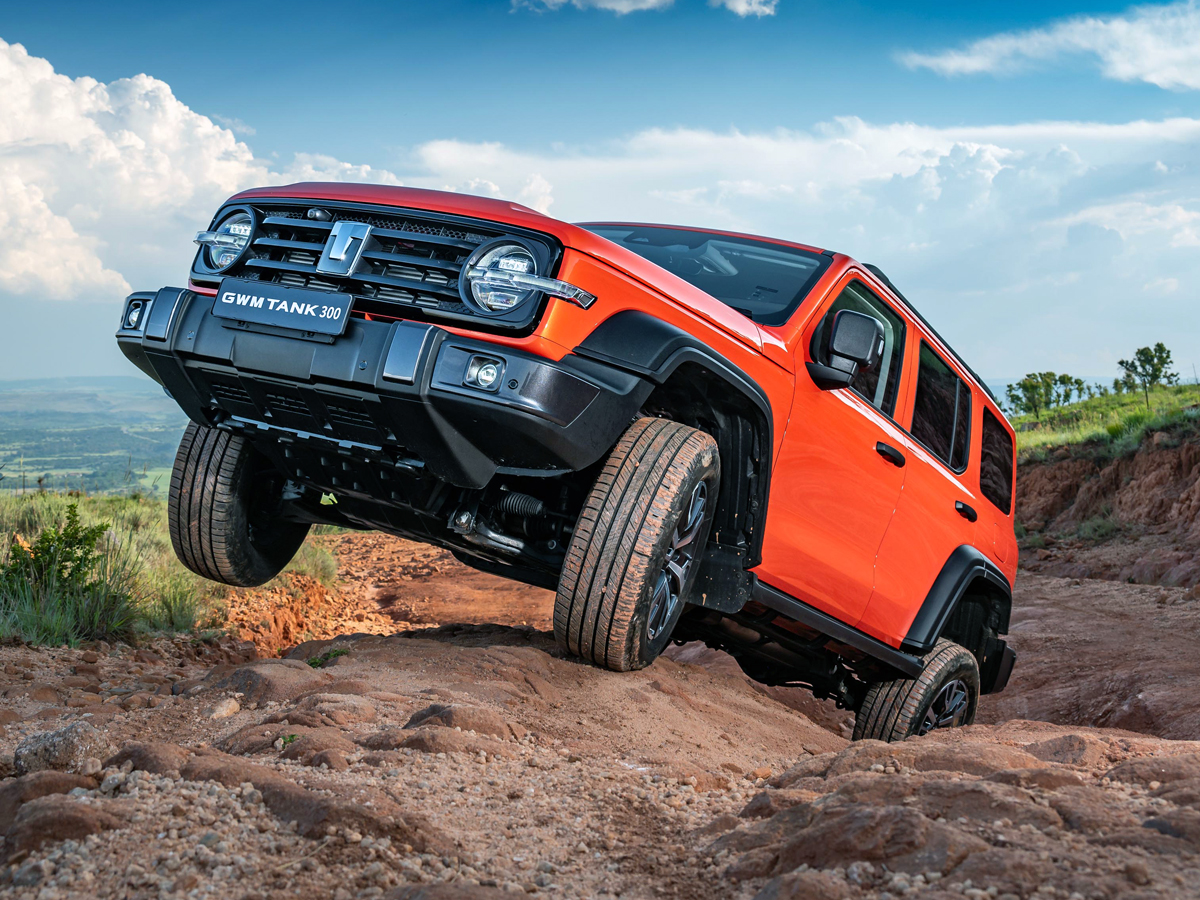
Like Jetour T2, the GMW Tank 300 is styled in the 2-box vehicle form to appeal to those who are partial to traditional 4×4 station wagon aesthetics. Solidly engineered, with a body-on-frame platform and a solid rear axle, this GWM has the off-road capability to support its adventure-wagon appearance.
The GWM Tank 300 2.4TD 4WD, priced from R699 900 (October 2025), can’t match a Jetour T2’s most powerful 2.0-litre 4-cylinder turbopetrol mill for high-speed overtaking, but the GWM should be more economical. And with more constant throttle responses, when navigating really technical terrain.
Watch Ciro De Siena’s GWM Tank 300 Diesel video review:
Low-range and a solid rear axle make the GWM Tank 300 notably more capable off-road than the Jetour T2; turbodiesel versions of the model are wildly popular with South African buyers.
Find a new/used GWM Tank 300 listed for sale on Cars.co.za
Toyota Fortuner 2.4 GD6 4×4 Auto
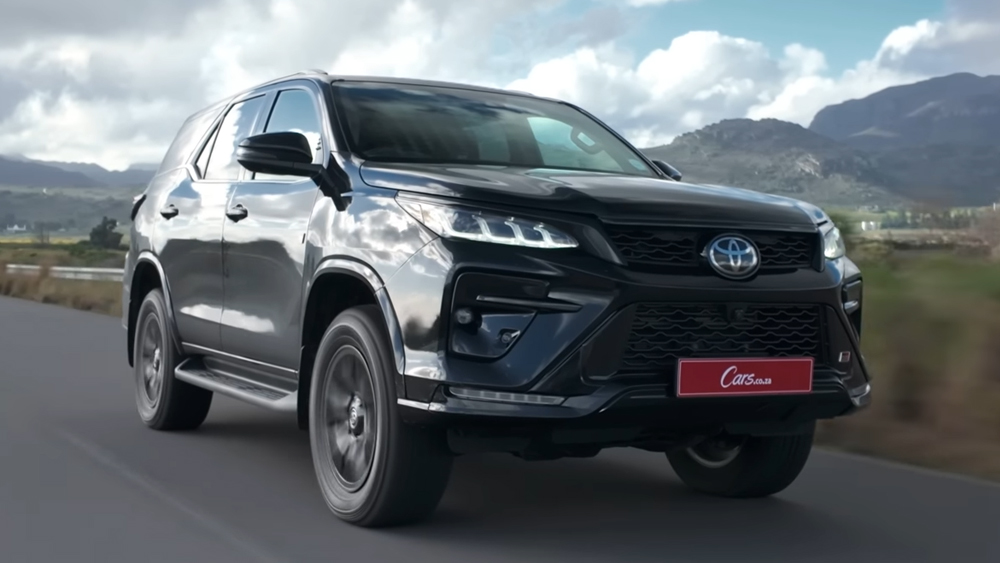
Nearly aged out, but still the class standard 5-door off-road SUV for South African families. Feature-for-feature, the T2 offers much better trim and equipment levels than the Fortuner.
The entry-level 2.4 GD-6 4×4 auto (R739 100 in October 2025) has antiquated 3rd-row seating, a very old-school 6-speed auto transmission, and an engine that seems wildly underpowered compared to the Jetour T2. The Fortuner 2.4-litre turbodiesel only makes 110 kW, but its 400 Nm really matters off-road.
Watch Ciro De Siena’s video review of a 2023 Toyota Fortuner:
The Fortuner doesn’t have class-leading angles or clearances, but it’s a well-proven and, therefore, top-selling Adventure SUV. And unlike the Jetour T2, it has a low-range gearing and a solid rear axle. Since the current-generation Fortuner was launched locally nearly a decade ago, thousands of these vehicles have explored the most challenging Southern African trails and backcountry routes without issue.
When you own an all-terrain vehicle and use it as intended, Toyota South Africa Motors’ vast and credible dealer network across South Africa makes a big difference, too.
Find a new/used Toyota Fortuner listed for sale on Cars.co.za
Mitsubishi Pajero Sport 2.4DI-D 4×4 Auto
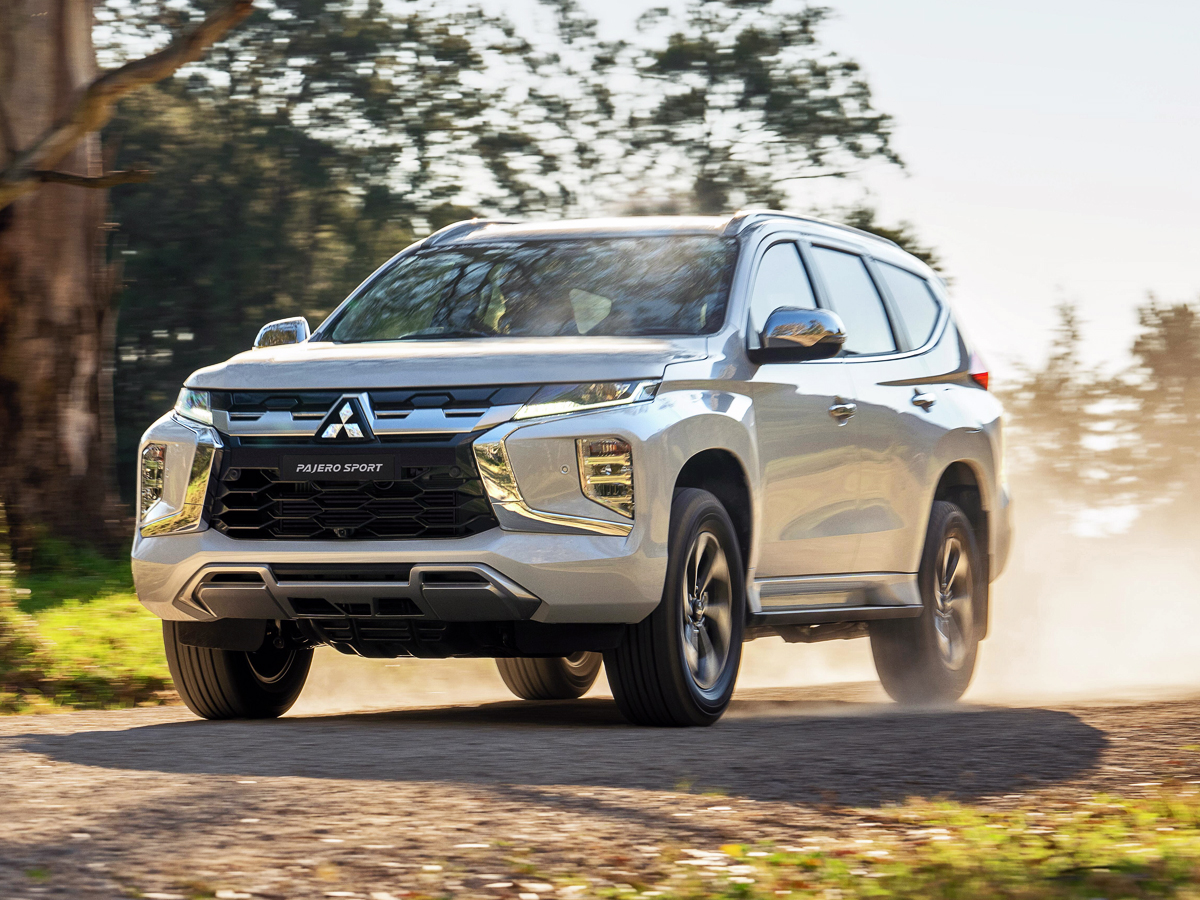
Most expensive of the Jetour T2 rivals, but possibly the best SUV of all. Vastly underrated in South Africa, the Mitsubishi Pajero Sport 2.4DI-D 4×4 (R854 990, in October 2025) combines terrific all-terrain driving ability with spaciousness and bombproof Mitsubishi build quality.
The 2.4-litre 4-cylinder turbodiesel engine produces 133 kW/430 Nm, which is decent enough, but it’s the Pajero Sport’s Super Select II transmission and transfer case that make the difference. It’s capable of running as a true all-wheel-drive system at high speeds, unlike the default 50:50 torque split that most transfer cases deliver when you select ‘4H’ for dirt-road driving. Or high-speed sand driving.
Why does that matter? Because you don’t want the terminal understeer of a 50:50 drive split, when you need better steering authority and responses, mid-way through a high-speed gravel road sweep, deep in the Karoo. The Pajero Sport is still very much the thinking SUV owners’ all-terrain vehicle.
Find a new/used Mitsubishi Pajero Sport listed for sale on Cars.co.za
